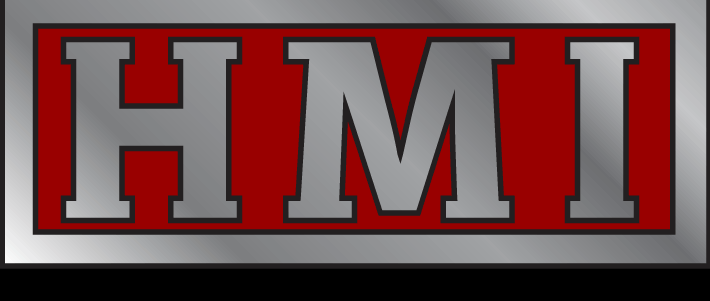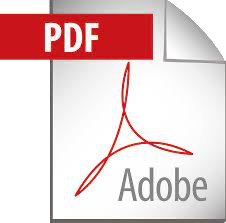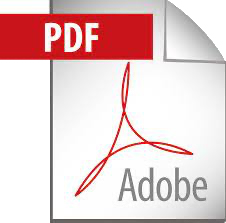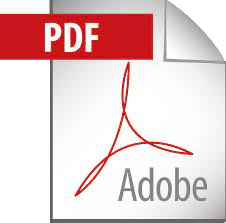Push-up Blade Manual
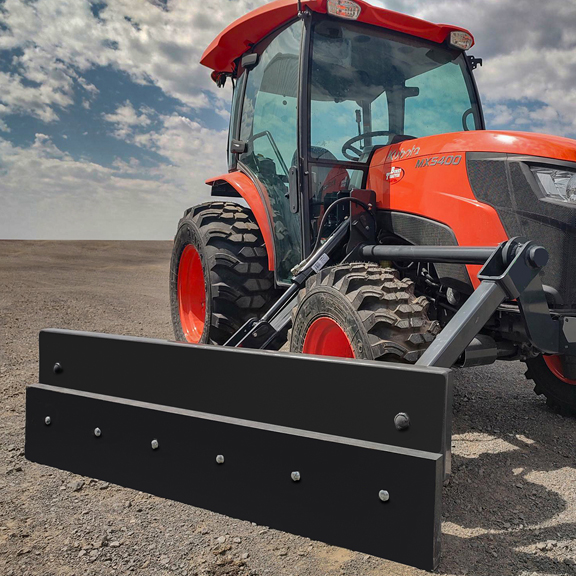
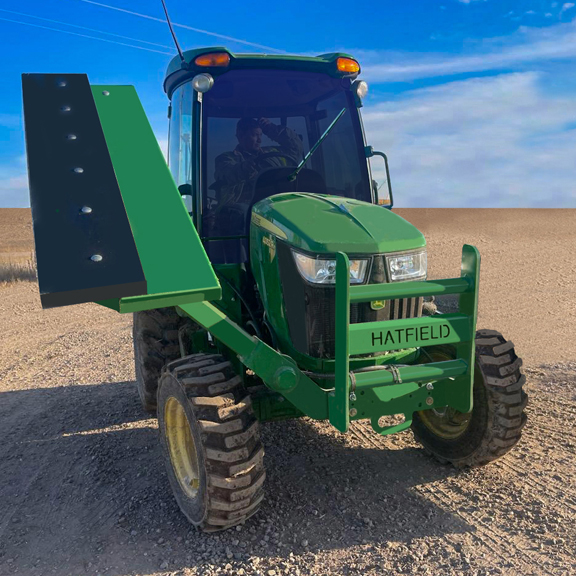
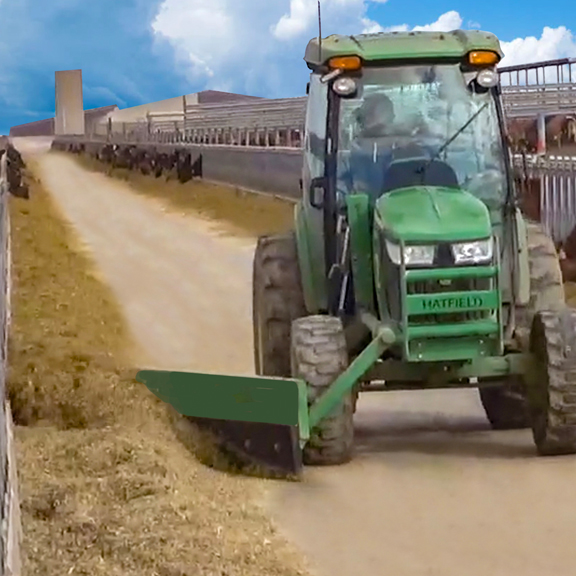
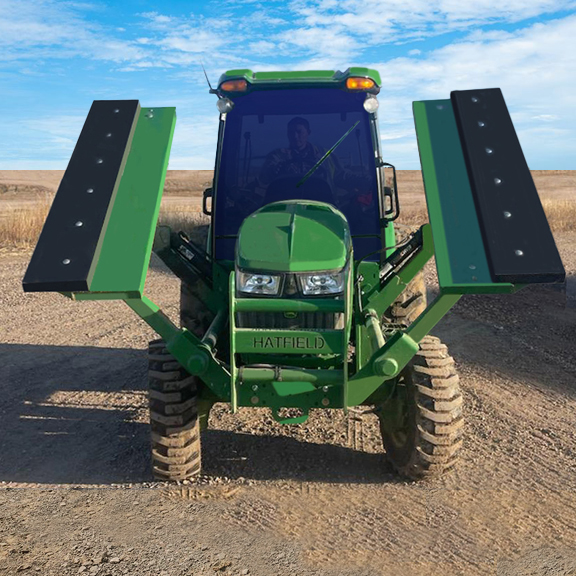
Listed below are common practices that may or may not be applicable to the products described in this manual.
Look for the Safety Alert Symbol
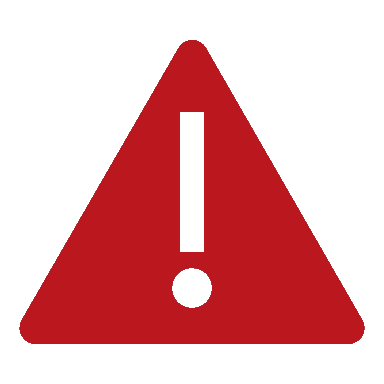
The SAFETY ALERT SYMBOL indicates there is a potential hazard to personal safety and extra precaution must be taken. When you see this symbol, be alert and carefully read the message that follows it. Hazard control, and accident prevention are dependent upon the awareness, concern, prudence and proper training of personnel involved in the operation, transport, maintenance, and storage of equipment.
Be Aware of Signal Words
A signal word designates a degree or level of hazard seriousness. They are:
DANGER:
Indicates a hazardous situation that, if not avoided, will result in death or serious injury.
WARNING:
Indicates a hazardous situation that, if not avoided, could result in death or serious injury.
Listed below are common practices that may or may not be applicable to the products described in this manual.
Safety at All Times
Careful operation is your best assurance against an accident. All operators, no matter how much experience they may have, should carefully read this manual and other related manuals before operating this power machine and this implement.
- Thoroughly read and understand the “Safety Label” section. Read all instructions noted on them.
- Do not operate the equipment while under the influence of drugs or alcohol as they impair the ability to safely and properly operate the equipment.
- The operator should be familiar with all functions of the power machine and attached implement, and be able to handle emergencies quickly.
- Keep all bystanders away from equipment and work area.
- Operate power machine and controls from the driver’s seat only.
- Never dismount from a moving power machine or leave power machine unattended with engine running.
- Do not allow anyone to stand between implements and power machine while attempting to connect or disconnect them.
- Keep hand, feet and clothing away from power-driven parts.
- While transporting and operating equipment, watch out for objects overhead and along side such as fences, trees, buildings, wires, etc.
- Do not turn power machine so tight as to cause hitched implement to contact the power machine’s rear wheel.
- Store implement in a safe and secure area where children do not plate. When needed, secure implement against falling with support blocks and/or shipping locks.
Safety Precautions for Children
Tragedy can occur if the operator is not alert to the presence of children. Children are generally attracted to implements and their work.
- Never assume children will remain where you last saw them.
- Keep children out of the work area and under the watchful eye of a responsible adult.
- Be alert and shut the implement and power machine down if children enter the work area.
- Never carry children on the power machine or implement. There is not a safe place for them to ride. They may fall off and be run over or interfere with the control of the power machine.
- Never allow children to operate the power machine, even under adult supervision.
Power Machine Shutdown & Storage

- If engaged, disengage power take-off.
- Park on solid, level ground and lower implements to ground or onto support blocks.
- Put power machine in part or set park brake
- Turn off engine and remove ignition key to prevent unauthorized starting.
- Relieve all hydraulic pressure to auxiliary hydraulic lines.
- Wait for all components to stop before leaving the operator’s seat.
- Use steps, grab-handles and anti-slip surfaces when stepping on and off the power machine.
Use a Safety Chain
- A safety chain will help control drawn machinery should it separate from the power machine or tow vehicle.
- Use a chain with the strength rating equal to or greater than the gross weight of the towed implement
- Attach the chain to the power machine’s or tow vehicle’s draw bar support or other specified anchor location. Allow only enough slack in the chain to permit turning.
- Always hutch the implement to the machine towing it. Do not use the safety chain to tow the implement.
Tire Safety
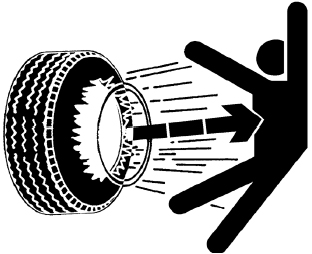
- Tire changing can be dangerous and must be performed by trained personnel using the correct tools and equipment.
- Always properly match the wheel size to the properly sized tire.
- Always maintain correct tire pressure. Do not inflate tires above the recommended pressures shown in the Operator’s Manual or printed on the tires themselves.
- When inflating tires, use a clip-on chuck and extension hose long enough to allow you to stand to one side and NOT in front of or over the tire assembly. Use a safety cage if available.
- Securely support the implement when changing a wheel.
- When removing and installing wheels, use wheel handling equipment adequate for the weight involved.
- Make sure wheel bolts have been tightened to the specified torque.
Practice Safe Maintenance
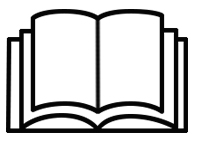
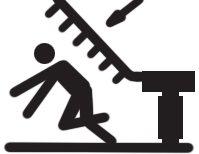
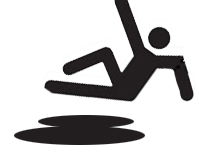
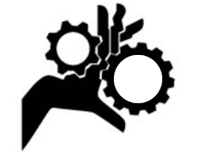
- Understand procedure before doing work. Refer to the Operator’s Manual for additional information.
- Work on a level surface in a clean, dry area that is well-lit.
- Lower implement to the ground and follow all shutdown procedures before leaving the operator’s seat to perform maintenance
- Do not work under any hydraulically supported equipment. It can settle, suddenly lead down, or be lowered accidentally. If it is necessary to work under the equipment, securely support it with stands or suitable blocking beforehand.
- Use properly grounded electrical outlets and tools.
- Use correct tools and equipment for the job that are in good condition.
- Allow equipment to cool before working on it.
- Disconnect battery ground cable (-) before servicing or adjusting electrical systems or before welding on implement.
- Inspect all parts. Make certain parts are in good condition & installed properly.
- Replace parts on this implement with genuine Hatfield parts only. Do not alter this implement in a way which will adversely affect its performance.
- Do not grease or oil implement while it is in operation.
- Remove any buildup of grease, oil, and/or debris.
- Always make sure any material and waste products from the repair and maintenance of the implement are properly collected and disposed.
- Do not weld or torch galvanized metal as it will release toxic fumes.
Prepare for Emergencies
- Be prepared if a fire starts
- Keep a first aid kit and fire extinguisher handy.
- Keep emergency number for doctor, ambulance, and fire department near the phone.
Use Safety Lights and Devices
- A slow-moving power machine can create a hazard when driven on public roads. They are difficult to see, especially at night. Use the Slow-Moving Vehicle (SMV) Sign when on public roads.
- Flashing warning lights and turn signals are recommended whenever driving on public roads.
Wear Personal Protective Equipment
- Wear protective clothing and equipment appropriate for the job such as safety shoes, safety glasses, hard hat, dust mask, and ear plugs.
- Clothing should fit snug without fringes and pull strings to avoid entanglement with moving parts.
- Prolonged exposure to loud noise can cause hearing impairment or hearing loss. Wear suitable hearing protection such as earmuffs or earplugs.
- Operating a machine safely requires the operator’s full attention. Avoid wearing headphones while operating
Use Seat Belt and ROPS
- Use of a CAB or roll-over-protective-structures (ROPS) and seat belt is recommended in almost all power machines.
- If ROPS is in the locked-up position, fasten seat belt snugly and securely to help protect against serious injury or death from falling and machine overturn.
Avoid High Pressure Fluids
- Escaping fluid under pressure will penetrate the skin or eyes causing serious injury.
- Relieve all residual pressure before disconnecting hydraulic lines or performing work on the hydraulic system.
- Make sure all hydraulic fluid connections are properly tightened/torqued and all hydraulic hoses and lines are in good condition before applying pressure to the system.
- Use a piece of paper or cardboards, NOT BODY PARTS, to check for suspected leaks.
- Wear protective gloves and safety glasses or goggles when working with hydraulic systems.
- DO NOT DELAY. If an accident occurs, seek immediate
Keep Riders Off Machinery
- Never carry riders on the tractor or implement.
- Riders obstruct operator’s view and interfere with the control of the power machine.
- Riders can be struck by objects or thrown from equipment.
- Never use the power machine to lift or transport riders.
Avoid Crystalline Silica (quartz) Dust
Because crystalline silica is a basic component of sand and granite, many activities at construction sites produce dust containing crystalline silica. Trenching, sawing and boring of material containing crystalline silica can produce dust containing crystalline silica particles. This dust can cause serious injury to the lungs (silicosis).
There are guidelines which should be followed if crystalline silica (quartz) is present in the dust.
- Be aware of and follow OSHA (or other local, State, or Federal) guidelines for exposure to airborne crystalline silica.
- Know the work operations where exposure to crystalline silica may occur.
- Participate in air monitoring or training programs offered by the employer.
- Be aware of and use optional equipment controls such as water sprays, local exhaust ventilation, and enclosed cabs with positive pressure air conditioning if the machine has such equipment. Otherwise, respirators shall be worn.
- Where respirators are required, wear a respirator approved for protection against crystalline silica containing dust. Do not alter respirator in any way. Workers who use tight-fitting respirators can not have beards/mustaches which interfere with the respirator seal to the face.
- If possible, change into disposable or washable work clothes at the work side; shower and change into clean clothing before leaving the work site.
- Do not eat, drink, use tobacco products, or apply cosmetics in areas where there is dust containing crystalline silica.
Handle Chemicals Properly
- Protective clothing should be worn.
- Handle all chemicals with care.
- Follow instructions on container label.
- Agricultural chemicals can be dangerous. Improper use can seriously injure persons, animals, plants, soil, and property.
- Inhaling smoke from any type of chemical fire can be a health hazard.
- Store or dispose of unused chemicals as specified by the chemical manufacturer.
Dig Safe — Avoid Underground Utilities
- USA: Call 811. CAN: digsafecanada.ca Always contact your local utility companies (electrical, telephone, gas, water, sewer, and others) before digging so that they may mark the location of any underground services in the area.
- Be sure to ask how close you can work to the marks they positioned.
Transport Safely
- Comply with federal, state and local laws.
- Use towing vehicle and trailer of adequate size and capacity. Secure equipment towed on a trailer with tie downs and chains
- Sudden braking can cause a towed trailer to swerve unexpectedly. Reduce speed if towed trailer is not equipped with brakes.
- Avoid contact with any overhead utility lines or electrically charged conductors.
- Always drive with load on end of loader arms low to the ground.
- Always drive straight up and down steep inclines with heavy end of skid steer on the “uphill” side
- Maximum transport speed for an attached equipment is 20 mpg (32km/h). DO NOT EXCEED
- As a guideline, use the following maximum speed weight ratios for attached equipment: 20 mph (32 km/h) when weight of attached equipment is less than or equal to the weight of the tow vehicle. 10 mph (16 km/h) when weight of attached equipment exceeds the weight of the tow vehicle but not more than double the weight.
- IMPORTANT: Do not tow a load that is more than double the weight of the vehicle towing the load.
Safety Labels
Your Push Blade comes equipped with all safety labels in place. They were designed to help you safely operate your equipment. Read and follow their directions.

- Keep all safety labels clean and legible.
- Refer to this section for proper label placement. Replace all damaged or missing labels. Order new labels from www.hatfieldmfg.com.
- Some new equipment installed during repair requires safety labels to be affixed to the replaced component as specified herein. When ordering new components make sure the correct safety labels are included in the request.
- Refer to this section for proper label placement. To install new labels: Clean Surface area where label is to be placed. Spray soapy water onto the cleaned area. Peel backing from label and press label firmly onto the surface. Squeeze out air bubbles with edge of a credit card or with a similar type of straight edge.
Labels for your Push-up Blade are sold in packages containing all the safety labels you need.
When buying a Push Blade, or replacing parts on an existing Push Blade you own, do these 3 simple steps before calling Hatfield Manufacturing.
1
Determine the make and model of your tractor. (this can usually be found on the hood)
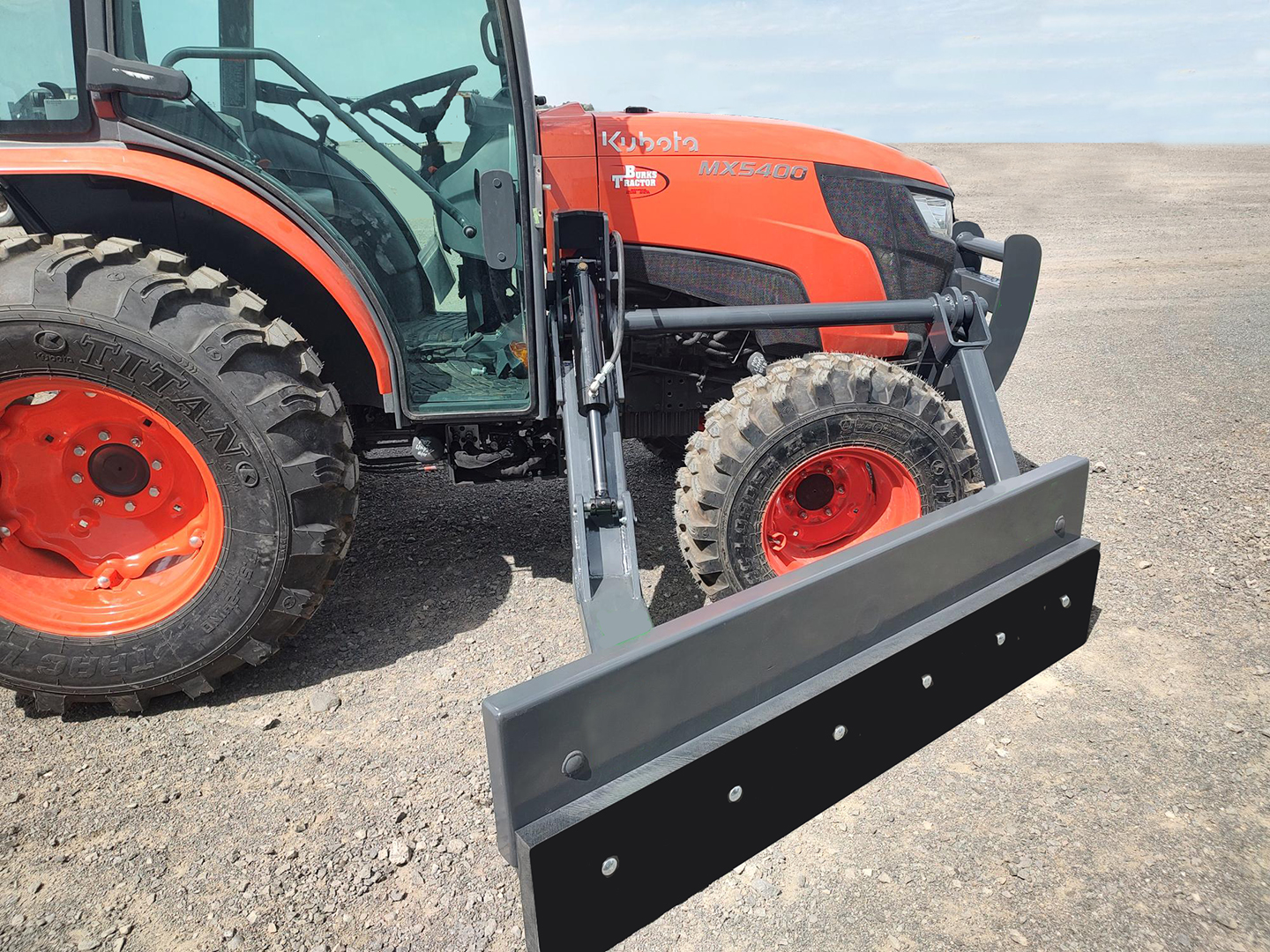
Example: 5400 Kubota
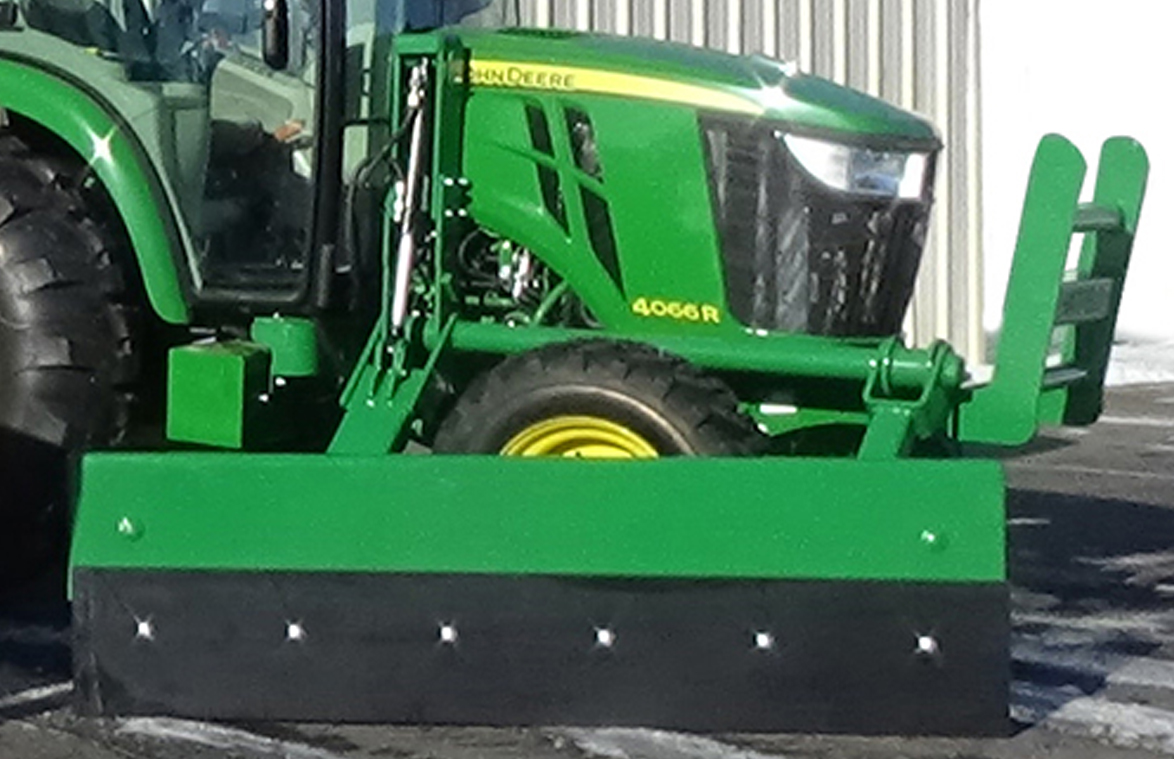
Example: John Deere - 4066
2
Determine the side it is mounted on. When seated in the tractor, it corresponds to your left or right side.

Example: Right Side or Left side
3
Determine if it is a groomer / push blade or a combo
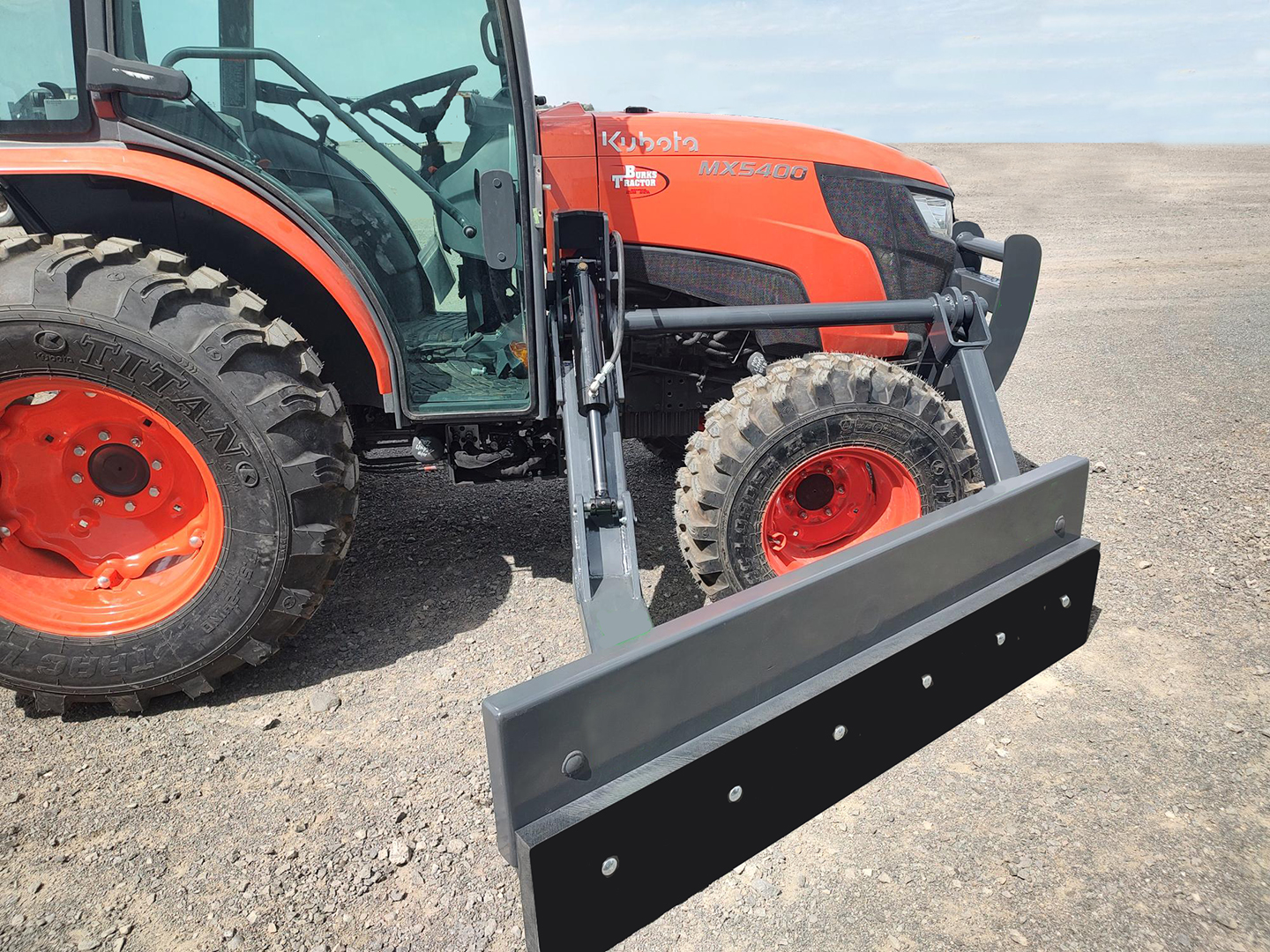
Example: Push blade.
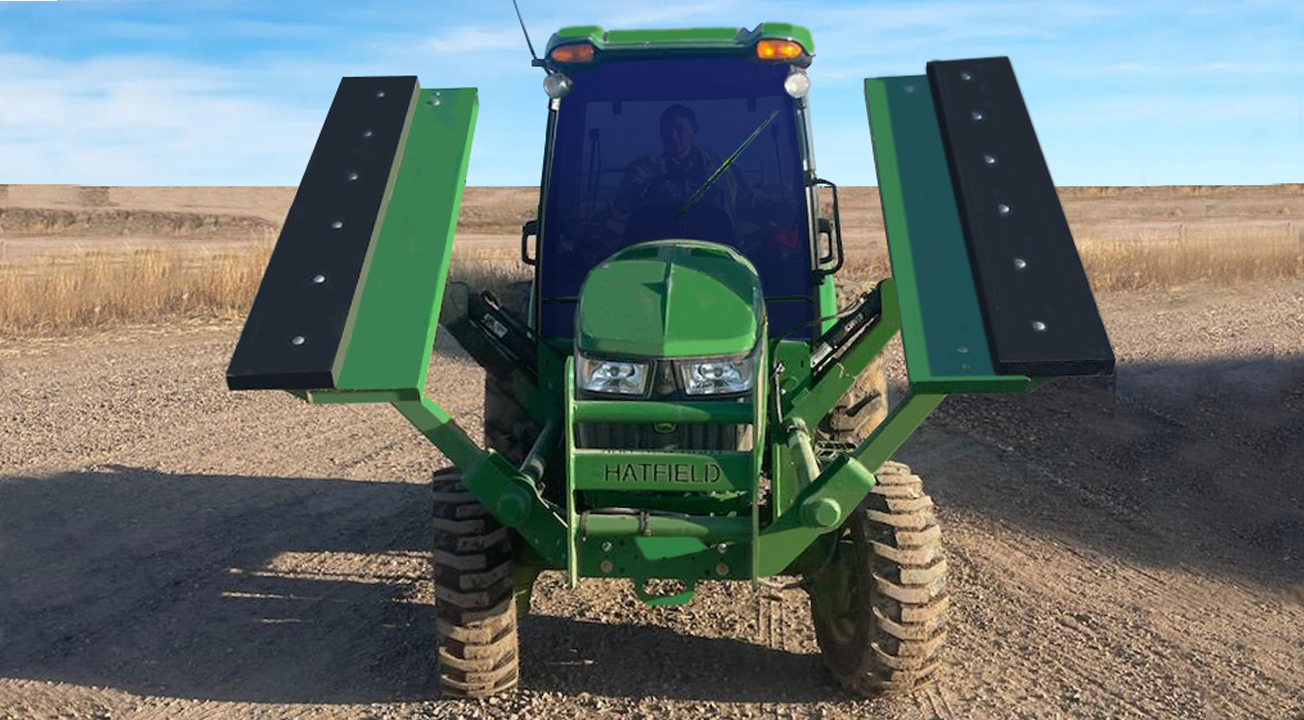
Example: Double Push blade.

Example: Groomer/push blade combo
Record your machine details: Serial Number, Model Number and Delivery Date.
Introduction
Hatfield Manufacturing designed this push-up blade with care and built it with skilled workers using quality materials. Proper maintenance and safe operating practices will help you get years of satisfactory use.
Application
Push-up Blades are designed and built by Hatfield Manufacturing to push grain and feed to the bunk, keeping cows there for feed intake.
Using this Manual
- This Operator’s Manual is designed to help familiarize you with safety, operation, adjustments, troubleshooting, and maintenance. Read this manual and follow the recommendations to help ensure safe and efficient operation.
- The information contained within this manual was current at the time of printing. Some parts may change slightly to assure you of the best performance.
- To order a new Operator’s or Parts Manual, visit our website at www.hatfieldmfg.com.
Terminology
- “Right” or “Left” as used in this manual is determined based on the operator sitting in the power machine facing forward.
- “Clockwise” or “Counterclockwise” as used in this manual is determined based on the operator facing forward, seated on the power machine, looking down “through” the implement, or looking to the Right.
- “Standard” or “Reverse” as used in this manual in reference to Tines means the direction the tine is meant to spin. Standard is Clockwise, Reverse is Counterclockwise.
Owner Assistance
- The parts on your Push-up Blade have been specially designed by Hatfield Manufacturing and should only be replaced with genuine Hatfield Parts. Contact us if customer service or repair parts are required.
Serial Number
- For quick reference and prompt service, record the serial and model number. Always provide the serial number when ordering parts and in all correspondences with Hatfield Mfg., or the Dealer you purchased your Push-up Blade from. Your Serial Number can be located on your machine by referencing the picture below.
John Deere 4 Series
Push-up Blade Installation Guide
Congratulations on your purchase of a Push-up Blade from Hatfield Manufacturing!
Follow these steps to install your blade on your tractor Note: Your blade kit was designed to fit your JOHN DEERE 4 SERIES tractor, but the install process is virtually identical across most open-station/cab makes and models.
Kit Includes:
- (1) Bolt Kit
- (1) Main Push-up Blade Assembly
- (1) Under Belly Support
- (1) Front Bumper
- (1) Rear Base Plate (For 1 Implement)
- (2) Mount Spacers (If no cab)
- (1) Valve Stand (If no cab)
Before beginning install process READ ALL WARNINGS, SAFETY PRECAUTIONS, AND SAFETY STICKERS Refer to website for maintenance, bolts, and hydraulics information
Step One
Locate the 4 bolt holes we will be using on the right-hand side, left-hand side, and front bumper of the Tractor. They may have bolts or plastic inserts in them that will need to be removed. No drilling should be required. Also, check the fit of the bolts provided prior to moving the main blade assembly into place.

Step Two
If your model does not have a cab install the provided Mount Spacers to both sides of Tractor.
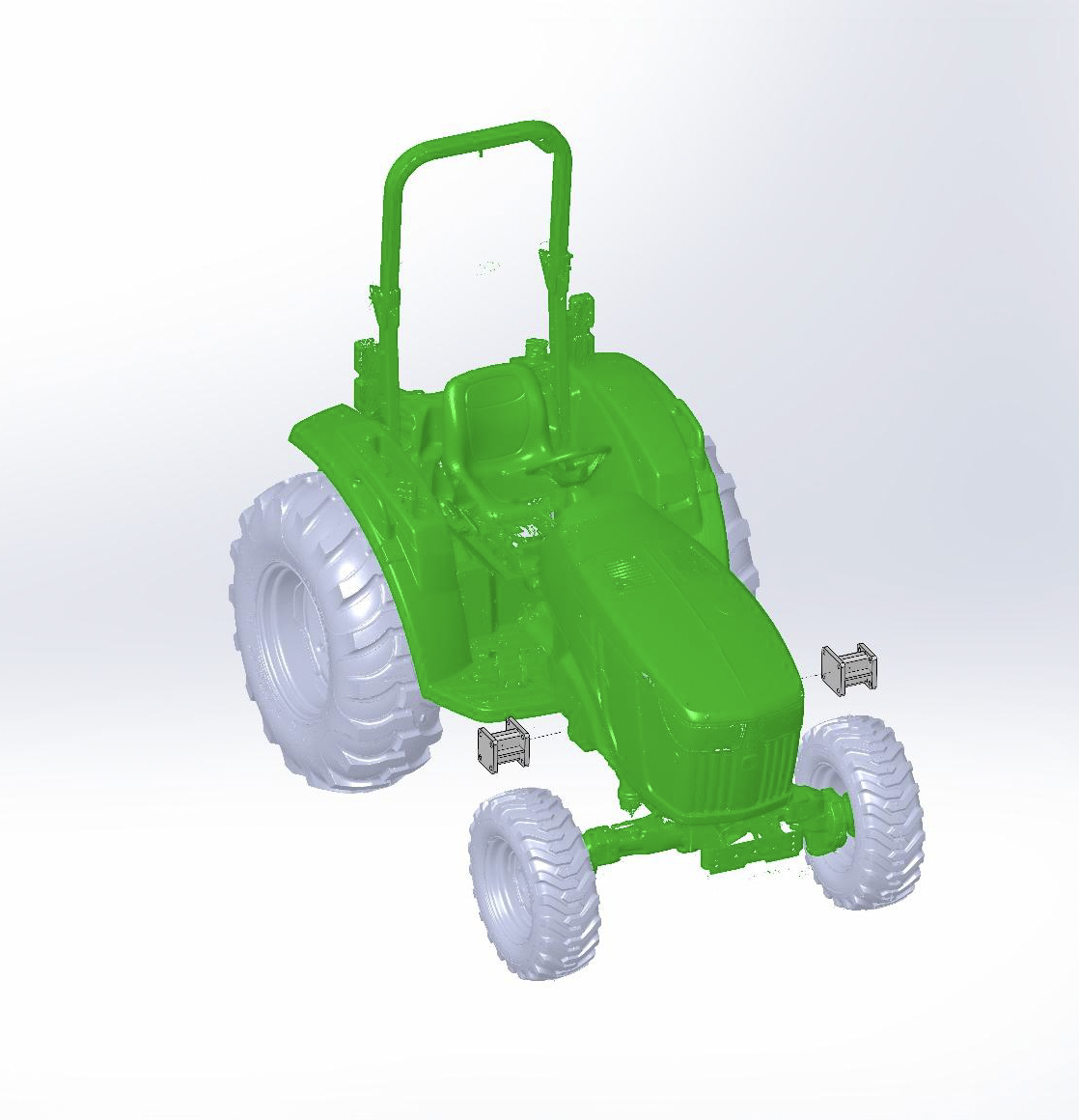
Step Three
If 1 implement attach the left base plate and underbelly support first. Then bring the Main Blade Assembly up to the tractor and attach them loosely to the side and the front of the tractor as shown. The brush guard attaches to the front using the same bolts, it can also be added now. Don’t fully tighten while mounting the implements.
If 2 implements bring the right-side implement first then left-side implement. Attach the underbelly support to the rear uprights. The brush guard attaches to the front using the same bolts, it can also be added now. Don’t fully tighten while mounting the implements.
If an open-station model attach the valve stand during this time.
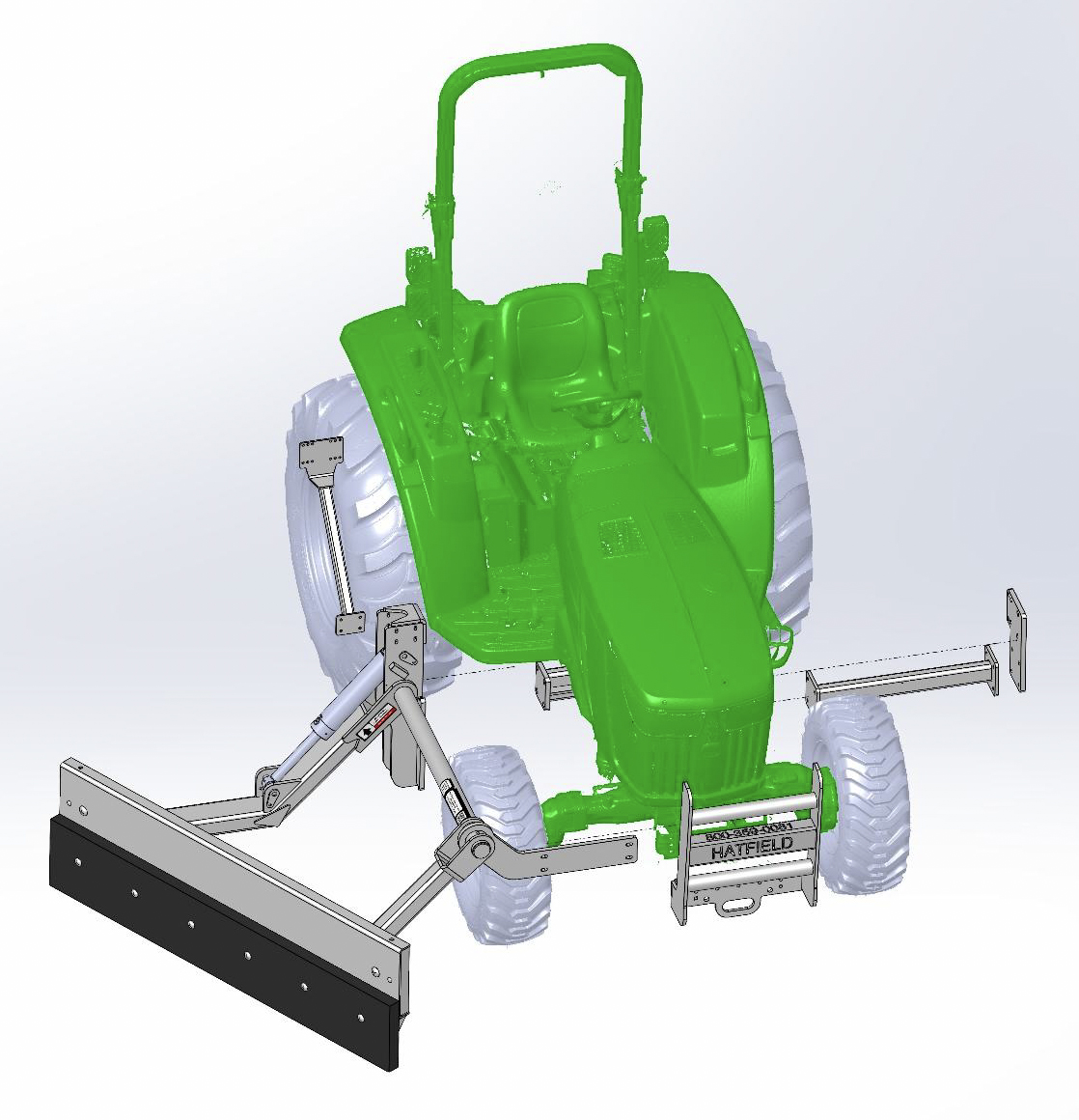
Step Four
Attach hydraulic cylinder at both ends if it isn’t already and tighten everything down.
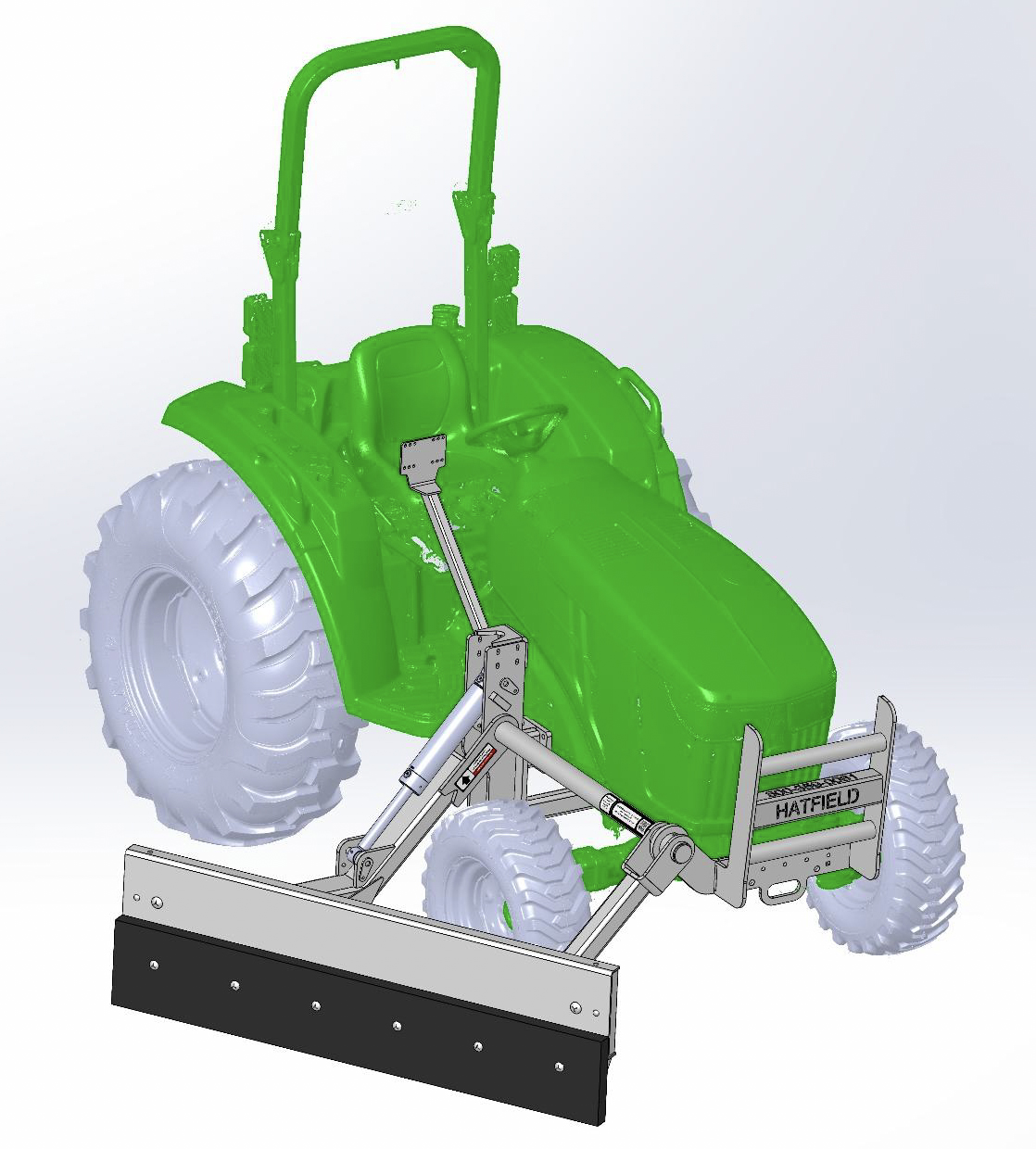
Step Five
Hydraulic Connections will vary by Model. The photos on this page may differ from your install. As with any tractor hydraulic remote, if it functions “backwards” just switch the lines.
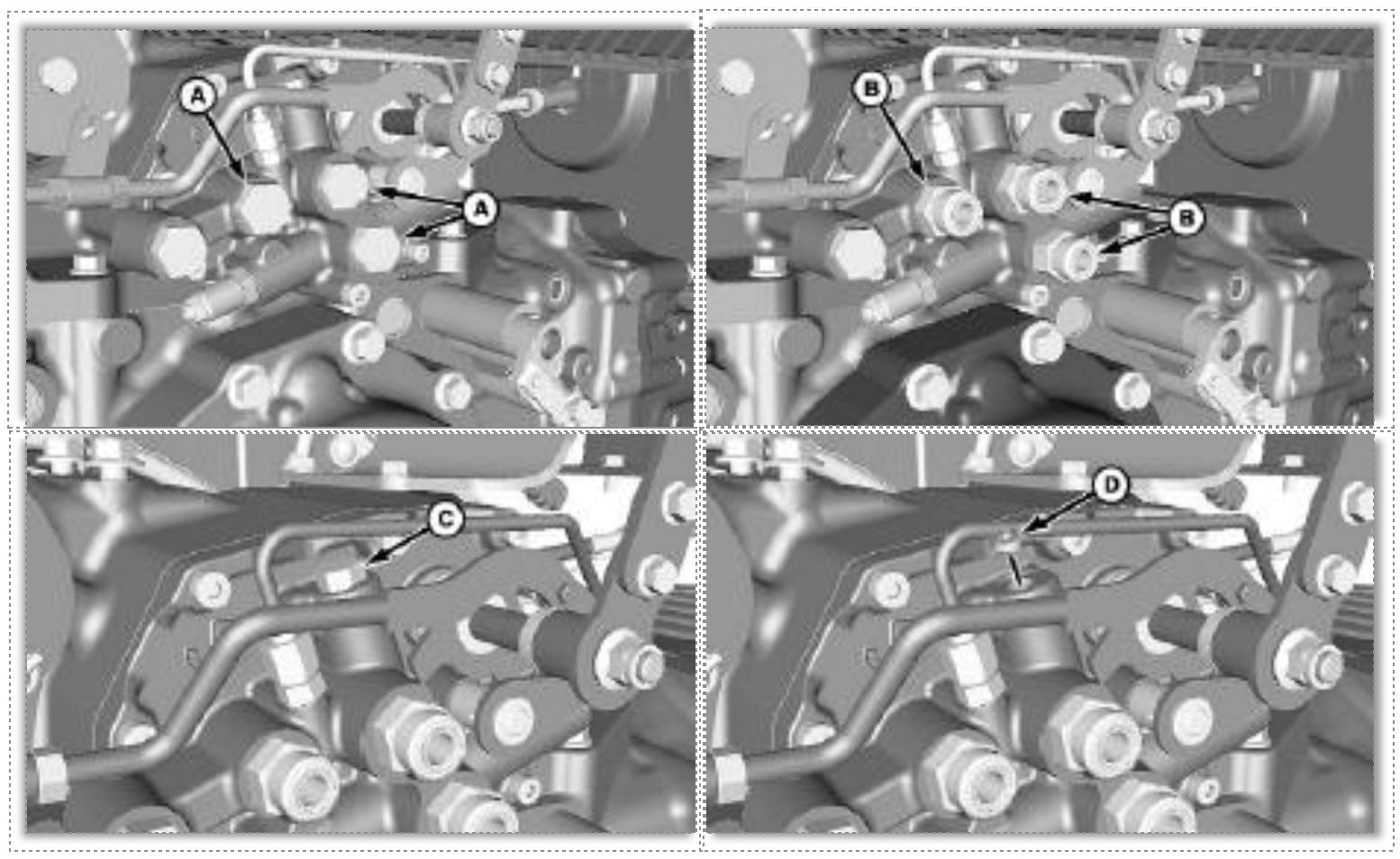
A-Oil Line, Drain (2 used) B-Oil Line, Return (2 used) C-Oil Line, Pressure (2 used) D-Fittings (3 used)
IMPORTANT: Loader will not function if pipe plug (D) is not installed. NOTE: Right-hand side rear tire and fender
- Remove and discard plugs (A).
- Install fittings (B) as shown and tighten to specification.
- Remove and retain plug (C)
- Install pipe plug (D) into internal tractor housing located inside hole as shown.
- Install previously removed plug (C) and tighten to specification
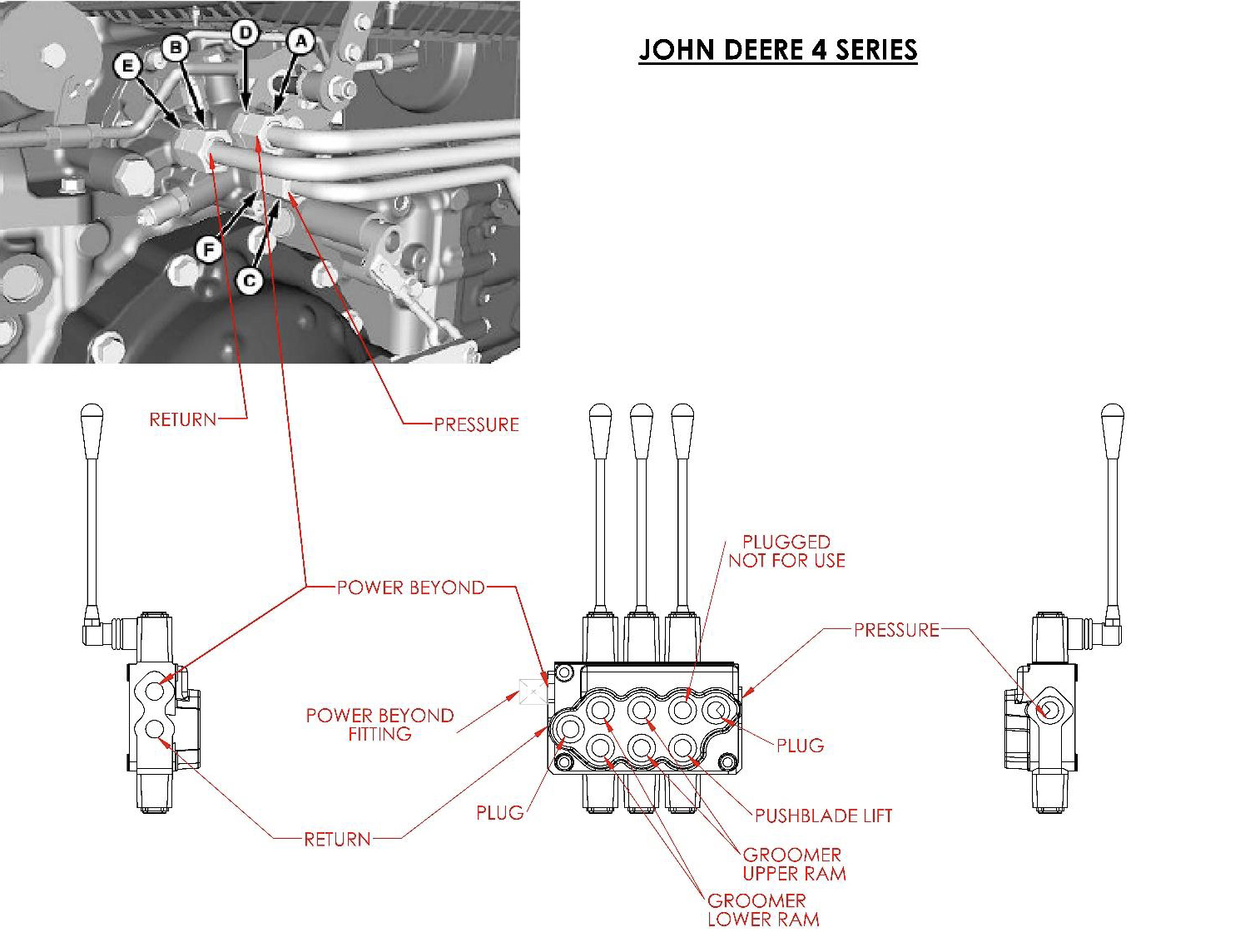
A-Fitting, Power Beyond B-Fitting, Return Oil Line C-Fitting, Pressure Oil Line D-Fitting E- Fitting F-Fitting
- Remove protective plugs (if equipped) from oil lines.
- Install return oil line fitting (B) to fitting (E).
- Install drain oil line fitting (B) to fitting (E).
- Install power beyond oil line fitting (A) to fitting (D).
- Install pressure oil line fitting (C) to fitting (F). Tighten oil line fittings to specification.
- Oil Line Fittings (A-C) Torque - 37 N-m (27 lb-ft)
- 5. Fill hydraulic fluid to proper level. (Refer to tractor Operator’s manual)
John Deere 5 Series
Push-up Blade Installation Guide
Congratulations on your purchase of a Push-up Blade from Hatfield Manufacturing!
Follow these steps to install your blade on your tractor Note: Your blade kit was designed to fit your JOHN DEERE 5 SERIES tractor, but the install process is virtually identical across most open-station/cab makes and models.
Kit Includes:
- (1) Bolt Kit
- (1) Main Push-up Blade Assembly
- (1) Front Bumper
- (1) Rear Spacer (1 Per Implement)
- (2) Front spacers
- (1) Exhaust Bracket (2023-Present Models)
- (1) Valve Stand (If no cab)
Before beginning install process READ ALL WARNINGS, SAFETY PRECAUTIONS, AND SAFETY STICKERS Refer to website for maintenance, bolts, and hydraulics information
Step One
Locate the 6 bolt holes we will be using on the right-hand side, left-hand side (for 2 implements), and 4 bolt holes for the front bumper of the tractor. They may have bolts or plastic inserts in them that will need to be removed. No drilling should be required. Also, check the fit of the bolts provided prior to moving the main blade assembly into place.
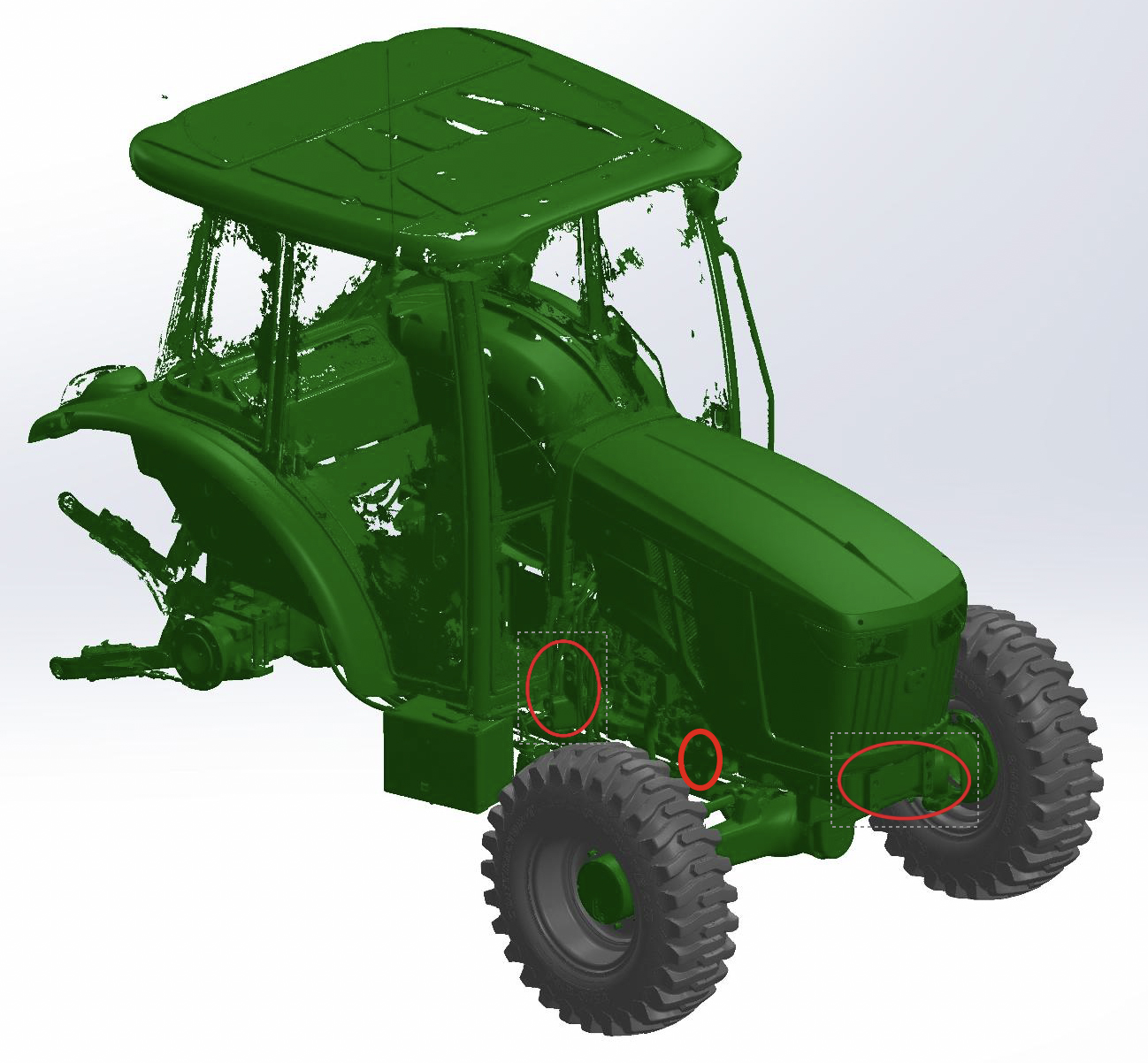
Step Two
If 1 implement have the spacers in the general area for assembly. Then bring the Main Blade Assembly up to the tractor and attach them loosely to the side and the front of the tractor as shown ensuring front and rear spacers are in the correct spots. The brush guard attaches to the front using the same bolts, it can also be added now. Don’t fully tighten while mounting the implements.
If 2 implements bring the right-side implement first, then left-side implement. Don’t forget the rear spacer for the 2nd implement. The brush guard attaches to the front using the same bolts, it can also be added now. Don’t fully tighten while mounting the implements.
If an open-station model attach the valve stand during this time. If 2023 or newer model attach exhaust bracket.
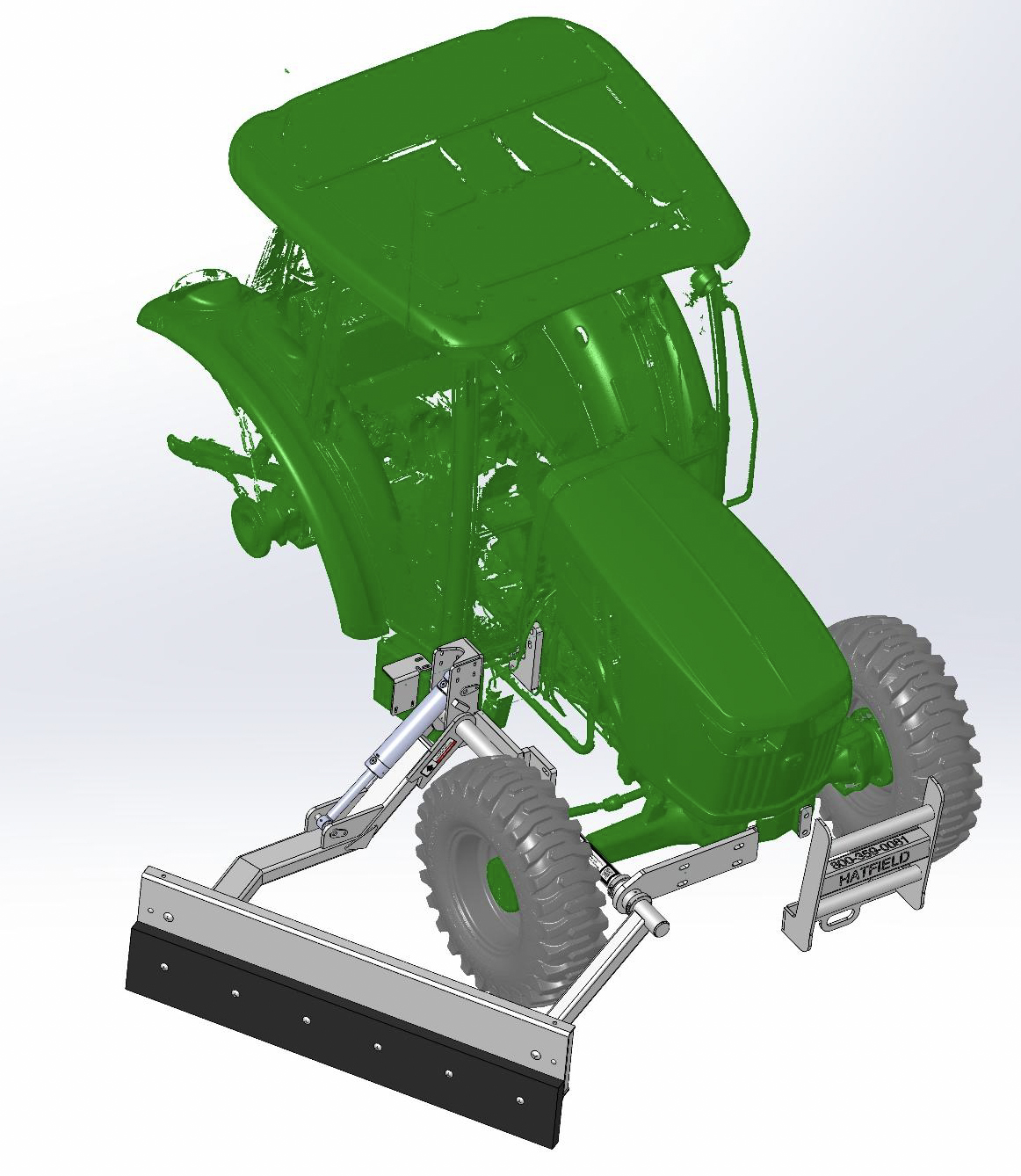
Step Three
Attach hydraulic cylinder at both ends if it isn’t already and tighten everything down.
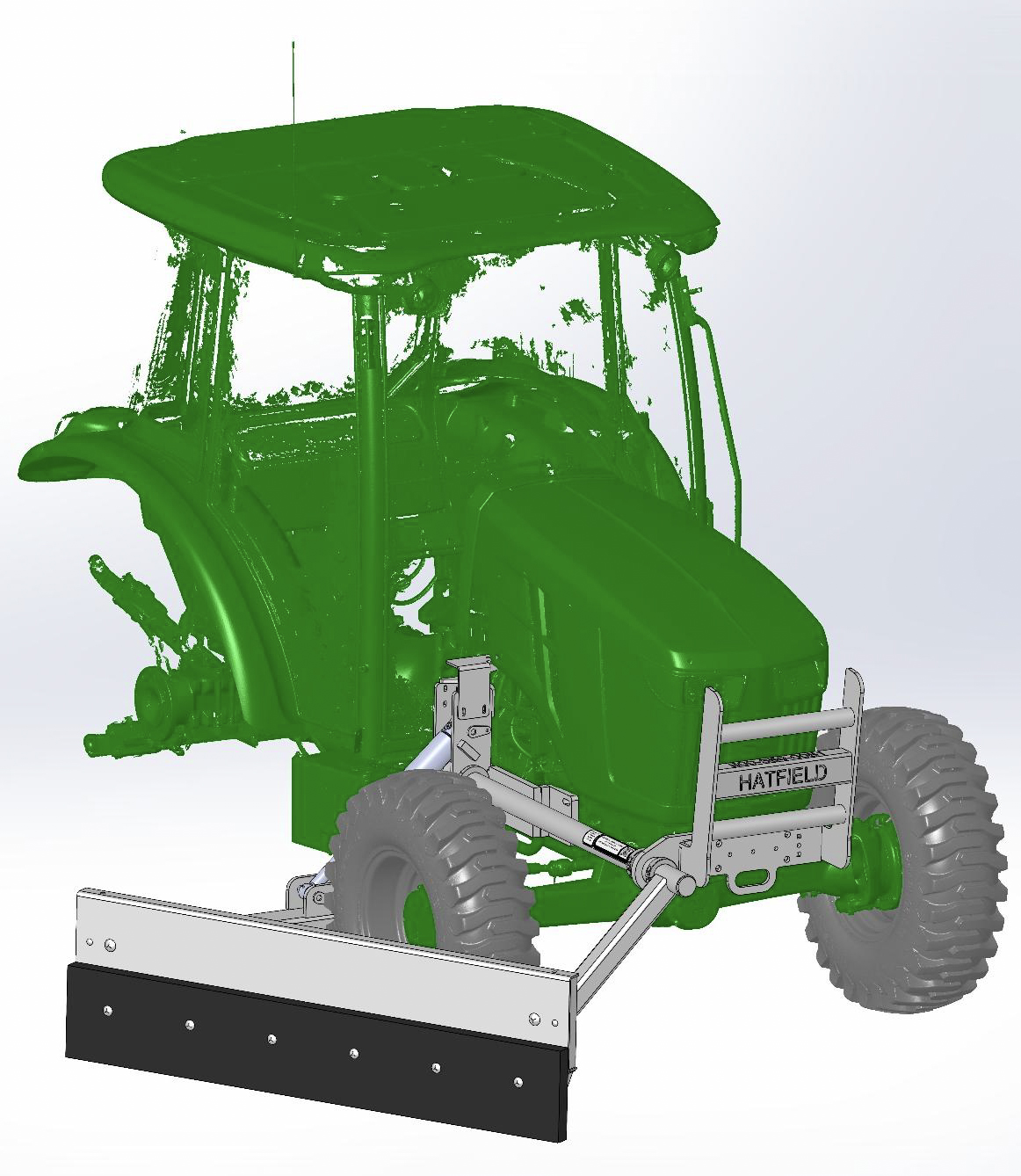
Step Four
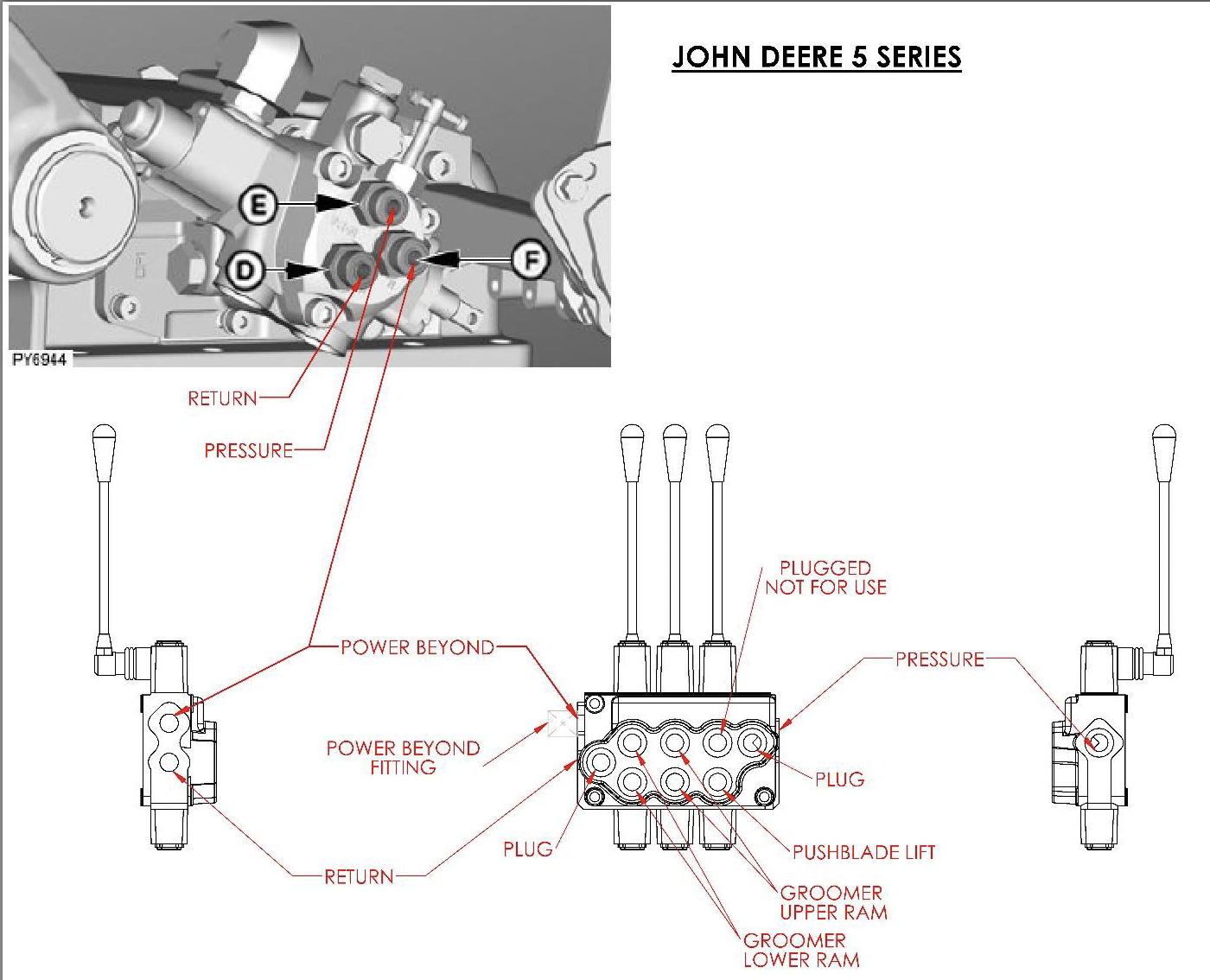
A-Oil Line, Drain (2 used) B-Oil Line, Return (2 used) C-Oil Line, Pressure (2 used) D-Fittings (3 used)
IMPORTANT: Loader will not function if pipe plug (D) is not installed. NOTE: Right-hand side rear tire and fender
- Remove and discard plugs (A).
- Install fittings (B) as shown and tighten to specification.
- Remove and retain plug (C)
- Install pipe plug (D) into internal tractor housing located inside hole as shown.
- Install previously removed plug (C) and tighten to specification
A-Fitting B-Fitting C-Fitting D-Fitting, Return Oil Line E- Fitting, Pressure Oil Line F-Fitting, Power Beyond
Kubota MX Series Tractors
Push-up Blade Installation Guide
Congratulations on your purchase of a Push-up Blade from Hatfield Manufacturing!
Follow these steps to install your blade on your tractor. Note: Your blade kit was designed to fit your KUBOTA MX5400 tractor, but the install process is virtually identical across most open-station/cab makes and models.
Kit Includes:
- (1) Bolt Kit
- (1) Main Push-up Blade Assembly
- (1) Under Belly Support
- (1) Front Bumper
- (1) Rear Base Plate (For 1 implement)
- (1) Valve Box (If cab)
- (1) Valve Stand (If no cab)
Before beginning install process READ ALL WARNINGS, SAFETY PRECAUTIONS, AND SAFETY STICKERS Refer to website for maintenance, bolts, and hydraulics information
Step One
Locate the 4 bolt holes we will be using on the right-hand side, left-hand side, and front bumper of the Tractor. They may have bolts or plastic inserts in them that will need to be removed. No drilling should be required. Also, check the fit of the bolts provided prior to moving the main blade assembly into place.
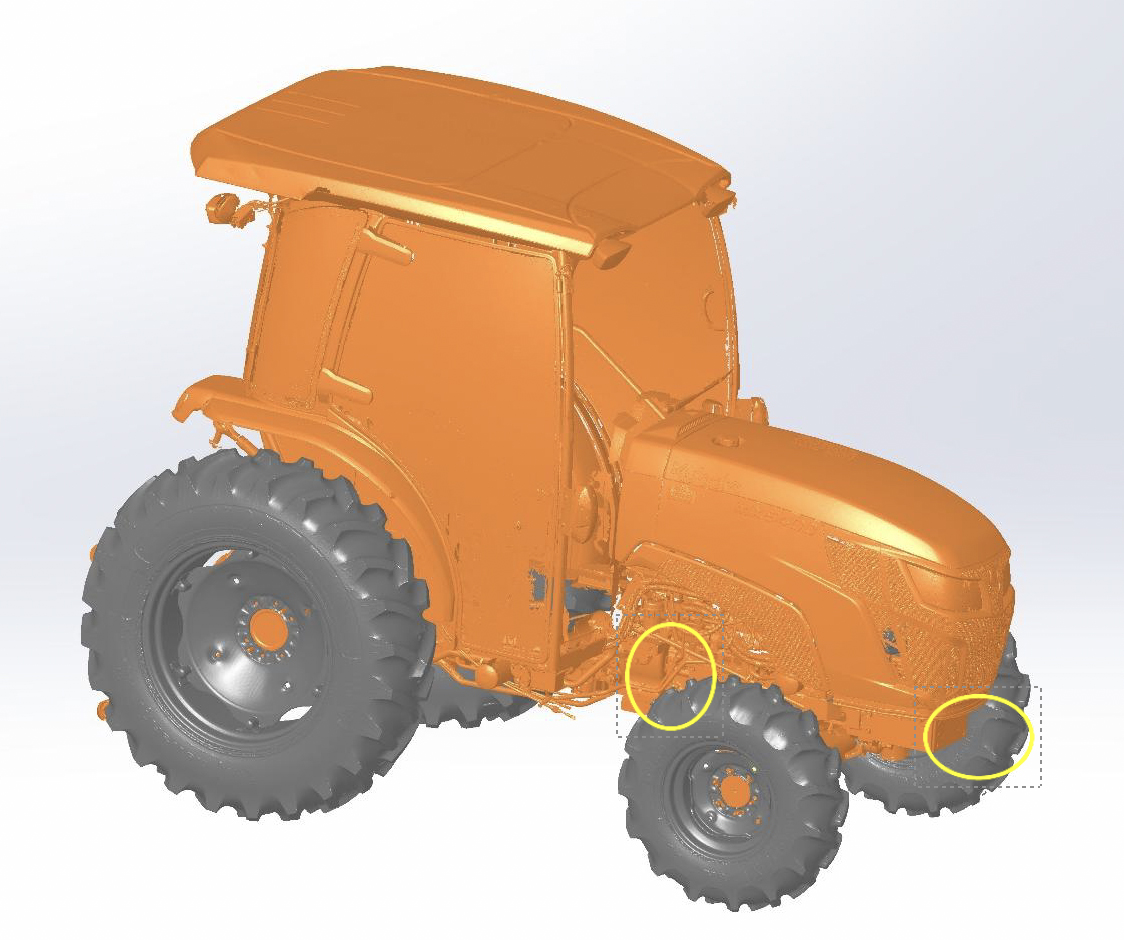
Step Two
If you have one implement install the left base plate and under support not fully tightening bolts.
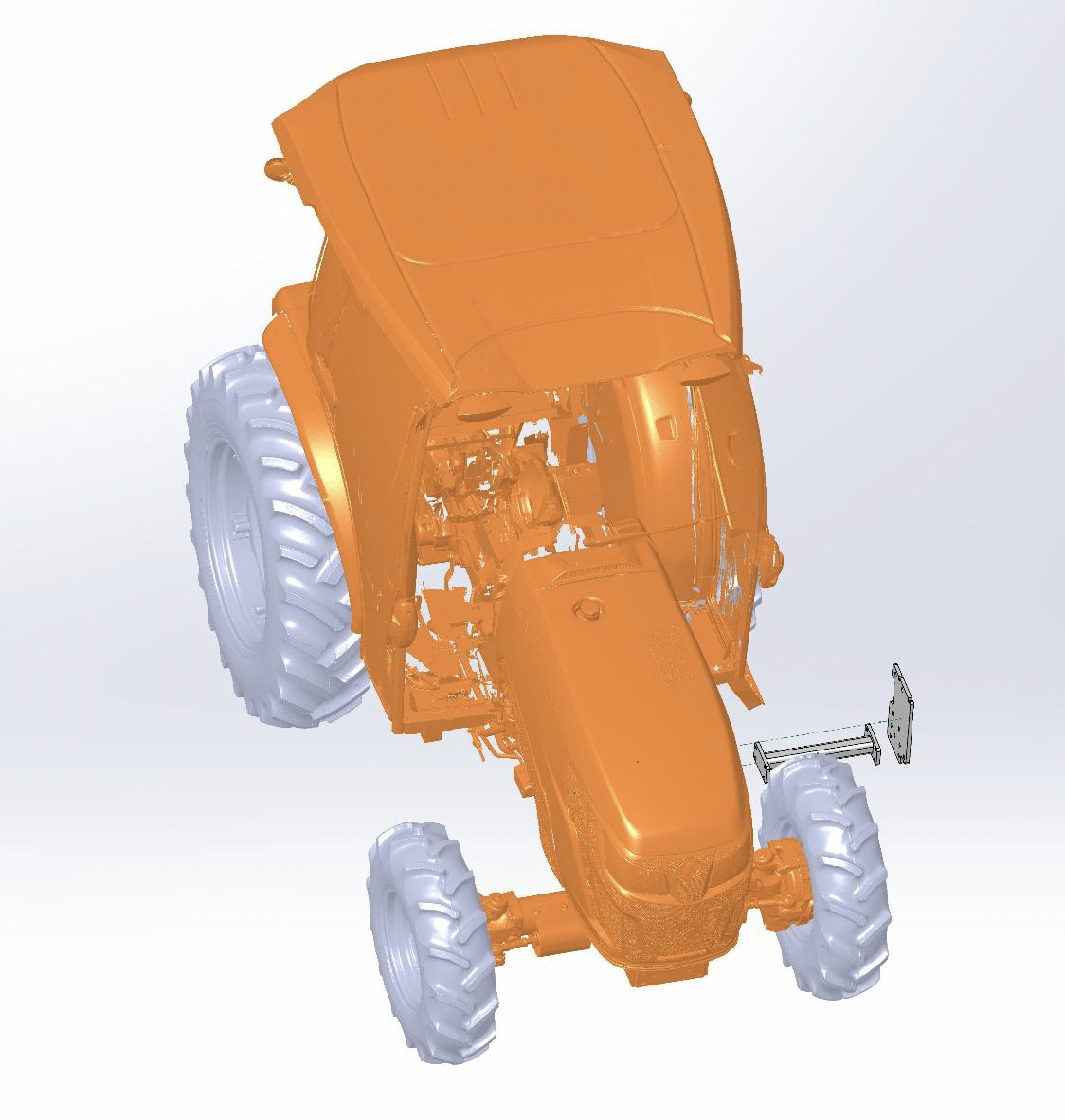
Step Three
If 1 implement bring the Main Blade Assembly up to the tractor and attach them loosely to the side and the front of the tractor as shown. The brush guard attaches to the front using the same bolts, it can also be added now. Don’t fully tighten while mounting the implements.
If 2 implements bring the right-side implement first, then left-side implement. Attach the underbelly support to the rear uprights. The brush guard attaches to the front using the same bolts, it can also be added now. Don’t fully tighten while mounting the implements.
If an open-station model attach the valve stand during this time. Finally attach valve tray.

Step Four
Attach hydraulic cylinder at both ends if it isn’t already and tighten everything down.
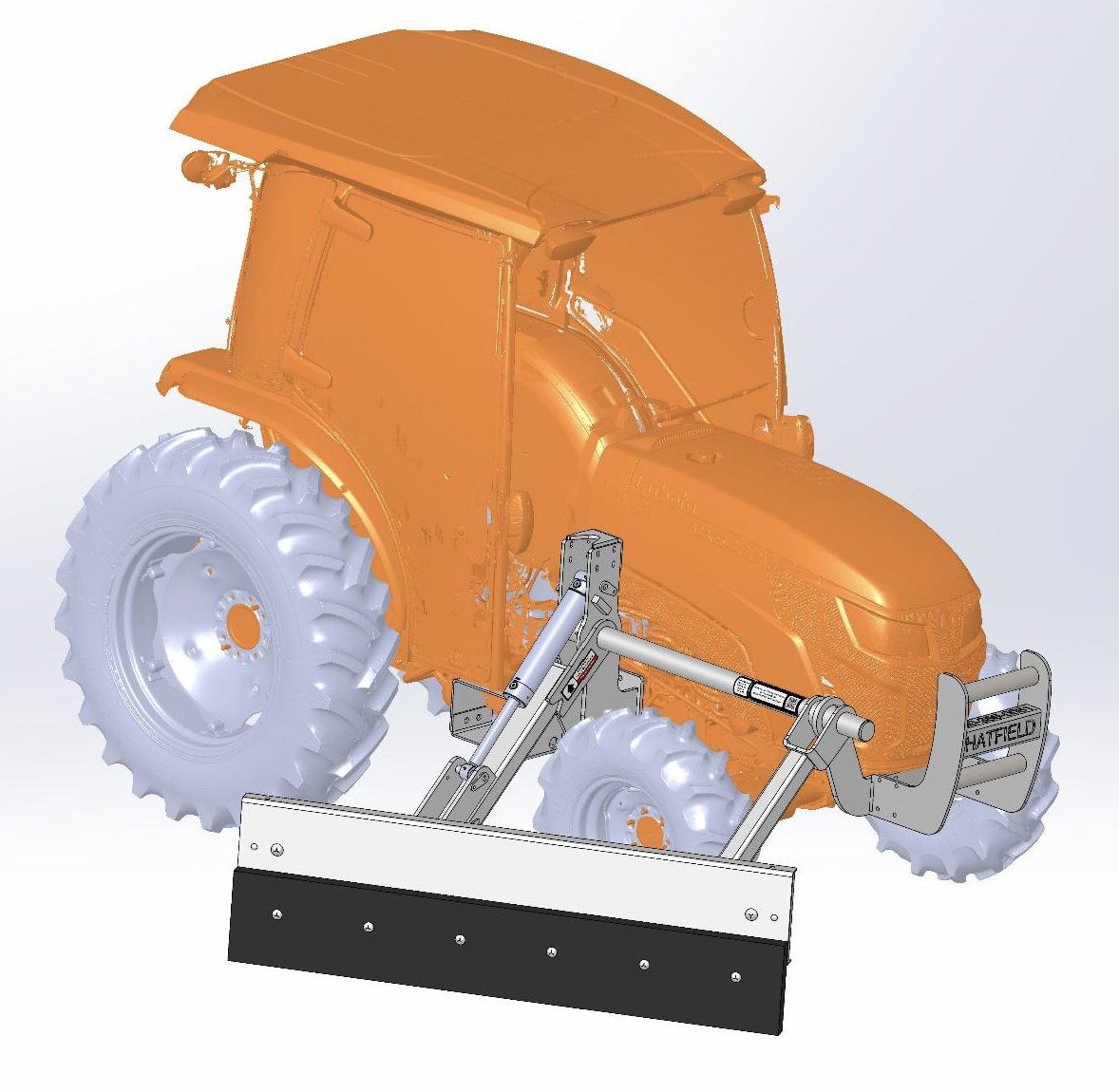
Step Five
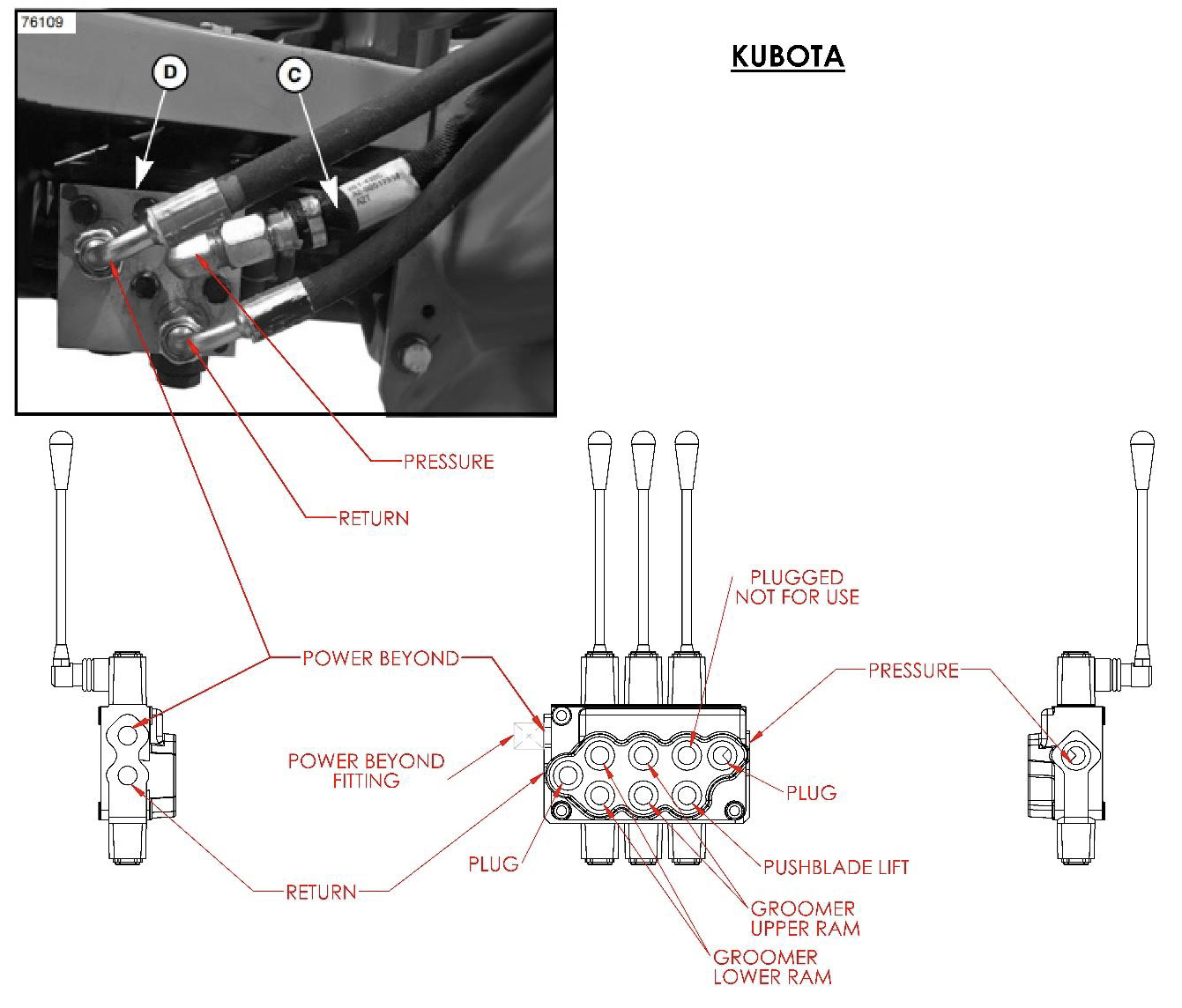
A-Fitting, Power Beyond B-Fitting, Drain oil Line C-Fitting, Pressure Oil Line D-Fitting E- Fitting F-Fitting
- Remove protective plugs (if equipped) from oil lines.
- Install return oil line fitting (B) to fitting (A).
- Install power beyond oil line fitting (D) to fitting (E).
- Install pressure oil line fitting (C) to fitting (F). Tighten oil line fittings to specification.
- Install previously removed plug (C) and tighten to specification
- Oil Line Fittings (A-C) Torque - 37 N-m (27 lb-ft)
John Deere 3 Series
3E Series (2013-Present) 3025E, 3032E, 3038E
Open Station
Single Implement
Bolts
FRONT MOUNT PLATE: 1 IMPLEMENT
2- ½ X 2.5 BOLT
2- ½ NN
2- ½ FLAT WASHER
REAR BASE PLATES
8- 16mm 2.0 X 50 BOLT
UNDER SUPPORT
8- ½ X 2 BOLT
8- ½ NN
8- ½ FLAT WASHER
Hydraulics
Cylinder Ram 3 X 12 - Part #207434
Valve to Ram
Right Pushblade
6G-8FJX
54”
6G-8FJX
1 PC 2501-08-08 ADAPTER FITTING
(8IJC TO ½ PIPE MALE FITTING)
Left Pushblade
6G-8FJX
104”
6G-8FJX
1 PC 2501-08-08 ADAPTER FITTING
(8IJC TO ½ PIPE MALE FITTING)
3R Series (2014-Present) 3033R, 3039R, 3046R
Open Station
Single Implement
Bolts
FRONT MOUNT PLATE: 1 IMPLEMENT
2- ½ X 2.5 BOLT
2- ½ NN
2- ½ FLAT WASHER
REAR BASE PLATE AND SPACER: 1 IMPLEMENT
4- 16mm 2.0 X 50MM BOLT
4- ½ X 2 BOLT
4- ½ NN
4- ½ FLAT WASHER
Hydraulics
Cylinder Ram 3 X 12 - Part #207434
Valve to Ram
Right Pushblade
6G-8FJX
54”
6G-8FJX
1 PC 2501-08-08 ADAPTER FITTING
(8IJC TO ½ PIPE MALE FITTING)
Left Pushblade
6G-8FJX
104”
6G-8FJX
1 PC 2501-08-08 ADAPTER FITTING
(8IJC TO ½ PIPE MALE FITTING)
Double Implement
Bolts
FRONT MOUNT PLATE: 2 IMPLEMENTS
2- ½ X 3 BOLT
2- ½ NN
2- ½ FLAT WASHER
REAR BASE PLATE AND SPACER: 1 IMPLEMENT
4- 16mm 2.0 X 50MM BOLT
4- ½ X 2 BOLT
4- ½ NN
4- ½ FLAT WASHER
REAR BASE PLATE AND SPACER: 2nd IMPLEMENT
4- 16mm 2.0 X 50MM BOLT
4- ½ X 2 BOLT
4- ½ NN
4- ½ FLAT WASHER
Hydraulics
Cylinder Ram 3 X 12 - Part #207434
Valve to Ram
Right Pushblade
6G-8FJX
54”
6G-8FJX
1 PC 2501-08-08 ADAPTER FITTING
(8IJC TO ½ PIPE MALE FITTING)
Left Pushblade
6G-8FJX
104”
6G-8FJX
1 PC 2501-08-08 ADAPTER FITTING
(8IJC TO ½ PIPE MALE FITTING)
Cab
Single Implement
Bolts
FRONT MOUNT PLATE: 1 IMPLEMENT
2- ½ X 2.5 BOLT
2- ½ NN
2- ½ FLAT WASHER
REAR BASE PLATE AND SPACER: 1 IMPLEMENT
4- 16mm 2.0 X 50MM BOLT
4- ½ X 2 BOLT
4- ½ NN
4- ½ FLAT WASHER
Hydraulics
Cylinder Ram 3 X 12 - Part #207434
Valve to Ram
Right Pushblade
6G-8FJX
54”
6G-8FJX
1 PC 2501-08-08 ADAPTER FITTING
(8IJC TO ½ PIPE MALE FITTING)
Left Pushblade
6G-8FJX
104”
6G-8FJX
1 PC 2501-08-08 ADAPTER FITTING
(8IJC TO ½ PIPE MALE FITTING)
Double Implement
Bolts
FRONT MOUNT PLATE: 2 IMPLEMENTS
2- ½ X 3 BOLT
2- ½ NN
2- ½ FLAT WASHER
REAR BASE PLATE AND SPACER: 1 IMPLEMENT
4- 16mm 2.0 X 50MM BOLT
4- ½ X 2 BOLT
4- ½ NN
4- ½ FLAT WASHER
REAR BASE PLATE AND SPACER: 2nd IMPLEMENT
4- 16mm 2.0 X 50MM BOLT
4- ½ X 2 BOLT
4- ½ NN
4- ½ FLAT WASHER
Hydraulics
Cylinder Ram 3 X 12 - Part #207434
Valve to Ram
Right Pushblade
6G-8FJX
54”
6G-8FJX
1 PC 2501-08-08 ADAPTER FITTING
(8IJC TO ½ PIPE MALE FITTING)
Left Pushblade
6G-8FJX
104”
6G-8FJX
1 PC 2501-08-08 ADAPTER FITTING
(8IJC TO ½ PIPE MALE FITTING)
John Deere 4 Series
4M Series (2014-Present) 4044M, 4052M, 4066M
Open Station
Single Implement
Bolts
FRONT MOUNT PLATE: 1 IMPLEMENT
4- ½ X 3 BOLT
4- ½ NN
4- ½ FLAT WASHER
REAR BASE PLATES AND SPACERS
8- 5/8 X 2 ½ BOLT
8- 5/8 NN
8- 5/8 FLAT WASHER
8- 16mm 2.0 X 50
8- 16mm LOCK WASHER
8- 16mm FLAT WASHER
UNDER SUPPORT
8- ½ X 2 BOLT
8- ½ NN FLANGED
Hydraulics
Cylinder Ram 3 X 12 - Part #207434
Tractor to Valve
Pressure
8G-8FJX
90”
8G-10FFORX90S
Power Beyond
8G-8FJX
90”
8G-10FFORX90L
Return
8G-8FJX
110”
8G-8FFORX90S
Valve to Ram
Right Pushblade
6G-8FJX
39”
6G-6FJX
Left Pushblade
6G-8FJX
39”
6G-6FJX
Double Implement
Bolts
FRONT MOUNT PLATE: 2 IMPLEMENTS
4- ½ X 3 ¾ BOLT
4- ½ NN
4- ½ FLAT WASHER
REAR BASE PLATES AND SPACERS
8- 5/8 X 2 ½ BOLT
8- 5/8 NN
8- 5/8 FLAT WASHER
8- 16mm 2.0 X 50
8- 16mm LOCK WASHER
8- 16mm FLAT WASHER
UNDER SUPPORT
8- ½ X 2 BOLT
8- ½ NN FLANGED
Hydraulics
Cylinder Ram 3 X 12 - Part #207434
Tractor to Valve
Pressure
8G-8FJX
90”
8G-10FFORX90S
Power Beyond
8G-8FJX
90”
8G-10FFORX90L
Return
8G-8FJX
110”
8G-8FFORX90S
Valve to Ram
Right Pushblade
6G-8FJX
39”
6G-6FJX
Left Pushblade
6G-8FJX
39”
6G-6FJX
Cylinder Ram 3 X 10 - Part #207432
Right Groomer
Upper Ram
6G-8FJX
39”
6G-6FJX
6G-8FJX
26”
6G-6FJX
Right Groomer
Lower Ram
6G-8FJX
70”
6G-6FJX
6G-8FJX
85”
6G-6FJX
4R Series (2014-Present) 4044R, 4052R, 4066R
Open Station
Single Implement
Bolts
FRONT MOUNT PLATE: 1 IMPLEMENT
4- ½ X 3 BOLT
4- ½ NN
4- ½ FLAT WASHER
REAR BASE PLATES AND SPACERS
8- 5/8 X 2 ½ BOLT
8- 5/8 NN
8- 5/8 FLAT WASHER
8- 16mm 2.0 X 50 BOLT
8- 16mm LOCK WASHER
8- 16mm FLAT WASHER
UNDER SUPPORT
8- ½ X 2 BOLT
8- ½ NN FLANGED
Hydraulics
Cylinder Ram 3 X 12 - Part #207434
Tractor to Valve
Pressure
8G-8FJX
90”
8G-10FFORX90S
Power Beyond
8G-8FJX
90”
8G-10FFORX90L
Return
8G-8FJX
110”
8G-8FFORX90S
Valve to Ram
Right Pushblade
6G-8FJX
39”
6G-6FJX
Left Pushblade
6G-8FJX
39”
6G-6FJX
Double Implement
Bolts
FRONT MOUNT PLATE: 2 IMPLEMENTS
4- ½ X 3 ¾ BOLT
4- ½ NN
4- ½ FLAT WASHER
REAR BASE PLATES AND SPACERS
8- 5/8 X 2 ½ BOLT
8- 5/8 NN
8- 5/8 FLAT WASHER
8- 16mm 2.0 X 50 BOLT
8- 16mm LOCK WASHER
8- 16mm FLAT WASHER
UNDER SUPPORT
8- ½ X 2 BOLT
8- ½ NN FLANGED
Hydraulics
Cylinder Ram 3 X 12 - Part #207434
Tractor to Valve
Pressure
8G-8FJX
90”
8G-10FFORX90S
Power Beyond
8G-8FJX
90”
8G-10FFORX90L
Return
8G-8FJX
110”
8G-8FFORX90S
Valve to Ram
Right Pushblade
6G-8FJX
39”
6G-6FJX
Left Pushblade
6G-8FJX
39”
6G-6FJX
Cylinder Ram 3 X 10 - Part #207432
Right Groomer
Upper Ram
6G-8FJX
39”
6G-6FJX
6G-8FJX
26”
6G-6FJX
Right Groomer
Lower Ram
6G-8FJX
70”
6G-6FJX
6G-8FJX
85”
6G-6FJX
Cab
Single Implement
Bolts
FRONT MOUNT PLATE: 1 IMPLEMENT
2- ½ X 3.0 BOLT
2- ½ NN
2- ½ FLAT WASHER
REAR BASE PLATE AND SPACER: 1 IMPLEMENT
4- 16mm 2.0 X 50MM BOLT
4- ½ X 2 BOLT
4- ½ NN
4- ½ FLAT WASHER
UNDER SUPPORT
8- ½ X 2 BOLT
8- ½ NN FLANGED
Hydraulics
Cylinder Ram 3 X 12 - Part #207434
Tractor to Valve
Pressure
8G-8FJX
90”
8G-10FFORX90S
Power Beyond
8G-8FJX
90”
8G-10FFORX90L
Return
8G-8FJX
110”
8G-8FFORX90S
Valve to Ram
Right Pushblade
6G-8FJX
39”
6G-6FJX
Left Pushblade
6G-8FJX
39”
6G-6FJX
Double Implement
Bolts
FRONT MOUNT PLATE: 2 IMPLEMENTS
2- ½ X 3 3/4 BOLT
2- ½ NN
2- ½ FLAT WASHER
REAR BASE PLATE AND SPACER: 1 IMPLEMENT
4- 16mm 2.0 X 50MM BOLT
4- ½ X 2 BOLT
4- ½ NN
4- ½ FLAT WASHER
REAR BASE PLATE AND SPACER: 2nd IMPLEMENT
4- 16mm 2.0 X 50MM BOLT
4- ½ X 2 BOLT
4- ½ NN
4- ½ FLAT WASHER
UNDER SUPPORT
8- ½ X 2 BOLT
8- ½ NN FLANGED
Hydraulics
Cylinder Ram 3 X 12 - Part #207434
Tractor to Valve
Pressure
8G-8FJX
90”
8G-10FFORX90S
Power Beyond
8G-8FJX
90”
8G-10FFORX90L
Return
8G-8FJX
110”
8G-8FFORX90S
Valve to Ram
Right Pushblade
6G-8FJX
39”
6G-6FJX
Left Pushblade
6G-8FJX
39”
6G-6FJX
Cylinder Ram 3 X 10 - Part #207432
Right Groomer
Upper Ram
6G-8FJX
39”
6G-6FJX
6G-8FJX
26”
6G-6FJX
Right Groomer
Lower Ram
6G-8FJX
70”
6G-6FJX
6G-8FJX
85”
6G-6FJX
4R Series (2024-Present) 4075R
Cab
Single Implement
Bolts
FRONT MOUNT PLATE: 1 IMPLEMENT
4- ½ X 3 BOLT
4- ½ NN
4- ½ FLAT WASHER
REAR BASE PLATES
8- 5/8 X 2 ½ BOLT
8- 5/8 NN
8- 5/8 FLAT WASHER
UNDER SUPPORT
8- ½ X 2 BOLT
8- ½ NN FLANGED
Hydraulics
Cylinder Ram 3 X 12 - Part #207434
Tractor to Valve
Pressure
8G-8FJX
90”
8G-10FFORX90S
Power Beyond
8G-8FJX
90”
8G-10FFORX90L
Return
8G-8FJX
110”
8G-8FFORX90S
Valve to Ram
Right Pushblade
6G-8FJX
39”
6G-6FJX
Left Pushblade
6G-8FJX
39”
6G-6FJX
Double Implement
Bolts
FRONT MOUNT PLATE: 1 IMPLEMENT
4- ½ X 3 BOLT
4- ½ NN
4- ½ FLAT WASHER
REAR BASE PLATES
8- 5/8 X 2 ½ BOLT
8- 5/8 NN
8- 5/8 FLAT WASHER
UNDER SUPPORT
8- ½ X 2 BOLT
8- ½ NN FLANGED
Hydraulics
Cylinder Ram 3 X 12 - Part #207434
Tractor to Valve
Pressure
8G-8FJX
90”
8G-10FFORX90S
Power Beyond
8G-8FJX
90”
8G-10FFORX90L
Return
8G-8FJX
110”
8G-8FFORX90S
Valve to Ram
Right Pushblade
6G-8FJX
39”
6G-6FJX
Left Pushblade
6G-8FJX
39”
6G-6FJX
Cylinder Ram 3 X 10 - Part #207432
Right Groomer
Upper Ram
6G-8FJX
39”
6G-6FJX
6G-8FJX
26”
6G-6FJX
Right Groomer
Lower Ram
6G-8FJX
70”
6G-6FJX
6G-8FJX
85”
6G-6FJX
John Deere 5 Series
5E Series (2008-2022) 5045E, 5055E, 5065E, 5075E
Open Station
Single Implement
Bolts
FRONT MOUNT PLATE: 1 IMPLEMENT
4- ¾ X 3.5 BOLT
4- ½ NN
4- ½ FLAT WASHER
REAR BASE PLATE: 1 IMPLEMENT
1- 20mm 2.5 X 100 BOLT
2- 20mm 2.5 X 65 BOLT
3- 16mm 2.0 X 60 BOLT
Hydraulics
Tractor to Valve
Pressure
8G-8FJX
110”
8G-8FFORX90S
Power Beyond
8G-8FJX
110”
8G-8FFORX90L
Return
8G-8FJX
110”
8G-8FFORX90S
Valve to Ram
Right Pushblade
6G-8FJX
40”
6G-6FJX
Double Implement
Bolts
FRONT MOUNT PLATE: 2 IMPLEMENTS
4- ¾ X 3.5 BOLT
4- ½ NN
4- ½ FLAT WASHER
REAR BASE PLATE: 1 IMPLEMENT
1- 20mm 2.5 X 100 BOLT
2- 20mm 2.5 X 65 BOLT
3- 16mm 2.0 X 60 BOLT
REAR BASE PLATE: 2nd IMPLEMENT
1- 20mm 2.5 X 100 BOLT
2- 20mm 2.5 X 65 BOLT
3- 16mm 2.0 X 60 BOLT
Hydraulics
Tractor to Valve
Pressure
8G-8FJX
110”
8G-8FFORX90S
Power Beyond
8G-8FJX
110”
8G-8FFORX90L
Return
8G-8FJX
110”
8G-8FFORX90S
Valve to Ram
Right Pushblade
6G-8FJX
40”
6G-6FJX
Cylinder Ram 3 X 10 - Part #207432
Right Groomer
Upper Ram
6G-8FJX
40”
6G-6FJX
6G-8FJX
40”
6G-6FJX
Right Groomer
Lower Ram
6G-8FJX
49”
6G-6FJX
6G-8FJX
60”
6G-6FJX
Cab
Single Implement
Bolts
FRONT MOUNT PLATE: 1 IMPLEMENT
4- ¾ X 3.5 BOLT
4- ½ NN
4- ½ FLAT WASHER
REAR BASE PLATE: 1 IMPLEMENT
1- 20mm 2.5 X 100 BOLT
2- 20mm 2.5 X 65 BOLT
3- 16mm 2.0 X 60 BOLT
Hydraulics
Tractor to Valve
Pressure
8G-8FJX
110”
8G-8FFORX90S
Power Beyond
8G-8FJX
110”
8G-8FFORX90L
Return
8G-8FJX
110”
8G-8FFORX90S
Valve to Ram
Right Pushblade
6G-8FJX
40”
6G-6FJX
Double Implement
Bolts
FRONT MOUNT PLATE: 2 IMPLEMENTS
4- ¾ X 3.5 BOLT
4- ½ NN
4- ½ FLAT WASHER
REAR BASE PLATE: 2nd IMPLEMENT
1- 20mm 2.5 X 100 BOLT
2- 20mm 2.5 X 65 BOLT
3- 16mm 2.0 X 60 BOLT
Hydraulics
Tractor to Valve
Pressure
8G-8FJX
110”
8G-8FFORX90S
Power Beyond
8G-8FJX
110”
8G-8FFORX90L
Return
8G-8FJX
110”
8G-8FFORX90S
Valve to Ram
Right Pushblade
6G-8FJX
40”
6G-6FJX
Cylinder Ram 3 X 10 - Part #207432
Right Groomer
Upper Ram
6G-8FJX
40”
6G-6FJX
6G-8FJX
40”
6G-6FJX
Right Groomer
Lower Ram
6G-8FJX
49”
6G-6FJX
6G-8FJX
60”
6G-6FJX
5E Series (2023-Present) 5050E, 5060E, 5067E, 5075E
Open Station
Single Implement
Bolts
FRONT MOUNT PLATE: 1 IMPLEMENT
4- ¾ X 2.75 BOLT
4- ½ NN
4- ½ FLAT WASHER
REAR BASE PLATE: 1 IMPLEMENT
1- 20mm 2.5 X 100 BOLT
2- 20mm 2.5 X 65 BOLT
3- 16mm 2.0 X 60 BOLT
Hydraulics
Tractor to Valve
Pressure
8G-8FJX
110”
8G-8FFORX90S
Power Beyond
8G-8FJX
110”
8G-8FFORX90L
Return
8G-8FJX
110”
8G-8FFORX90S
Valve to Ram
Right Pushblade
6G-8FJX
40”
6G-6FJX
Double Implement
Bolts
FRONT MOUNT PLATE: 2 IMPLEMENTS
4- ¾ X 2.75 BOLT
4- ½ NN
4- ½ FLAT WASHER
REAR BASE PLATE: 2nd IMPLEMENT
1- 20mm 2.5 X 100 BOLT
2- 20mm 2.5 X 65 BOLT
3- 16mm 2.0 X 60 BOLT
Hydraulics
Tractor to Valve
Pressure
8G-8FJX
110”
8G-8FFORX90S
Power Beyond
8G-8FJX
110”
8G-8FFORX90L
Return
8G-8FJX
110”
8G-8FFORX90S
Valve to Ram
Right Pushblade
6G-8FJX
40”
6G-6FJX
Cylinder Ram 3 X 10 - Part #207432
Right Groomer
Upper Ram
6G-8FJX
40”
6G-6FJX
6G-8FJX
40”
6G-6FJX
Right Groomer
Lower Ram
6G-8FJX
49”
6G-6FJX
6G-8FJX
60”
6G-6FJX
Cab
Single Implement
Bolts
FRONT MOUNT PLATE: 1 IMPLEMENT
4- ¾ X 2.75 BOLT
4- ½ NN
4- ½ FLAT WASHER
REAR BASE PLATE: 1 IMPLEMENT
1- 20mm 2.5 X 100 BOLT
2- 20mm 2.5 X 65 BOLT
3- 16mm 2.0 X 60 BOLT
Hydraulics
Tractor to Valve
Pressure
8G-8FJX
110”
8G-8FFORX90S
Power Beyond
8G-8FJX
110”
8G-8FFORX90L
Return
8G-8FJX
110”
8G-8FFORX90S
Valve to Ram
Right Pushblade
6G-8FJX
40”
6G-6FJX
Double Implement
Bolts
FRONT MOUNT PLATE: 2 IMPLEMENTS
4- ¾ X 2.75 BOLT
4- ½ NN
4- ½ FLAT WASHER
REAR BASE PLATE: 2nd IMPLEMENT
1- 20mm 2.5 X 100 BOLT
2- 20mm 2.5 X 65 BOLT
3- 16mm 2.0 X 60 BOLT
Hydraulics
Tractor to Valve
Pressure
8G-8FJX
110”
8G-8FFORX90S
Power Beyond
8G-8FJX
110”
8G-8FFORX90L
Return
8G-8FJX
110”
8G-8FFORX90S
Valve to Ram
Right Pushblade
6G-8FJX
40”
6G-6FJX
Cylinder Ram 3 X 10 - Part #207432
Right Groomer
Upper Ram
6G-8FJX
40”
6G-6FJX
6G-8FJX
40”
6G-6FJX
Right Groomer
Lower Ram
6G-8FJX
49”
6G-6FJX
6G-8FJX
60”
6G-6FJX
Kubota MX Series Tractors
MX Series (2015-2020) MX4800, MX5200, MX5800
Open Station
Single Implement
Bolts
FRONT MOUNT PLATE: 1 IMPLEMENT
4- 14mm 1.5 X 65MM
4- 14mm LOCK WASHER
4- 14mm FLAT WASHER
REAR BASE PLATE AND SPACER: 1 IMPLEMENT
8- 16mm 1.5 X 50MM
8- 16mm LOCK WASHER
8- 16mm FLAT WASHER
Under Support
8- ½ X 1 ¾ BOLT
8- ½ X NN FLANGED
8- ½ X FLAT WASHER
Hydraulics
Cylinder Ram 3 X 12 - Part #207434
Tractor To Valve
Pressure
8G-8FJX
54”
8G-8FJX90S
Power Beyond
8G-8FJX
58”
8G-8FJX90L
Return
8G-8FJX
56”
8G-8FJX90S
Valve to Ram
Right Pushblade
6G-8FJX
40”
6G-6FJX
Left Pushblade
6G-8FJX
40”
6G-6FJX
Double Implement
Bolts
FRONT MOUNT PLATE: 2 IMPLEMENTS
4- 14mm 1.5 X 85MM
4- 14mm LOCK WASHER
4- 14mm FLAT WASHER
Under Support
8- ½ X 1 ¾ BOLT
8- ½ X NN FLANGED
8- ½ X FLAT WASHER
Hydraulics
Cylinder Ram 3 X 12 - Part #207434
Tractor To Valve
Pressure
8G-8FJX
54”
8G-8FJX90S
Power Beyond
8G-8FJX
58”
8G-8FJX90L
Return
8G-8FJX
56”
8G-8FJX90S
Valve to Ram
Right Push Blade
6G-8MBX90
104”
Left Push Blade
6G-8MBX90
80”
Right Groomer
6G-8FJX
110”
6G-8FFORX90S
6G-8FJX
108”
6G-8FFORX90L
6G-8FJX
127”
6G-8FFORX90L
6G-8FJX
157”
6G-8FFORX90S
If Prince Valve
Valve to Ram
Right Pushblade
6G-8FJX
40”
6G-6FJX
Left Pushblade
6G-8FJX
40”
6G-6FJX
Cylinder Ram 3 X 10 - Part #207432
Valve to Ram
Right Groomer
Upper Ram
6G-8FJX
40”
6G-6FJX
6G-8FJX
40”
6G-6FJX
Lower Ram
6G-8FJX
40”
6G-6FJX
6G-8FJX
40”
6G-6FJX
Cab
Single Implement
Bolts
FRONT MOUNT PLATE: 1 IMPLEMENT
4- 14mm 1.5 X 65MM
4- 14mm LOCK WASHER
4- 14mm FLAT WASHER
REAR BASE PLATE AND SPACER: 1 IMPLEMENT
8- 16mm 1.5 X 50MM
8- 16mm LOCK WASHER
8- 16mm FLAT WASHER
Under Support
8- ½ X 1 ¾ BOLT
8- ½ X NN FLANGED
8- ½ X FLAT WASHER
Hydraulics
Cylinder Ram 3 X 12 - Part #207434
Tractor To Valve
Pressure
8G-8FJX
54”
8G-8FJX90S
Power Beyond
8G-8FJX
58”
8G-8FJX90L
Return
8G-8FJX
56”
8G-8FJX90S
Valve to Ram
Right Pushblade
6G-8FJX
40”
6G-6FJX
Left Pushblade
6G-8FJX
40”
6G-6FJX
Double Implement
Bolts
FRONT MOUNT PLATE: 2 IMPLEMENTS
4- 14mm 1.5 X 85MM
4- 14mm LOCK WASHER
4- 14mm FLAT WASHER
Under Support
8- ½ X 1 ¾ BOLT
8- ½ X NN FLANGED
8- ½ X FLAT WASHER
Hydraulics
Cylinder Ram 3 X 12 - Part #207434
Tractor To Valve
Pressure
8G-8FJX
54”
8G-8FJX90S
Power Beyond
8G-8FJX
58”
8G-8FJX90L
Return
8G-8FJX
56”
8G-8FJX90S
Valve to Ram
Right Push Blade
6G-8MBX90
104”
Left Push Blade
6G-8MBX90
80”
Right Groomer
6G-8FJX
110”
6G-8FFORX90S
6G-8FJX
108”
6G-8FFORX90L
6G-8FJX
127”
6G-8FFORX90L
6G-8FJX
157”
6G-8FFORX90S
If Prince Valve
Valve to Ram
Right Pushblade
6G-8FJX
40”
6G-6FJX
Left Pushblade
6G-8FJX
40”
6G-6FJX
Cylinder Ram 3 X 10 - Part #207432
Valve to Ram
Right Groomer
Upper Ram
6G-8FJX
40”
6G-6FJX
6G-8FJX
40”
6G-6FJX
Lower Ram
6G-8FJX
40”
6G-6FJX
6G-8FJX
40”
6G-6FJX
MX Series (2020-Present) MX4900, MX5400, MX6000
Open Station
Single Implement
Bolts
FRONT MOUNT PLATE: 1 IMPLEMENT
4- 14mm 1.5 X 65MM
4- 14mm LOCK WASHER
4- 14mm FLAT WASHER
REAR BASE PLATE AND SPACER: 1 IMPLEMENT
8- 16mm 1.5 X 50MM
8- 16mm LOCK WASHER
8- 16mm FLAT WASHER
Under Support
8- ½ X 1 ¾ BOLT
8- ½ X NN FLANGED
8- ½ X FLAT WASHER
Hydraulics
Cylinder Ram 3 X 12 - Part #207434
Tractor To Valve
Pressure
8G-8FJX
54”
8G-8FJX90S
Power Beyond
8G-8FJX
58”
8G-8FJX90L
Return
8G-8FJX
56”
8G-8FJX90S
Valve to Ram
Right Pushblade
6G-8FJX
40”
6G-6FJX
Left Pushblade
6G-8FJX
40”
6G-6FJX
Double Implement
Bolts
FRONT MOUNT PLATE: 2 IMPLEMENTS
4- 14mm 1.5 X 85MM
4- 14mm LOCK WASHER
4- 14mm FLAT WASHER
Under Support
8- ½ X 1 ¾ BOLT
8- ½ X NN FLANGED
8- ½ X FLAT WASHER
Hydraulics
Cylinder Ram 3 X 12 - Part #207434
Tractor To Valve
Pressure
8G-8FJX
54”
8G-8FJX90S
Power Beyond
8G-8FJX
58”
8G-8FJX90L
Return
8G-8FJX
56”
8G-8FJX90S
Valve to Ram
Right Push Blade
6G-8MBX90
104”
Left Push Blade
6G-8MBX90
80”
Right Groomer
6G-8FJX
110”
6G-8FFORX90S
6G-8FJX
108”
6G-8FFORX90L
6G-8FJX
127”
6G-8FFORX90L
6G-8FJX
157”
6G-8FFORX90S
If Prince Valve
Valve to Ram
Right Pushblade
6G-8FJX
40”
6G-6FJX
Left Pushblade
6G-8FJX
40”
6G-6FJX
Cylinder Ram 3 X 10 - Part #207432
Valve to Ram
Right Groomer
Upper Ram
6G-8FJX
40”
6G-6FJX
6G-8FJX
40”
6G-6FJX
Lower Ram
6G-8FJX
40”
6G-6FJX
6G-8FJX
40”
6G-6FJX
Cab
Single Implement
Bolts
FRONT MOUNT PLATE: 1 IMPLEMENT
4- 14mm 1.5 X 65MM
4- 14mm LOCK WASHER
4- 14mm FLAT WASHER
REAR BASE PLATE AND SPACER: 1 IMPLEMENT
8- 16mm 1.5 X 50MM
8- 16mm LOCK WASHER
8- 16mm FLAT WASHER
Under Support
8- ½ X 1 ¾ BOLT
8- ½ X NN FLANGED
8- ½ X FLAT WASHER
Hydraulics
Cylinder Ram 3 X 12 - Part #207434
Tractor To Valve
Pressure
8G-8FJX
54”
8G-8FJX90S
Power Beyond
8G-8FJX
58”
8G-8FJX90L
Return
8G-8FJX
56”
8G-8FJX90S
Valve to Ram
Right Pushblade
6G-8FJX
40”
6G-6FJX
Left Pushblade
6G-8FJX
40”
6G-6FJX
Double Implement
Bolts
FRONT MOUNT PLATE: 2 IMPLEMENTS
4- 14mm 1.5 X 85MM
4- 14mm LOCK WASHER
4- 14mm FLAT WASHER
Under Support
8- ½ X 1 ¾ BOLT
8- ½ X NN FLANGED
8- ½ X FLAT WASHER
Hydraulics
Cylinder Ram 3 X 12 - Part #207434
Tractor To Valve
Pressure
8G-8FJX
54”
8G-8FJX90S
Power Beyond
8G-8FJX
58”
8G-8FJX90L
Return
8G-8FJX
56”
8G-8FJX90S
Valve to Ram
Right Push Blade
6G-8MBX90
104”
Left Push Blade
6G-8MBX90
80”
Right Groomer
6G-8FJX
110”
6G-8FFORX90S
6G-8FJX
108”
6G-8FFORX90L
6G-8FJX
127”
6G-8FFORX90L
6G-8FJX
157”
6G-8FFORX90S
If Prince Valve
Valve to Ram
Right Pushblade
6G-8FJX
40”
6G-6FJX
Left Pushblade
6G-8FJX
40”
6G-6FJX
Cylinder Ram 3 X 10 - Part #207432
Valve to Ram
Right Groomer
Upper Ram
6G-8FJX
40”
6G-6FJX
6G-8FJX
40”
6G-6FJX
Lower Ram
6G-8FJX
40”
6G-6FJX
6G-8FJX
40”
6G-6FJX
Kubota L Series Tractors
L Series (2014-2022) L2501,L3301, L3901, L4701
Open Station
Single Implement
Bolts
FRONT MOUNT PLATE: 1 IMPLEMENT
4- 14mm 1.5 X 65MM
4- 14mm LOCK WASHER
4- 14mm FLAT WASHER
REAR BASE PLATE AND SPACER: 1 IMPLEMENT
8- 16mm 1.5 X 50MM
8- 16mm LOCK WASHER
8- 16mm FLAT WASHER
Under Support
8- ½ X 1 ¾ BOLT
8- ½ X NN FLANGED
8- ½ X FLAT WASHER
Hydraulics
Cylinder Ram 3 X 12 - Part #207434
Tractor To Valve
Pressure
8G-8FJX
54”
8G-8FJX90S
Power Beyond
8G-8FJX
58”
8G-8FJX90L
Return
8G-8FJX
56”
8G-8FJX90S
Valve to Ram
Right Pushblade
6G-8FJX
40”
6G-6FJX
Left Pushblade
6G-8FJX
40”
6G-6FJX
Double Implement
Bolts
FRONT MOUNT PLATE: 2 IMPLEMENTS
4- 14mm 1.5 X 85MM
4- 14mm LOCK WASHER
4- 14mm FLAT WASHER
Under Support
8- ½ X 1 ¾ BOLT
8- ½ X NN FLANGED
8- ½ X FLAT WASHER
Hydraulics
Cylinder Ram 3 X 12 - Part #207434
Tractor To Valve
Pressure
8G-8FJX
54”
8G-8FJX90S
Power Beyond
8G-8FJX
58”
8G-8FJX90L
Return
8G-8FJX
56”
8G-8FJX90S
Valve to Ram
Right Push Blade
6G-8MBX90
104”
Left Push Blade
6G-8MBX90
80”
Right Groomer
6G-8FJX
110”
6G-8FFORX90S
6G-8FJX
108”
6G-8FFORX90L
6G-8FJX
127”
6G-8FFORX90L
6G-8FJX
157”
6G-8FFORX90S
If Prince Valve
Valve to Ram
Right Pushblade
6G-8FJX
40”
6G-6FJX
Left Pushblade
6G-8FJX
40”
6G-6FJX
Cylinder Ram 3 X 10 - Part #207432
Valve to Ram
Right Groomer
Upper Ram
6G-8FJX
40”
6G-6FJX
6G-8FJX
40”
6G-6FJX
Lower Ram
6G-8FJX
40”
6G-6FJX
6G-8FJX
40”
6G-6FJX
L Series (2022-Present) L2502,L3302, L3902, L4802
Open Station
Single Implement
Bolts
FRONT MOUNT PLATE: 1 IMPLEMENT
4- 14mm 1.5 X 65MM
4- 14mm LOCK WASHER
4- 14mm FLAT WASHER
REAR BASE PLATE AND SPACER: 1 IMPLEMENT
8- 16mm 1.5 X 50MM
8- 16mm LOCK WASHER
8- 16mm FLAT WASHER
Under Support
8- ½ X 1 ¾ BOLT
8- ½ X NN FLANGED
8- ½ X FLAT WASHER
Hydraulics
Cylinder Ram 3 X 12 - Part #207434
Tractor To Valve
Pressure
8G-8FJX
54”
8G-8FJX90S
Power Beyond
8G-8FJX
58”
8G-8FJX90L
Return
8G-8FJX
56”
8G-8FJX90S
Valve to Ram
Right Pushblade
6G-8FJX
40”
6G-6FJX
Left Pushblade
6G-8FJX
40”
6G-6FJX
Double Implement
Bolts
FRONT MOUNT PLATE: 2 IMPLEMENTS
4- 14mm 1.5 X 85MM
4- 14mm LOCK WASHER
4- 14mm FLAT WASHER
Under Support
8- ½ X 1 ¾ BOLT
8- ½ X NN FLANGED
8- ½ X FLAT WASHER
Hydraulics
Cylinder Ram 3 X 12 - Part #207434
Tractor To Valve
Pressure
8G-8FJX
54”
8G-8FJX90S
Power Beyond
8G-8FJX
58”
8G-8FJX90L
Return
8G-8FJX
56”
8G-8FJX90S
Valve to Ram
Right Push Blade
6G-8MBX90
104”
Left Push Blade
6G-8MBX90
80”
Right Groomer
6G-8FJX
110”
6G-8FFORX90S
6G-8FJX
108”
6G-8FFORX90L
6G-8FJX
127”
6G-8FFORX90L
6G-8FJX
157”
6G-8FFORX90S
If Prince Valve
Valve to Ram
Right Pushblade
6G-8FJX
40”
6G-6FJX
Left Pushblade
6G-8FJX
40”
6G-6FJX
Cylinder Ram 3 X 10 - Part #207432
Valve to Ram
Right Groomer
Upper Ram
6G-8FJX
40”
6G-6FJX
6G-8FJX
40”
6G-6FJX
Lower Ram
6G-8FJX
40”
6G-6FJX
6G-8FJX
40”
6G-6FJX
L Series (2013-Present) L3560, L4060
Open Station
Single Implement
Bolts
FRONT MOUNT PLATE: 1 IMPLEMENT
4- 14mm 1.5 X 65MM
4- 14mm LOCK WASHER
4- 14mm FLAT WASHER
REAR BASE PLATE AND SPACER: 1 IMPLEMENT
8- 16mm 1.5 X 50MM
8- 16mm LOCK WASHER
8- 16mm FLAT WASHER
Under Support
8- ½ X 1 ¾ BOLT
8- ½ X NN FLANGED
8- ½ X FLAT WASHER
Hydraulics
Cylinder Ram 3 X 12 - Part #207434
Tractor To Valve
Pressure
8G-8FJX
54”
8G-8FJX90S
Power Beyond
8G-8FJX
58”
8G-8FJX90L
Return
8G-8FJX
56”
8G-8FJX90S
Valve to Ram
Right Pushblade
6G-8FJX
40”
6G-6FJX
Left Pushblade
6G-8FJX
40”
6G-6FJX
Double Implement
Bolts
FRONT MOUNT PLATE: 2 IMPLEMENTS
4- 14mm 1.5 X 85MM
4- 14mm LOCK WASHER
4- 14mm FLAT WASHER
Under Support
8- ½ X 1 ¾ BOLT
8- ½ X NN FLANGED
8- ½ X FLAT WASHER
Hydraulics
Cylinder Ram 3 X 12 - Part #207434
Tractor To Valve
Pressure
8G-8FJX
54”
8G-8FJX90S
Power Beyond
8G-8FJX
58”
8G-8FJX90L
Return
8G-8FJX
56”
8G-8FJX90S
Valve to Ram
Right Push Blade
6G-8MBX90
104”
Left Push Blade
6G-8MBX90
80”
Right Groomer
6G-8FJX
110”
6G-8FFORX90S
6G-8FJX
108”
6G-8FFORX90L
6G-8FJX
127”
6G-8FFORX90L
6G-8FJX
157”
6G-8FFORX90S
If Prince Valve
Valve to Ram
Right Pushblade
6G-8FJX
40”
6G-6FJX
Left Pushblade
6G-8FJX
40”
6G-6FJX
Cylinder Ram 3 X 10 - Part #207432
Valve to Ram
Right Groomer
Upper Ram
6G-8FJX
40”
6G-6FJX
6G-8FJX
40”
6G-6FJX
Lower Ram
6G-8FJX
40”
6G-6FJX
6G-8FJX
40”
6G-6FJX
Cab
Single Implement
Bolts
FRONT MOUNT PLATE: 1 IMPLEMENT
4- 14mm 1.5 X 65MM
4- 14mm LOCK WASHER
4- 14mm FLAT WASHER
REAR BASE PLATE AND SPACER: 1 IMPLEMENT
8- 16mm 1.5 X 50MM
8- 16mm LOCK WASHER
8- 16mm FLAT WASHER
Under Support
8- ½ X 1 ¾ BOLT
8- ½ X NN FLANGED
8- ½ X FLAT WASHER
Hydraulics
Cylinder Ram 3 X 12 - Part #207434
Tractor To Valve
Pressure
8G-8FJX
54”
8G-8FJX90S
Power Beyond
8G-8FJX
58”
8G-8FJX90L
Return
8G-8FJX
56”
8G-8FJX90S
Valve to Ram
Right Pushblade
6G-8FJX
40”
6G-6FJX
Left Pushblade
6G-8FJX
40”
6G-6FJX
Double Implement
Bolts
FRONT MOUNT PLATE: 2 IMPLEMENTS
4- 14mm 1.5 X 85MM
4- 14mm LOCK WASHER
4- 14mm FLAT WASHER
Under Support
8- ½ X 1 ¾ BOLT
8- ½ X NN FLANGED
8- ½ X FLAT WASHER
Hydraulics
Cylinder Ram 3 X 12 - Part #207434
Tractor To Valve
Pressure
8G-8FJX
54”
8G-8FJX90S
Power Beyond
8G-8FJX
58”
8G-8FJX90L
Return
8G-8FJX
56”
8G-8FJX90S
Valve to Ram
Right Push Blade
6G-8MBX90
104”
Left Push Blade
6G-8MBX90
80”
Right Groomer
6G-8FJX
110”
6G-8FFORX90S
6G-8FJX
108”
6G-8FFORX90L
6G-8FJX
127”
6G-8FFORX90L
6G-8FJX
157”
6G-8FFORX90S
If Prince Valve
Valve to Ram
Right Pushblade
6G-8FJX
40”
6G-6FJX
Left Pushblade
6G-8FJX
40”
6G-6FJX
Cylinder Ram 3 X 10 - Part #207432
Valve to Ram
Right Groomer
Upper Ram
6G-8FJX
40”
6G-6FJX
6G-8FJX
40”
6G-6FJX
Lower Ram
6G-8FJX
40”
6G-6FJX
6G-8FJX
40”
6G-6FJX
All Replacement Parts can be purchased on parts page.
Maintenance
Keeping your implements and equipment clean and maintained will make them safer and help them last longer. This section contains information you need to help keep your Bed Buster running.
Scheduled Maintenance
This Maintenance Schedule should be used as a basis for creating your own Schedule. These should be viewed as minimum intervals. Based on your implement usage some or all maintenance items may need to be addressed more frequently.
Lubrication Points
There are five (5) grease zerk fittings on the implement. One at each end of the arm’s hydraulic cylinder and two in the top of the arm’s hinge. These points must be greased with high quality multipurpose grease every 50 operating hours.
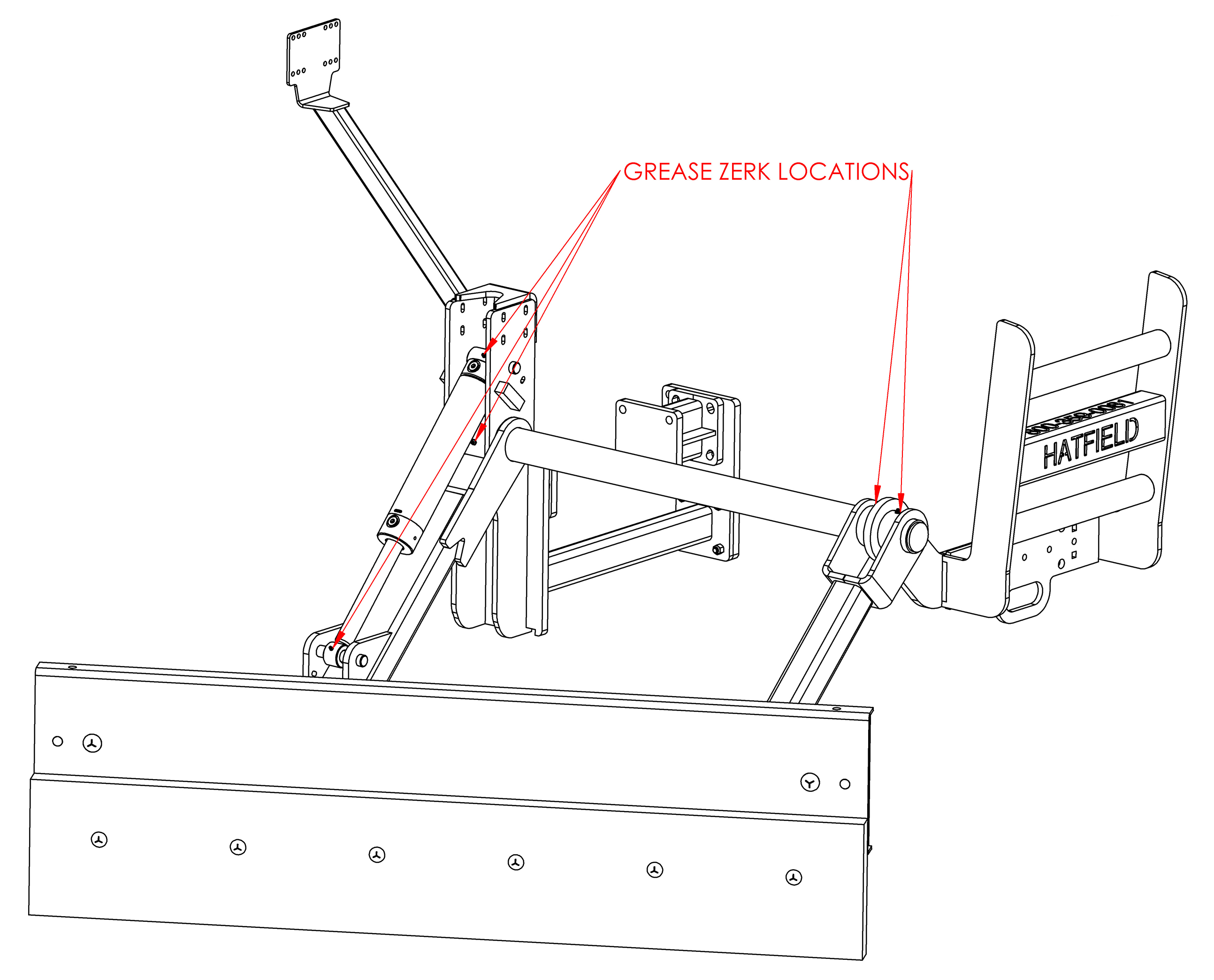
Replacing Plastic (UHMW) Blade
Step 1: Remove bolts.
Step 2: Replace blade and bolts.
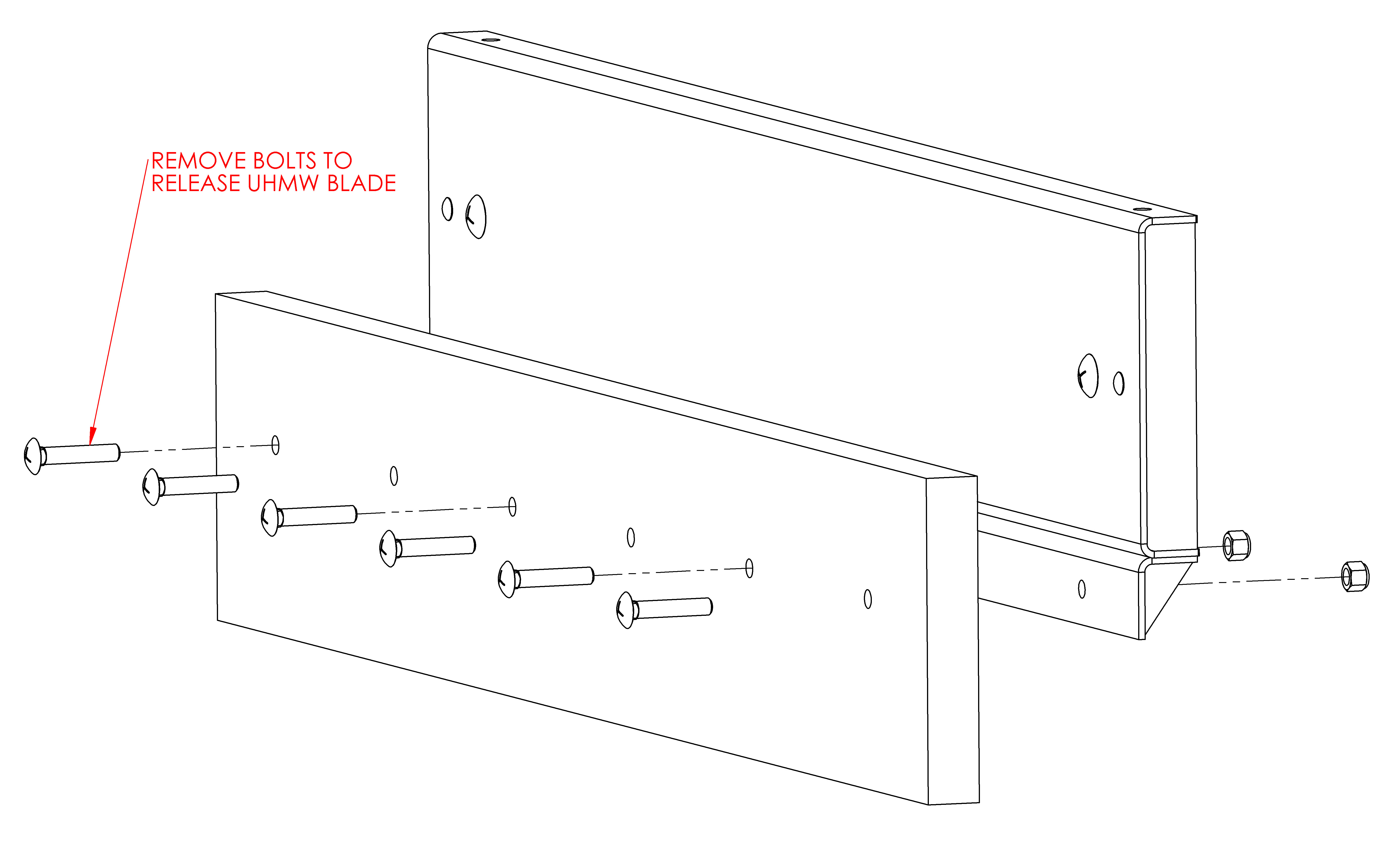
Replacing Outer Bearing Pad and Swivel Block
Step 1: Remove 2 outer nuts and 4 center nuts.
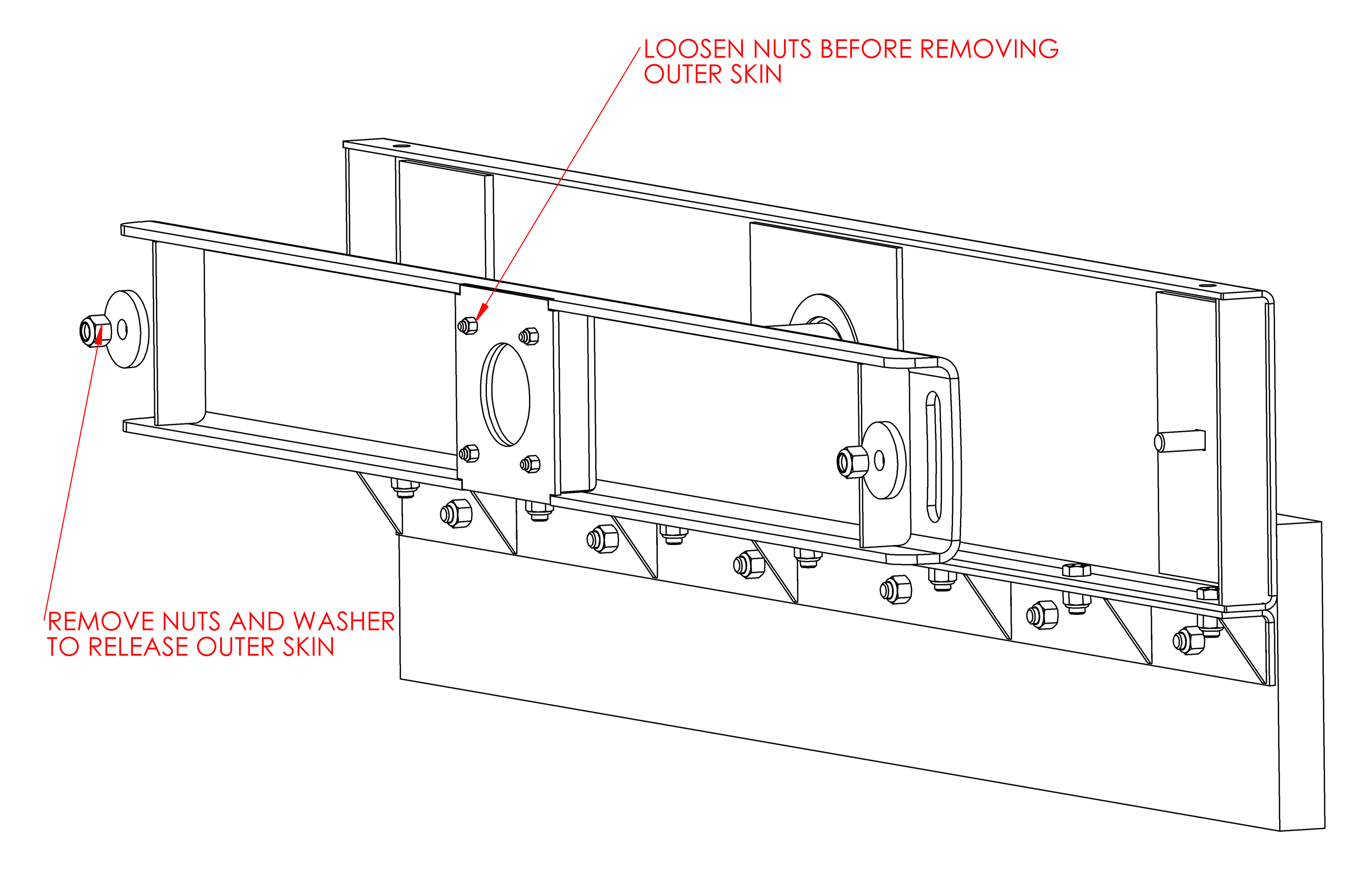
Step 2: Replace outer bearing pad by removing the small nut on the outside edge and removing the outer skin from the inner skin.
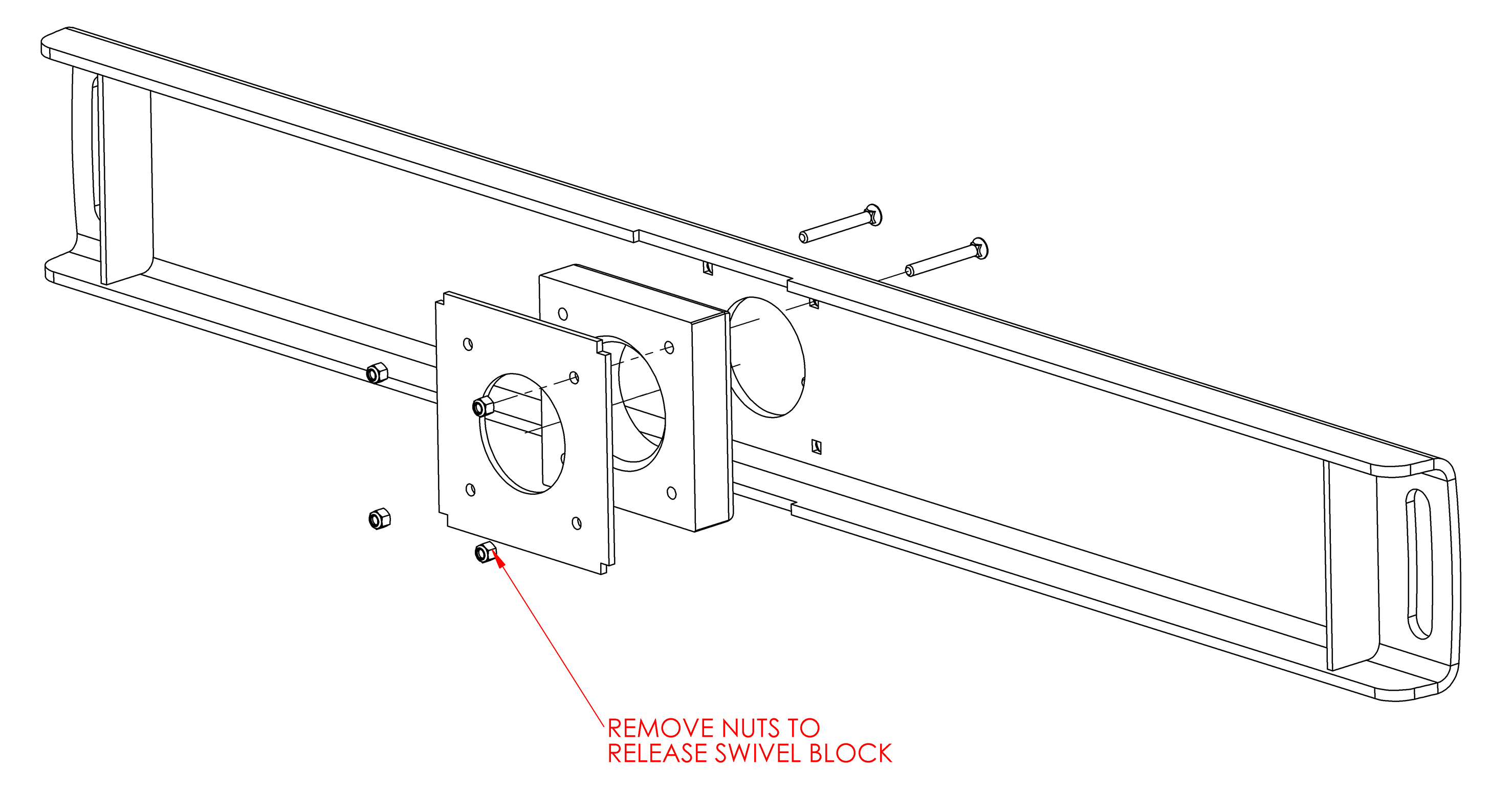
Step 3: Put outer skin and inner skin back together again replacing center swirl block bolts.
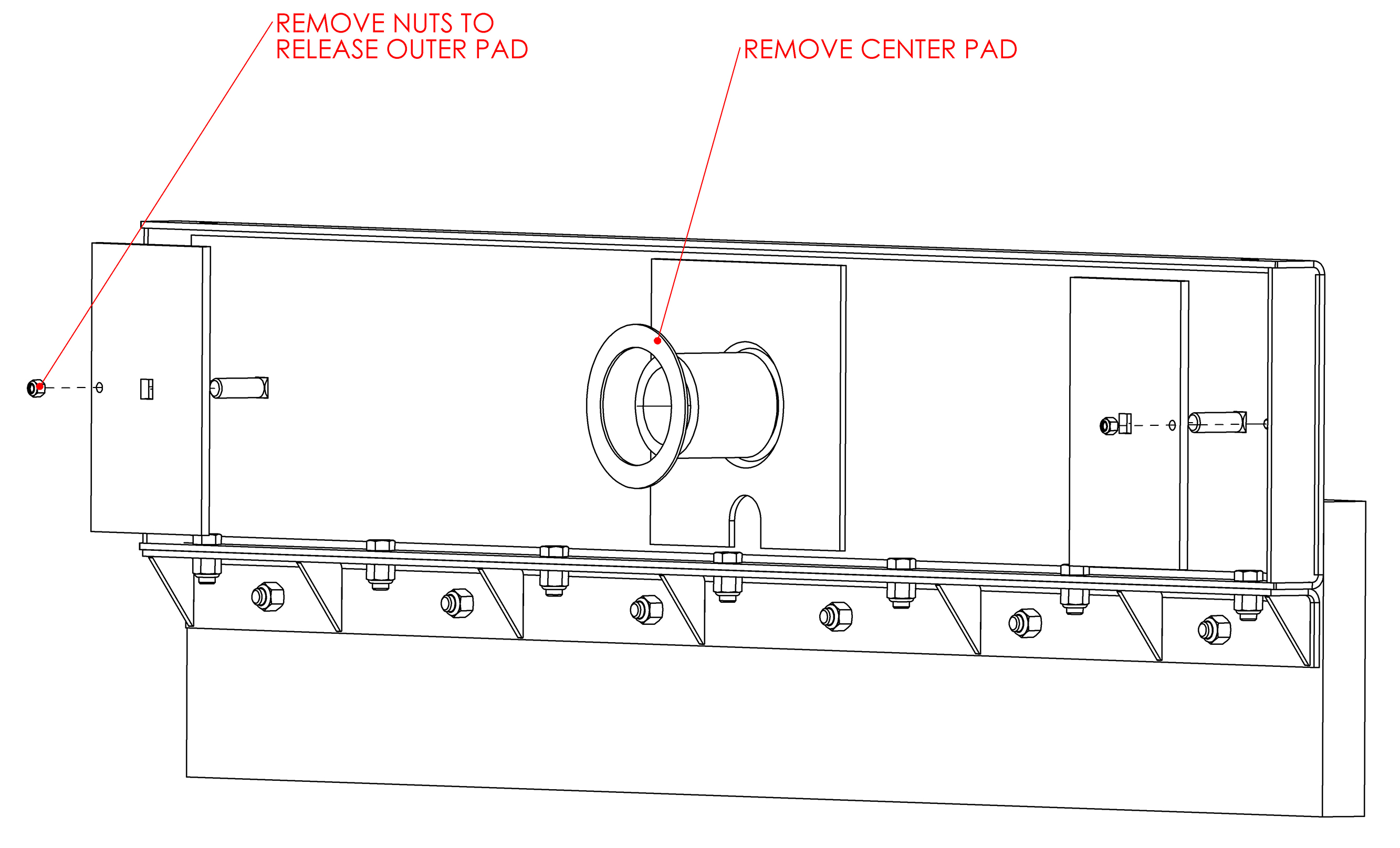
General Operating Instructions
Inspect the following items before each operating session with the Push-up Blade.
Operating Checklist
- Ensure that the Bed Buster is securely attached to the Power Machine and that the hooks and pins are in good repair and fully engaged.
- Check that all plugs are in place and there are no leaks in the hydraulic lines or fittings.
- Be certain that all bolts and nuts are tight.
- Make sure UHMW blade is in good condition. Check maintenance for replacement.
- Check that any optional equipment is in good repair and properly secured.
- Check initially and periodically for loose bolts and pins.
- Ensure all grease points have been greased according to the maintenance schedule. See Lubrication Points in Maintenance tab.
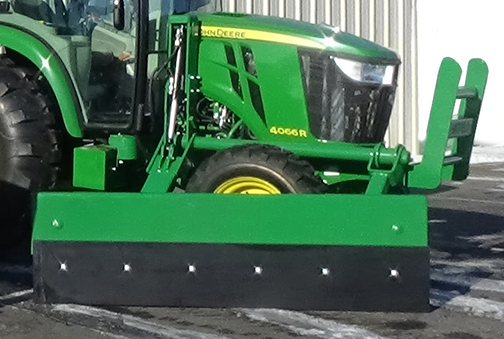
Startup Procedure
- Enter tractor and apply all safety measures (seat belt, etc.)
- Start tractor
- Align tractor parallel to feed line
- Let pushblade down
- Ensure you are travelling the correct distance from feed line
- Travel under 10 mph while pushing feed
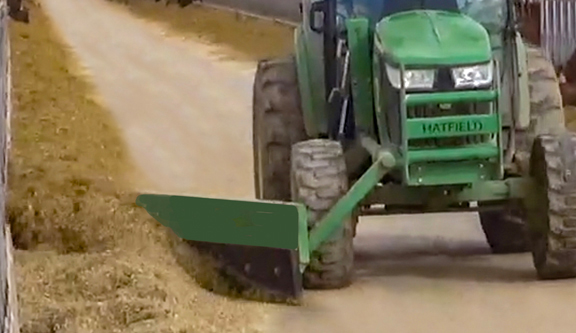
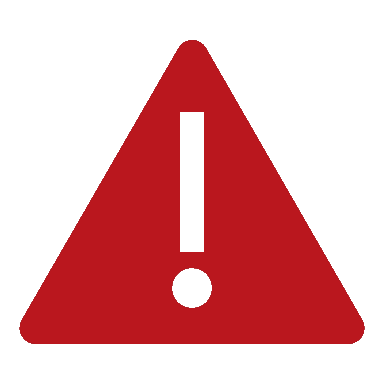
DANGER
To avoid serious injury or death:
- All guards and shields must be installed and in good working condition while operating the implement.
- Never make contact with underground utilities such as electrical power lines, gas lines, phone lines, etc. They can cause serious injury or death from electrocution, explosion, or fire. Always call 811 (USA) before digging so that they can mark the location of underground services in the area. For contact information, see Dig Safe in the Important Safety Information 2 tab.
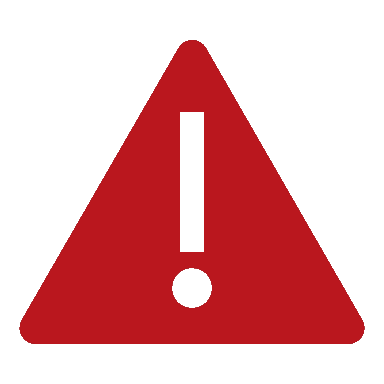
WARNING
To avoid serious injury or death:
- Allow only persons to operate this implement who have fully read and comprehended this manual, and who have been properly trained in the safe operation of this implement. Serious injury or death can result from the inability to read, understand, and follow instructions provided in this manual.
- Never carry riders on the implement or tractor. Riders can obstruct the operator’s view, interfere with controls, be pinched by moving components, become entangled in rotating components, struck by objects, thrown about, fall off and be run over, etc.
- Perform scheduled maintenance. Check for loose hardware, missing parts, broken parts, structural cracks, and excessive wear. Make repairs before putting the implement back into service.
- Be careful when working areas where obstructions can be hidden. Always mark potential hazards with a visible flag. Travel slowly through high-risk areas and be prepared to stop immediately should implement make contact with a solid object.
- Do not use implement for a purpose other than the work it is designed to do as defined in this manual.
- Do not use implement as a man lift, work platform or as a wagon to carry objects. It is not properly designed or guarded for this use.
- Do not use implement to lift objects; to pull objects such as fence posts, stumps, etc.; or to push objects. The unit is not designed or guarded for these uses.
- Do not use implement to tow other equipment unless it is designed with a tow hitch. Doing so can result in loss of control and damage the equipment.
- Do not alter implement or replace parts on the implement with other brands. Other brands may not fit properly or meet OEM (Original Equipment Manufacturer) specifications. They can weaken the integrity and impair the safety, function, performance, and life of the implement. Replace parts only with genuine OEM parts.
- Avoid exposure to dust containing crystalline silica particles. This dust can cause serious injury to the lungs (silicosis). Because crystalline silica is a basic component of sand and granite, many activities at construction sites produce dust containing crystalline silica. Trenching, sawing, and boring of material containing crystalline silica can produce dust containing crystalline silica.
John Deere 3 Series Parts
3025E, 3032E, 3038E
Open Station
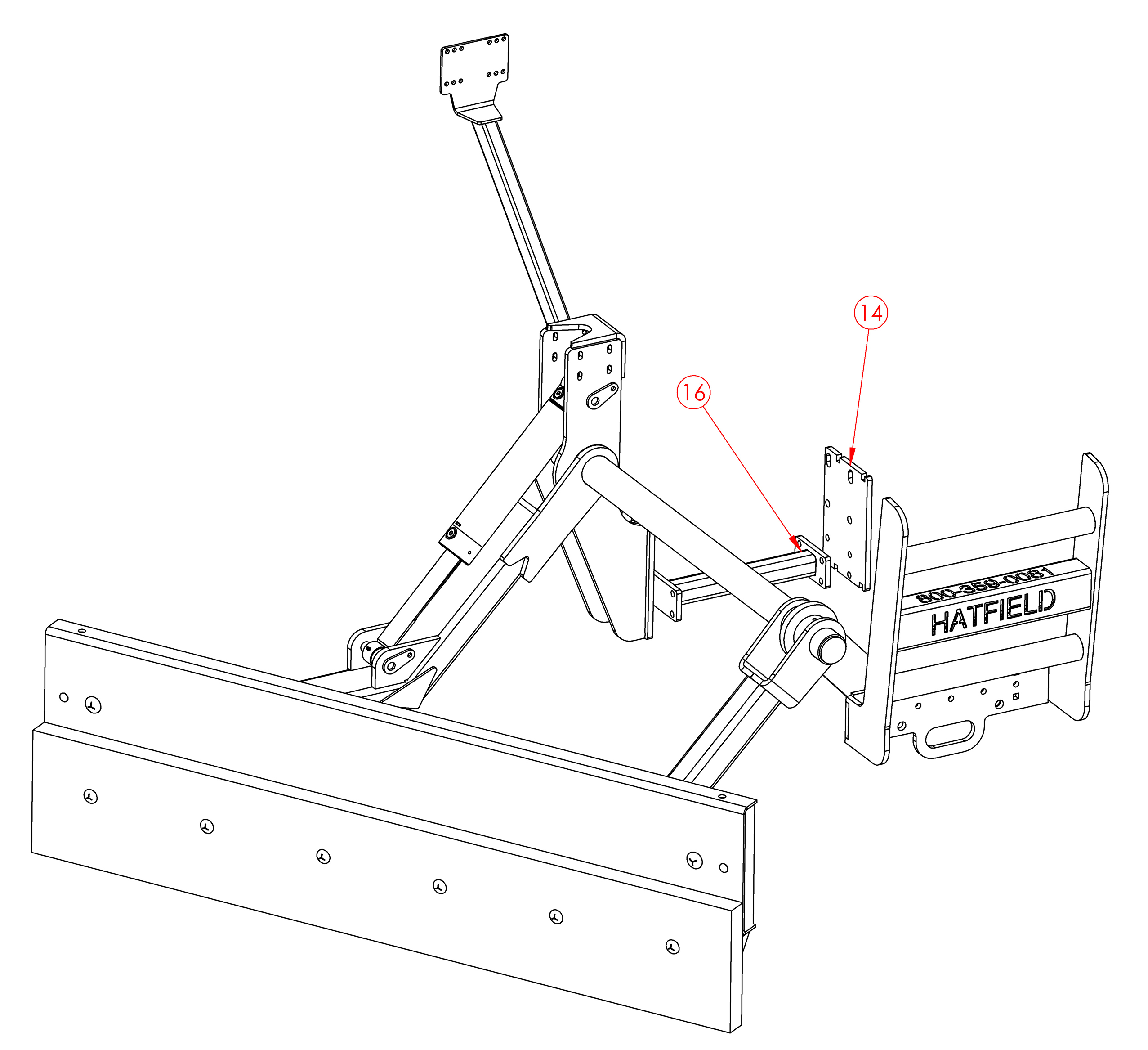
| Part | Quantity | Description | Part Number |
|---|---|---|---|
| 14 | 1 | John Deere 3E Series, Rear Frame Base Plate | 530-3100 |
| 16 | 2 | John Deere 3E Series, Under Belly Support | 530-2305 |
Accessories
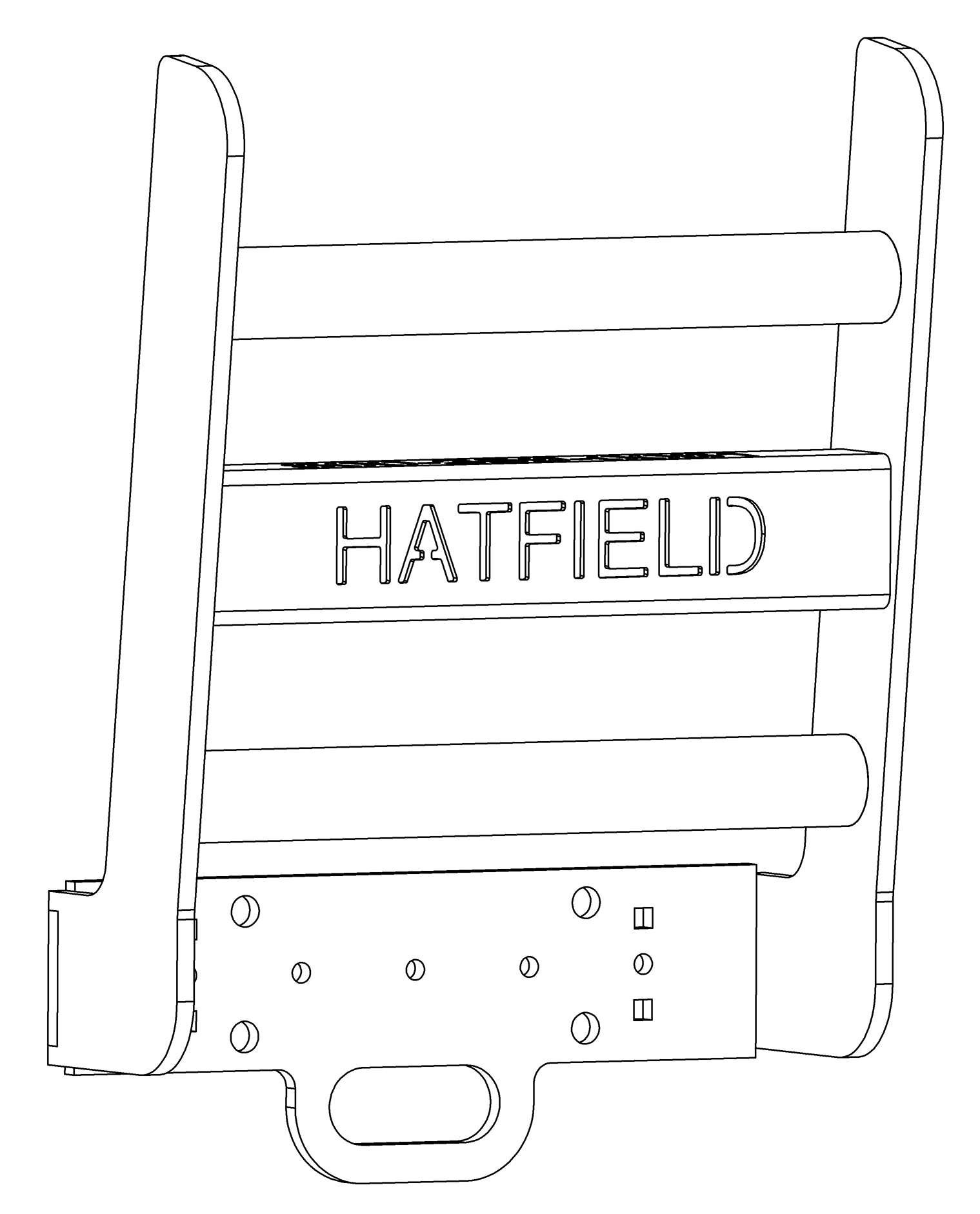
530-2047 - FRONT GRILL GUARD ASSEMBLY
3033R, 3039R, 3046R
Open Station
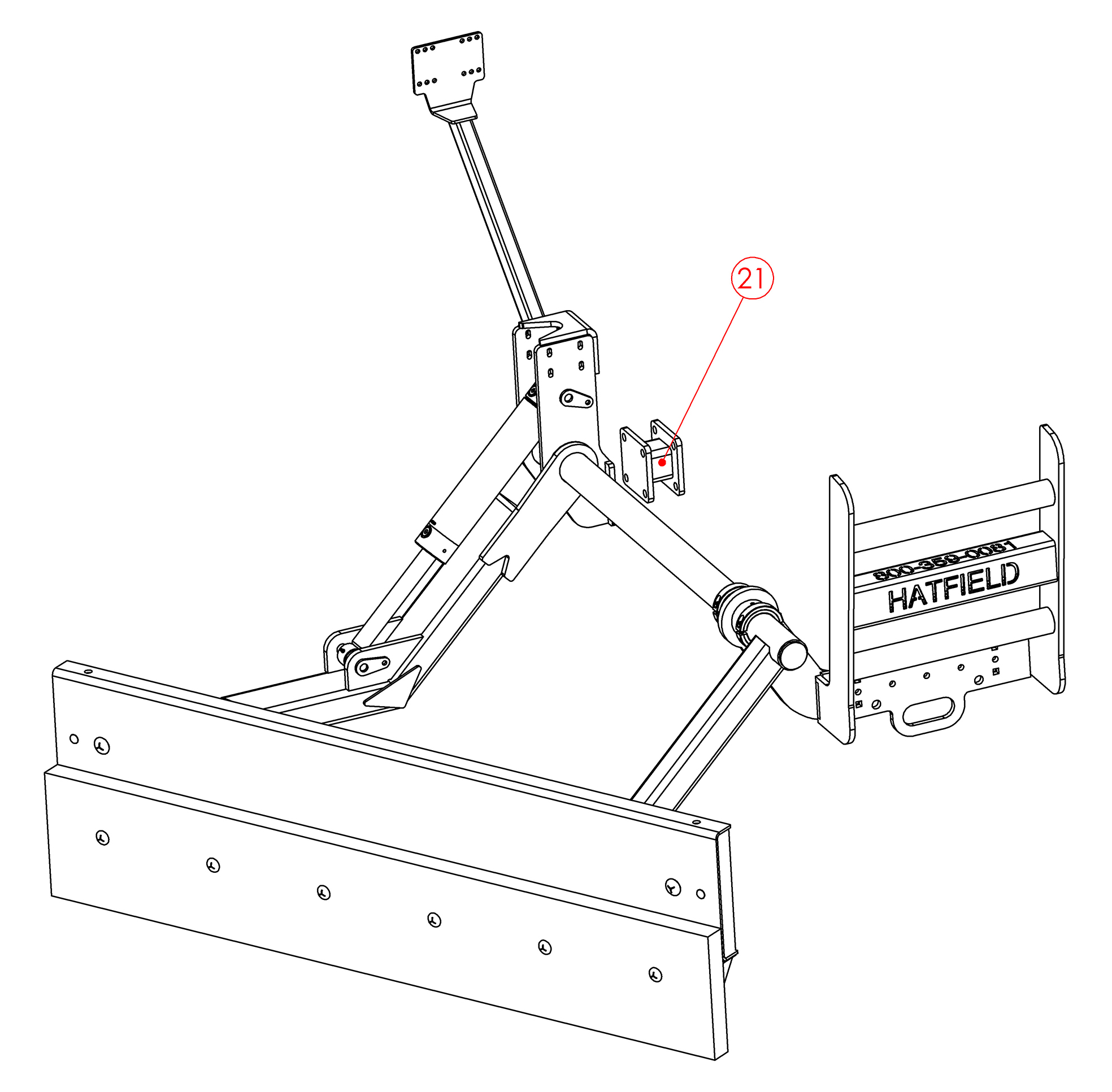
| Part | Quantity | Description | Part Number |
|---|---|---|---|
| 21 | 1 | John Deere 3E Series, 3033R Spacer Assembly | 530-2306 |
Accessories
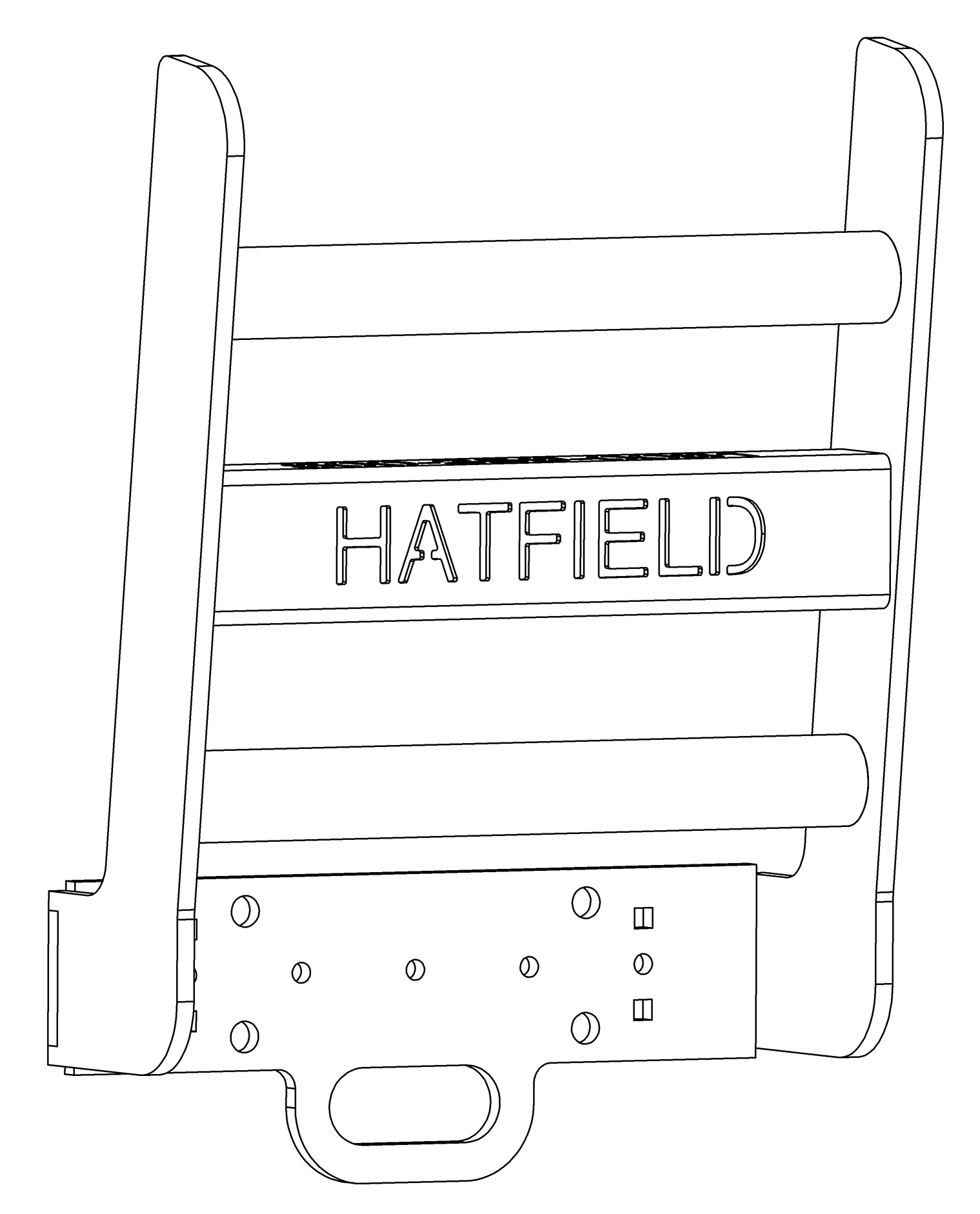
530-2047 - FRONT GRILL GUARD ASSEMBLY
Cab

| Part | Quantity | Description | Part Number |
|---|---|---|---|
| 21 | 1 | John Deere 3E Series, 3033R Spacer Assembly | 530-2306 |
Accessories

530-2047 - FRONT GRILL GUARD ASSEMBLY
John Deere 4 Series Parts
4044M, 4052M, 4066M
Open Station
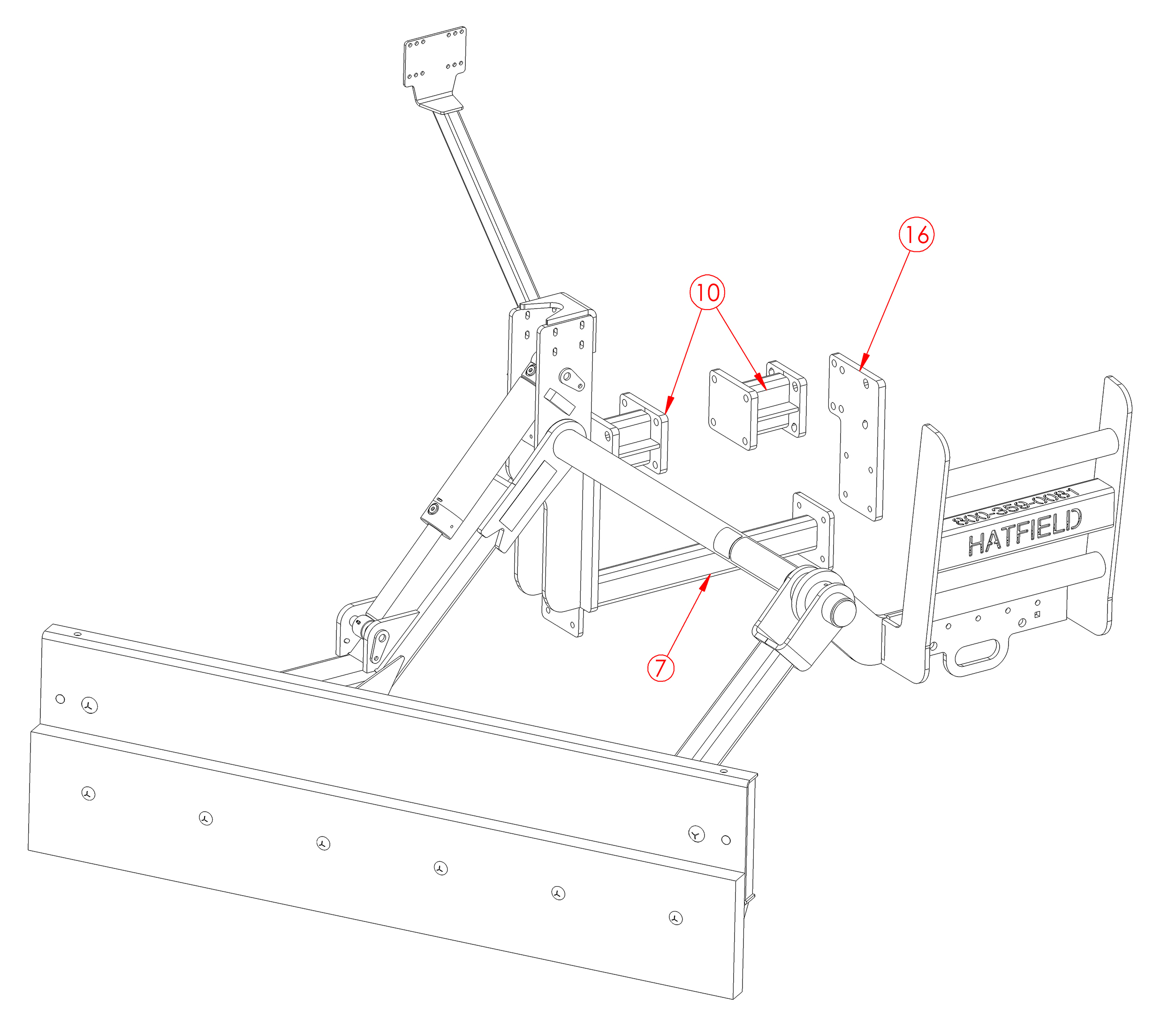
| Part | Quantity | Description | Part Number |
|---|---|---|---|
| 7 | 1 | John Deere 4 Series, Belly Cross Support Assembly | 530-2408 |
| 10 | 2 | John Deere 4 Series, Cab Spacer Mount Assembly | 530-2048 |
| 16 | 1 | John Deere 4 Series, Cradle Base Plate Left | 530-4017 |
Accessories
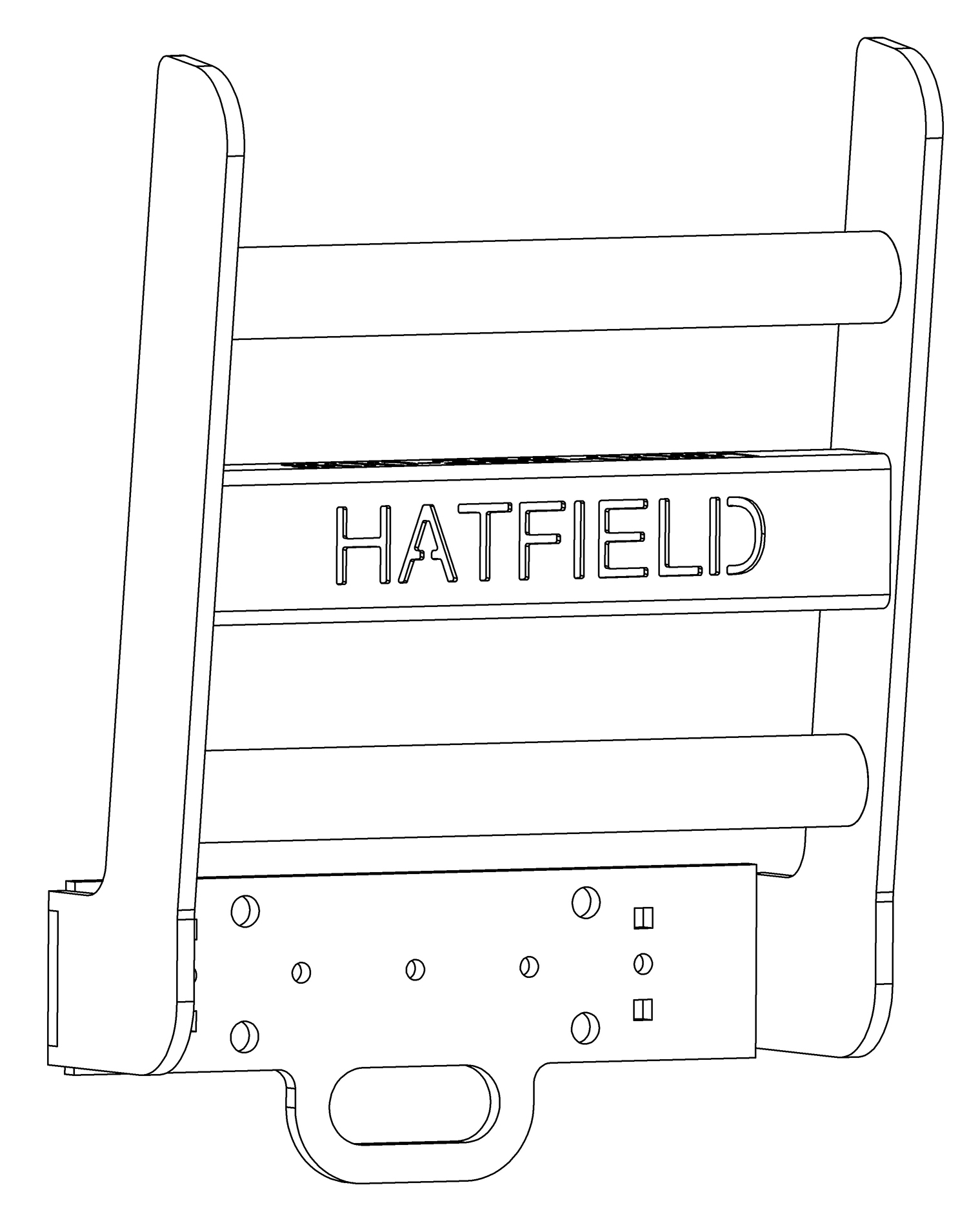
530-2047 - FRONT GRILL GUARD ASSEMBLY
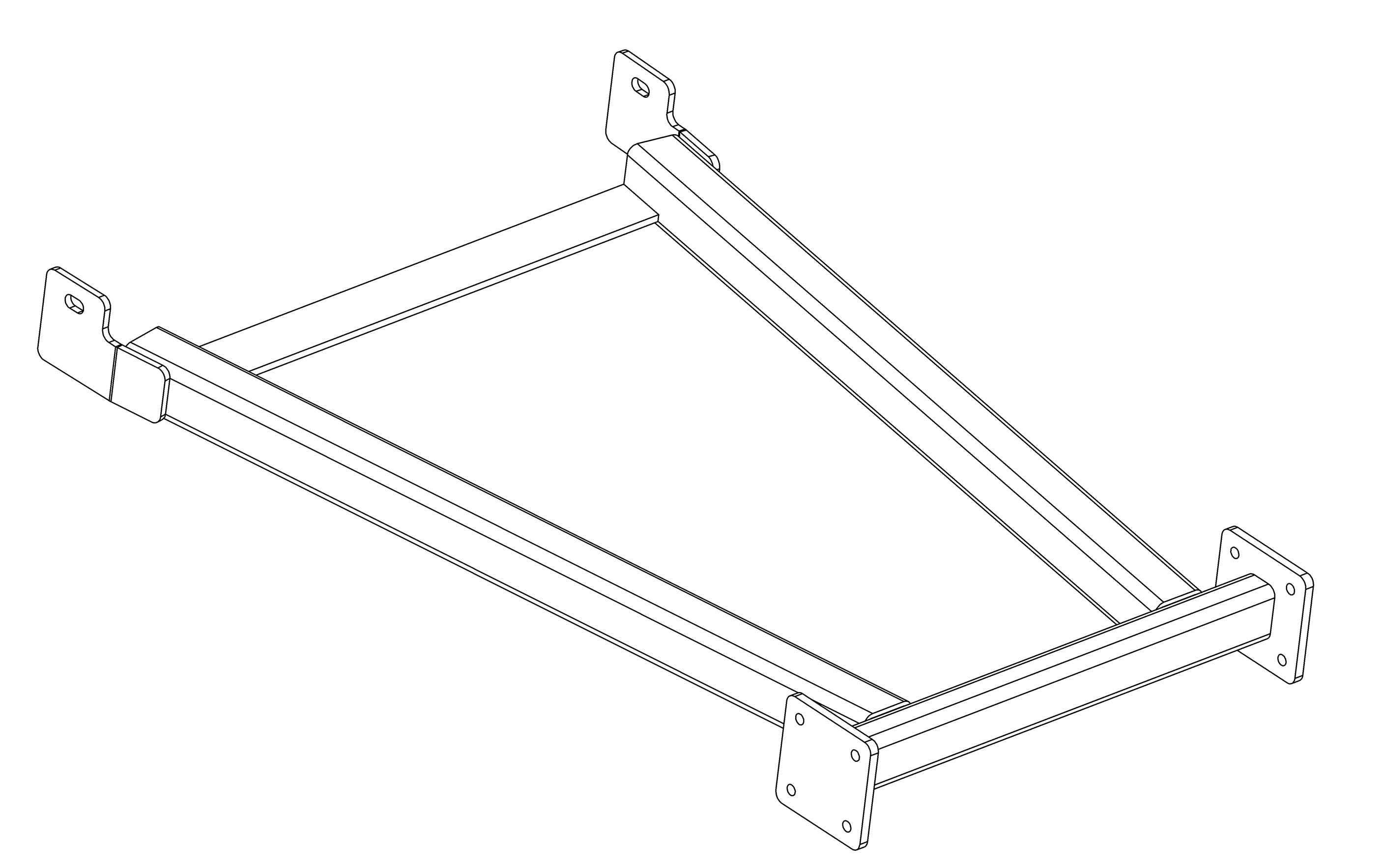
530-2049 - LOWER A FRAME ASSEMBLY
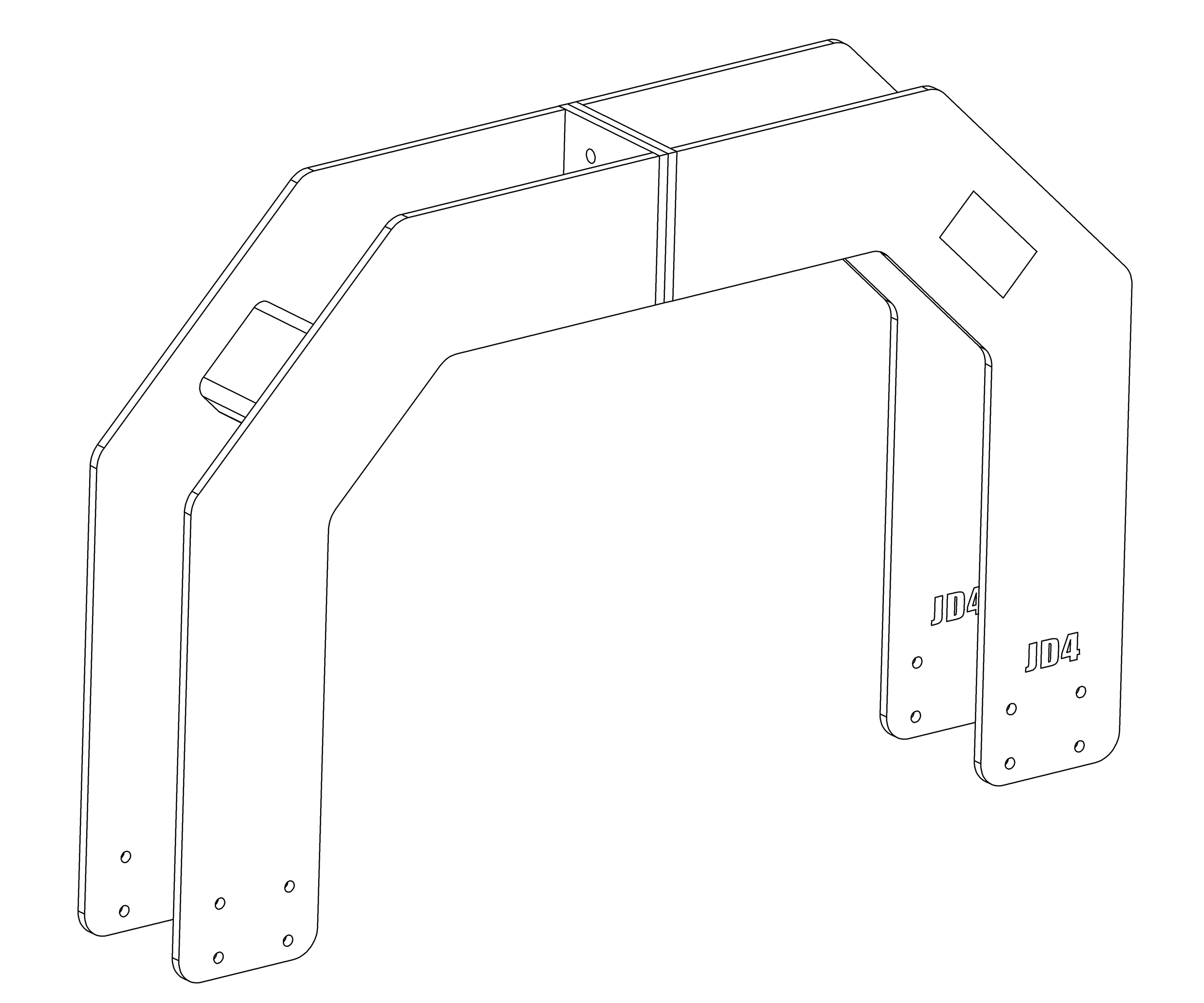
530-2101- OVER THE HOOD SUPPORT
4044R, 4052R, 4066R
Open Station
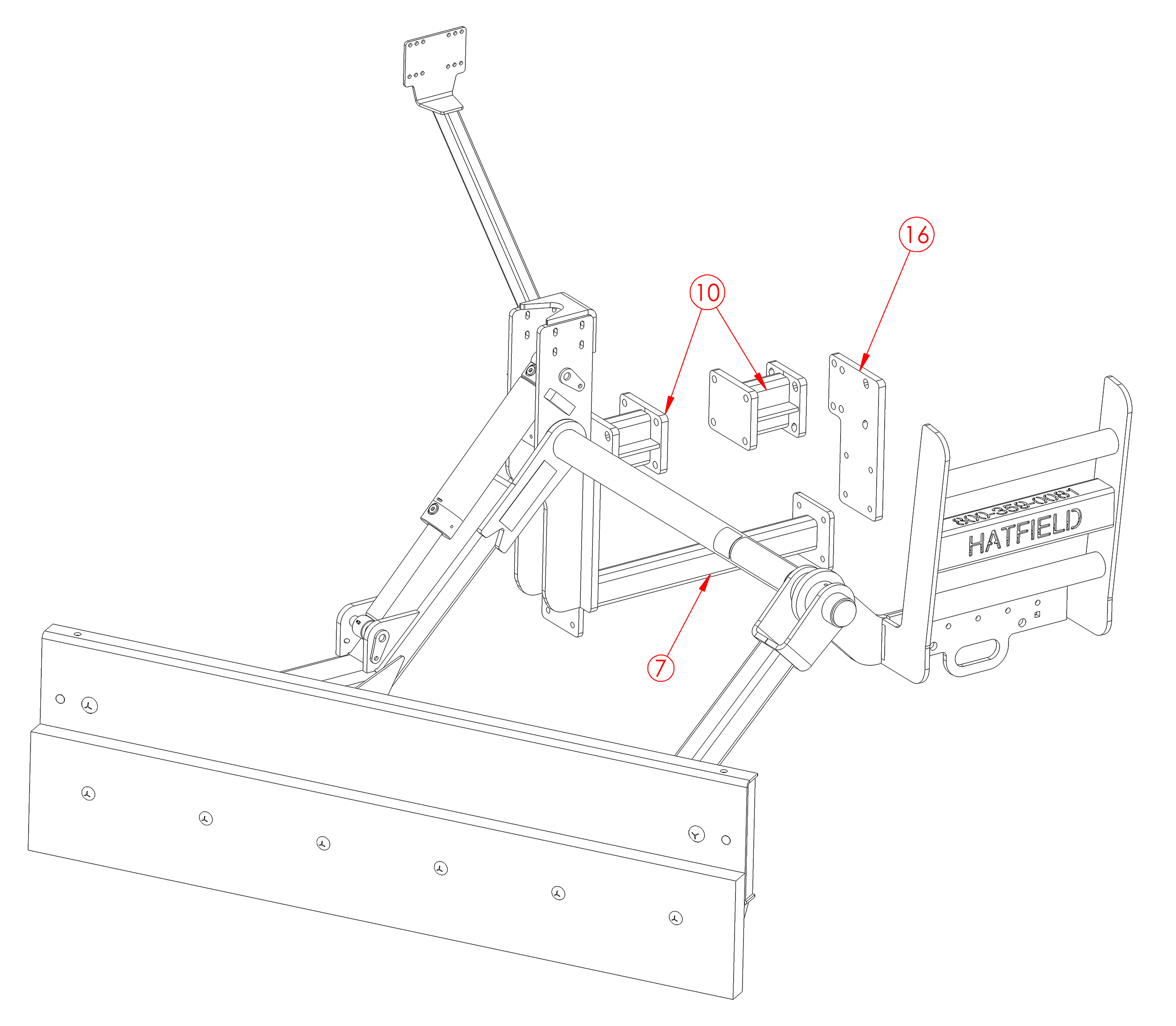
| Part | Quantity | Description | Part Number |
|---|---|---|---|
| 7 | 1 | John Deere 4 Series, Belly Cross Support Assembly | 530-2408 |
| 10 | 2 | John Deere 4 Series, Cab Spacer Mount Assembly | 530-2048 |
| 16 | 1 | John Deere 4 Series, Cradle Base Plate Left | 530-4017 |
Accessories
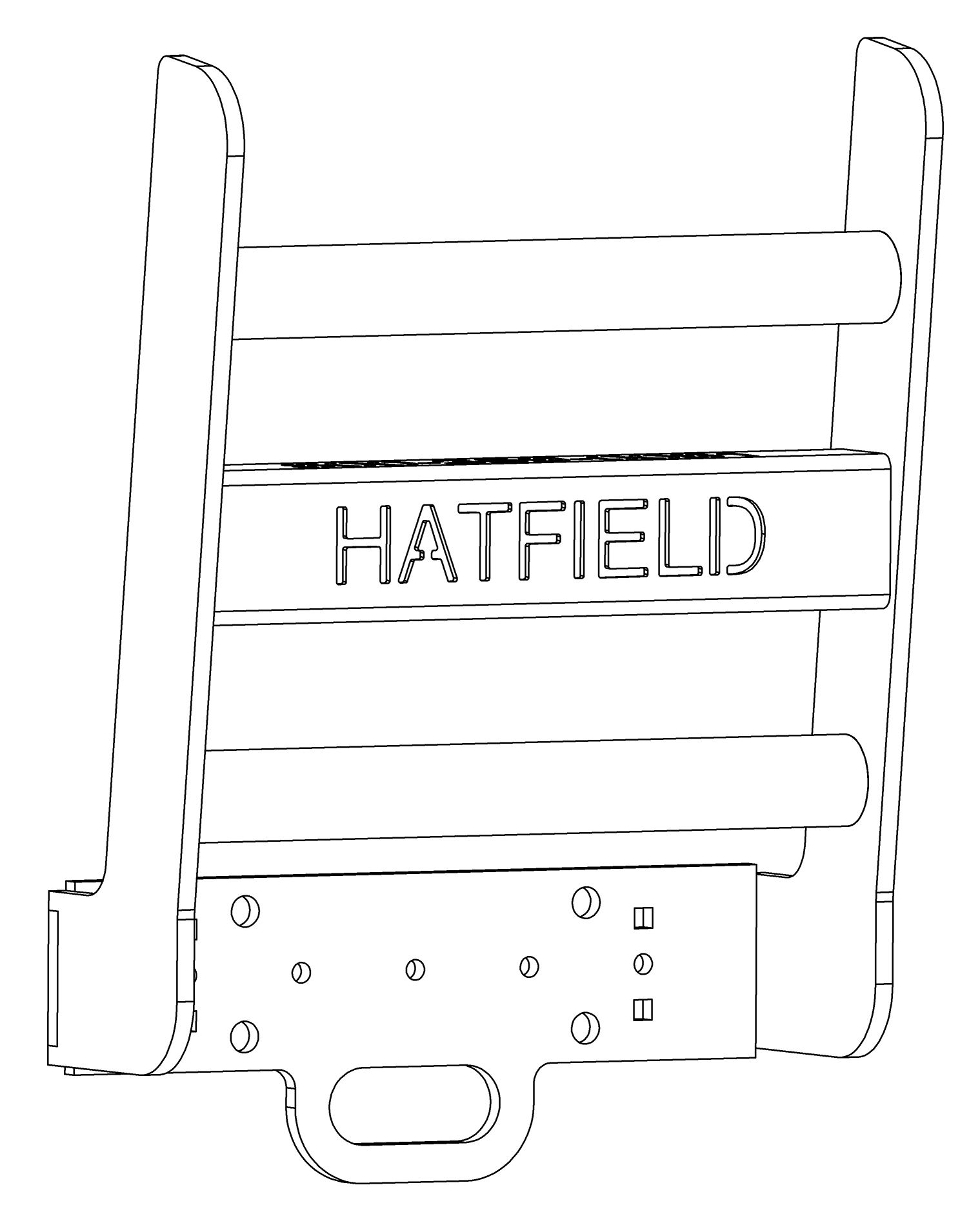
530-2047 - FRONT GRILL GUARD ASSEMBLY
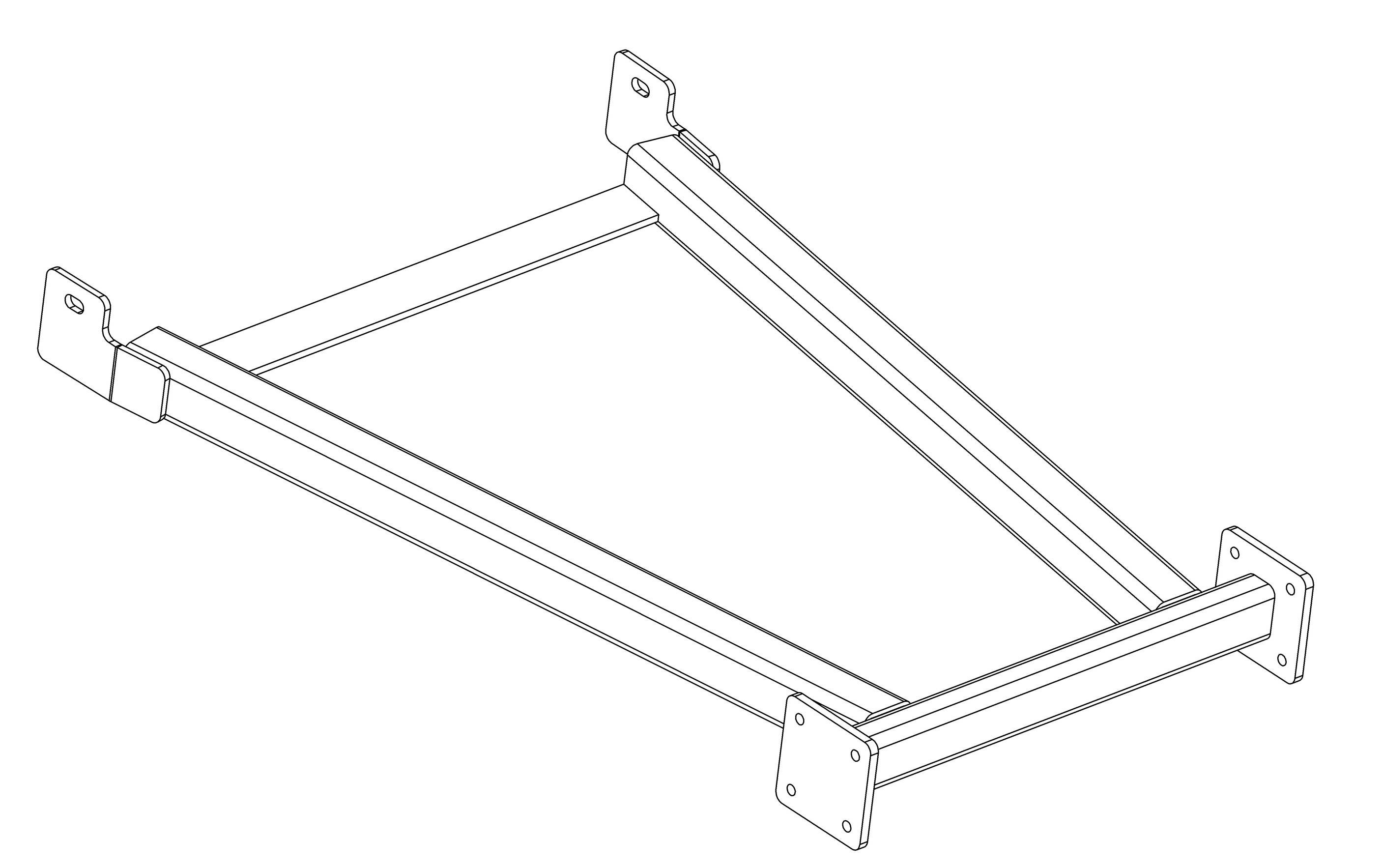
530-2049 - LOWER A FRAME ASSEMBLY
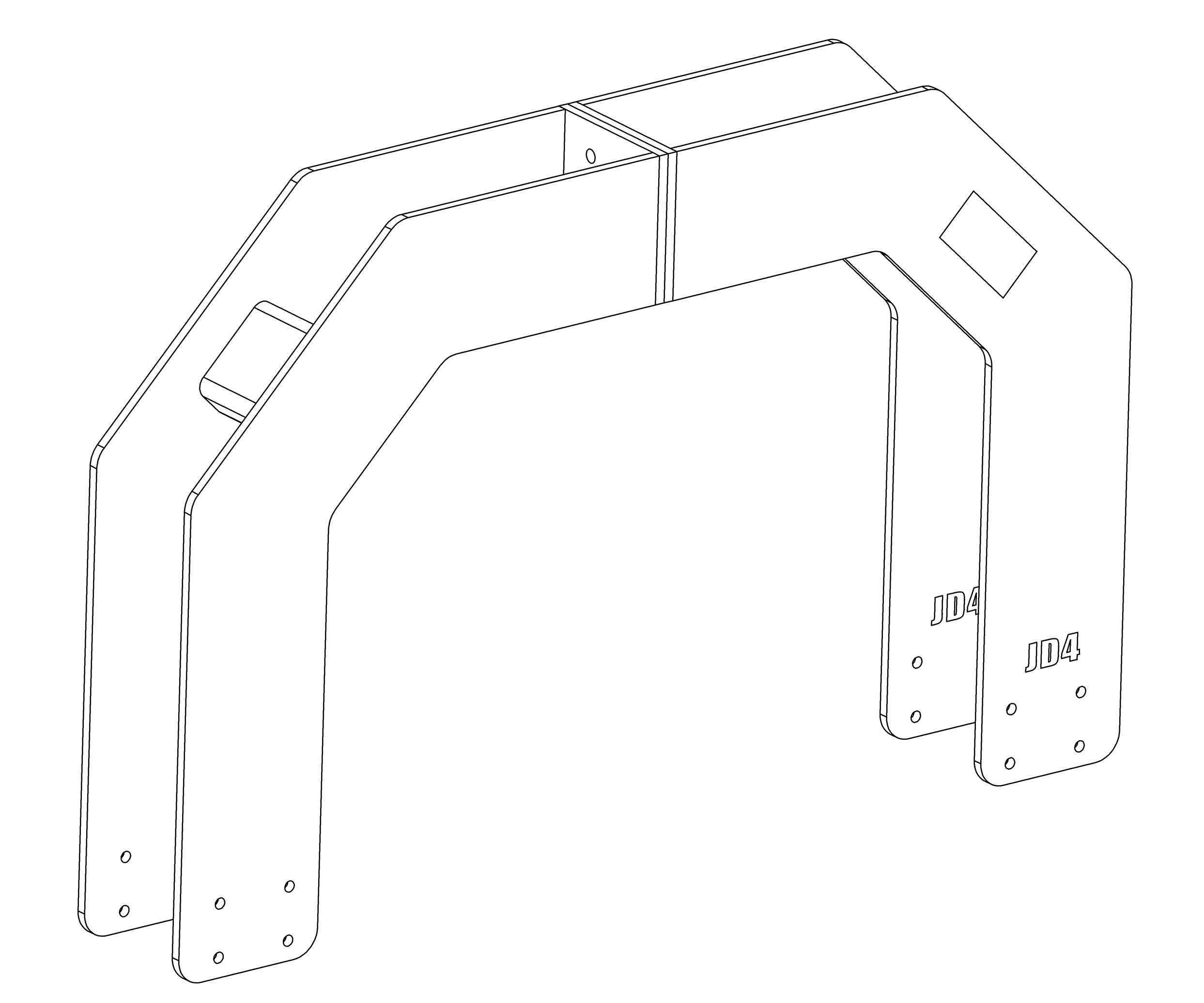
530-2101- OVER THE HOOD SUPPORT
Cab
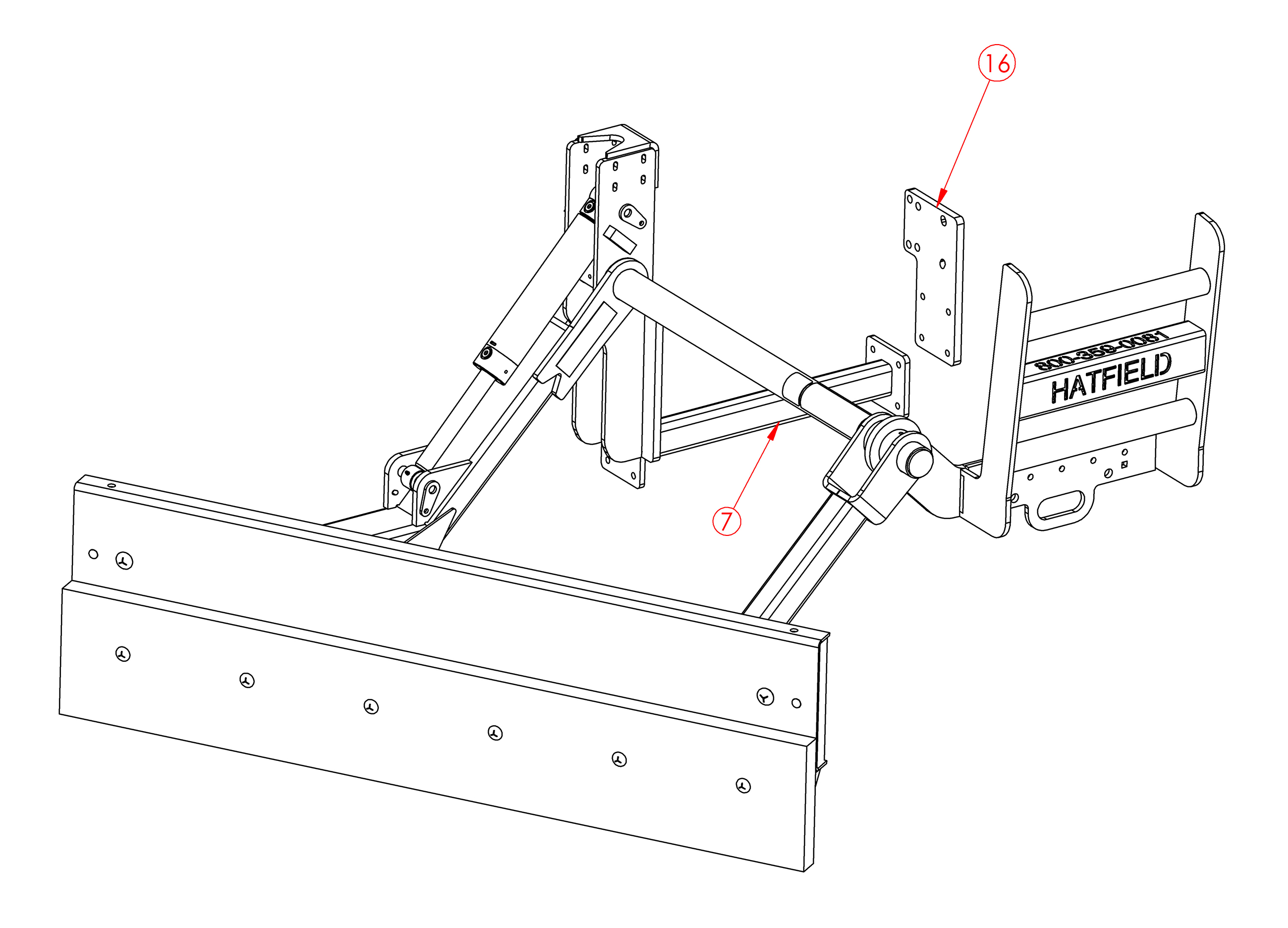
| Part | Quantity | Description | Part Number |
|---|---|---|---|
Accessories
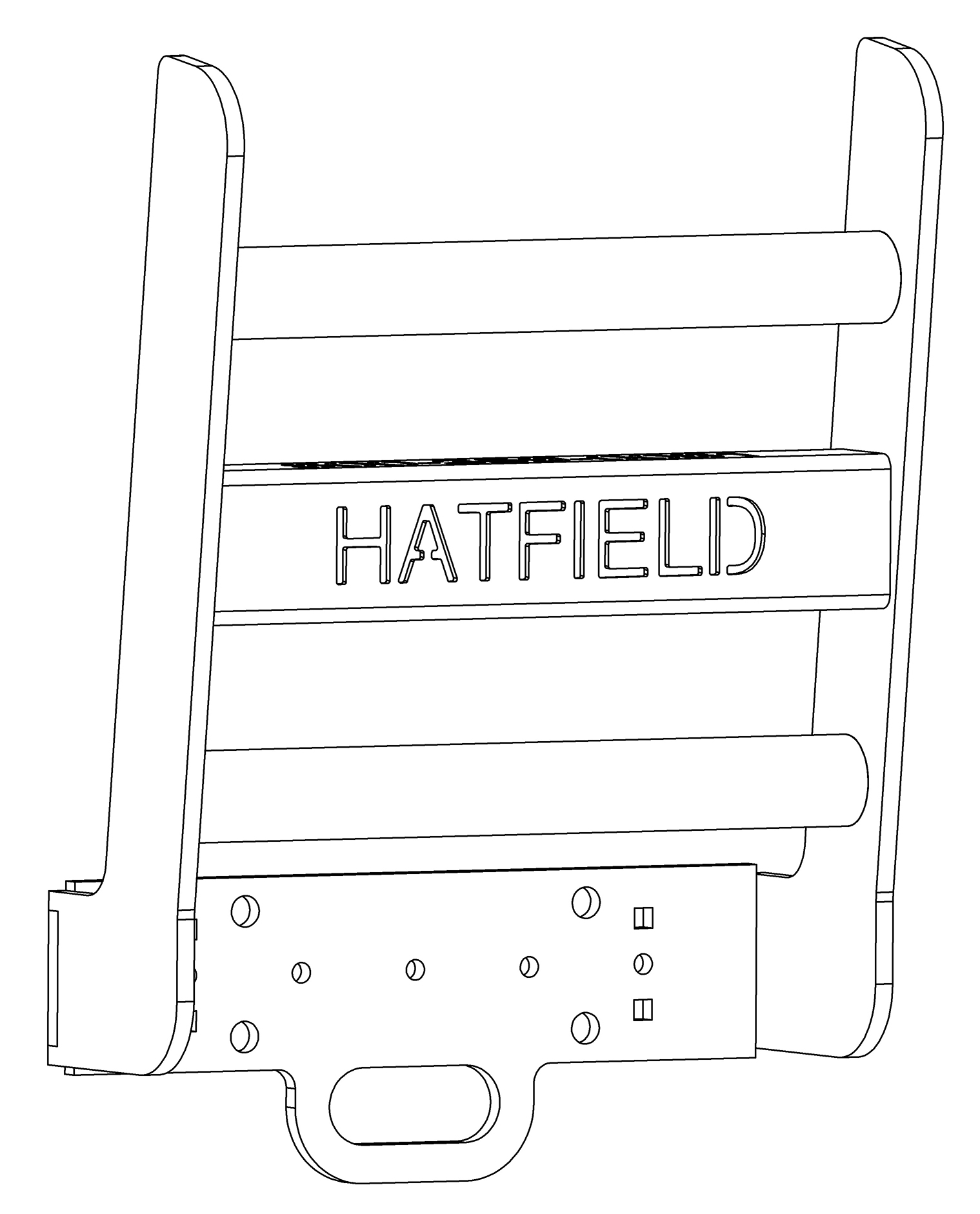
530-2047 - FRONT GRILL GUARD ASSEMBLY
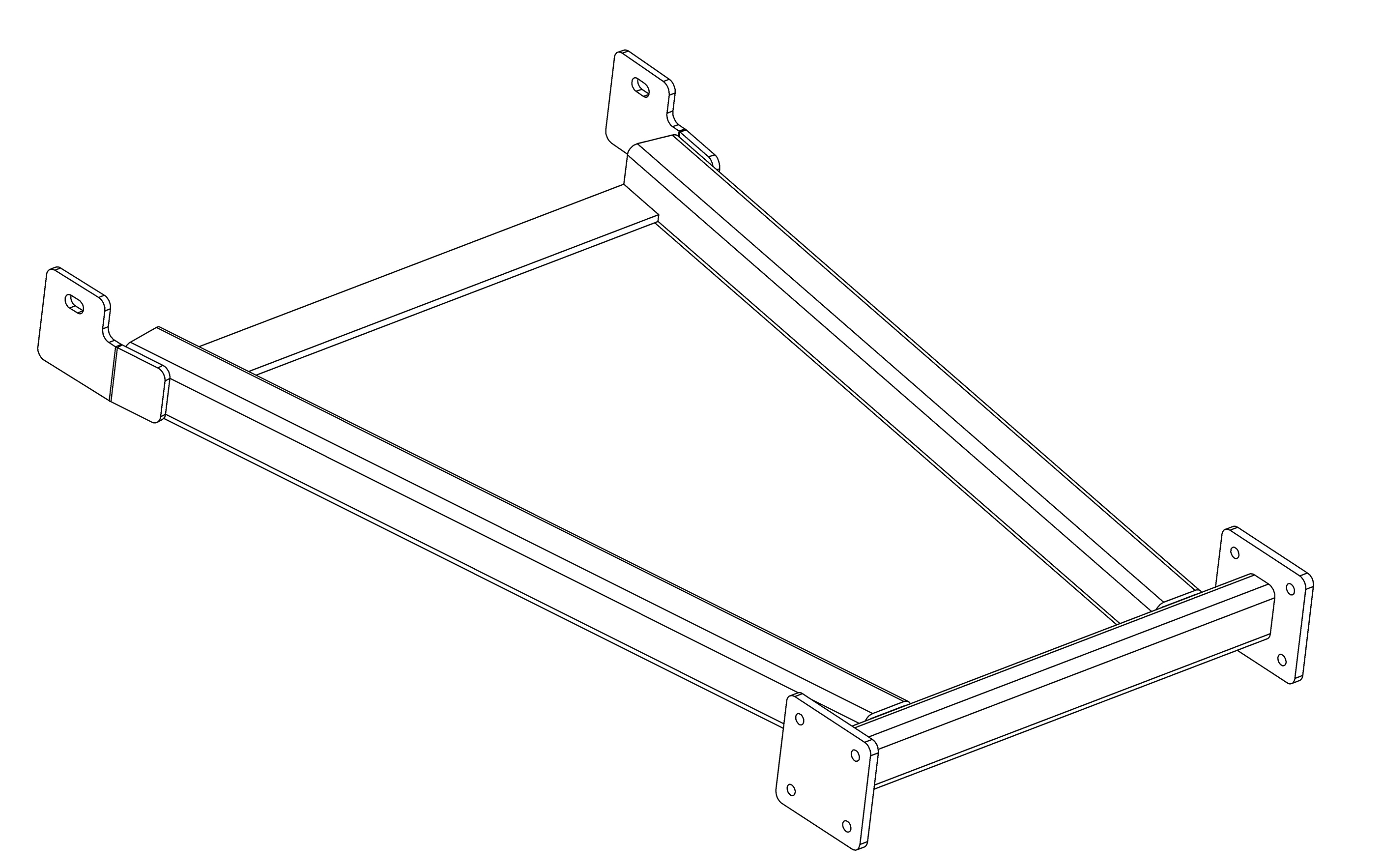
530-2049 - LOWER A FRAME ASSEMBLY
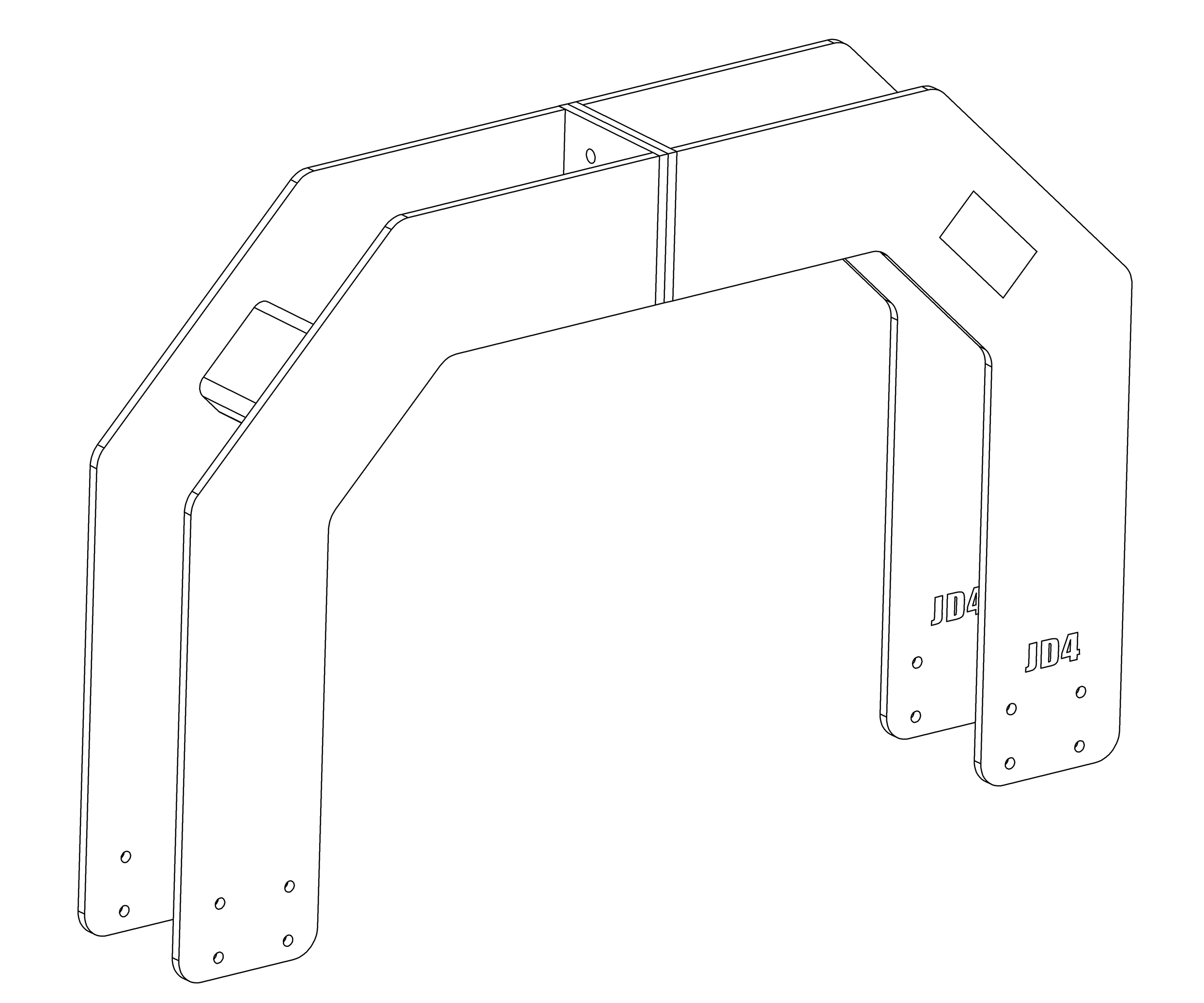
530-2101- OVER THE HOOD SUPPORT
4075R
Open Station
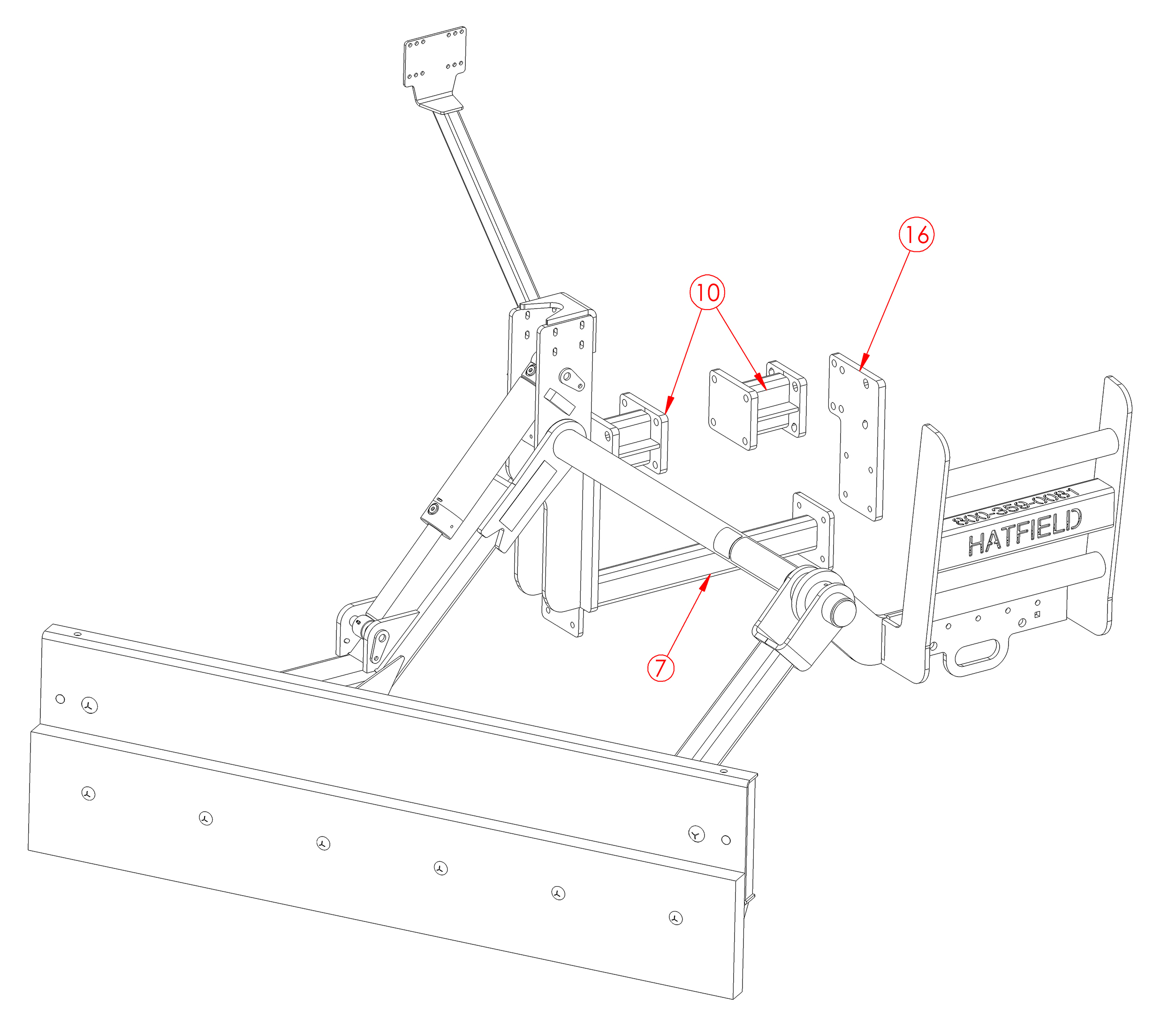
| Part | Quantity | Description | Part Number |
|---|---|---|---|
| 7 | 1 | John Deere 4 Series, Belly Cross Support Assembly | 530-2408 |
| 10 | 2 | John Deere 4 Series, Cab Spacer Mount Assembly | 530-2048 |
| 16 | 1 | John Deere 4 Series, Cradle Base Plate Left | 530-4017 |
Accessories
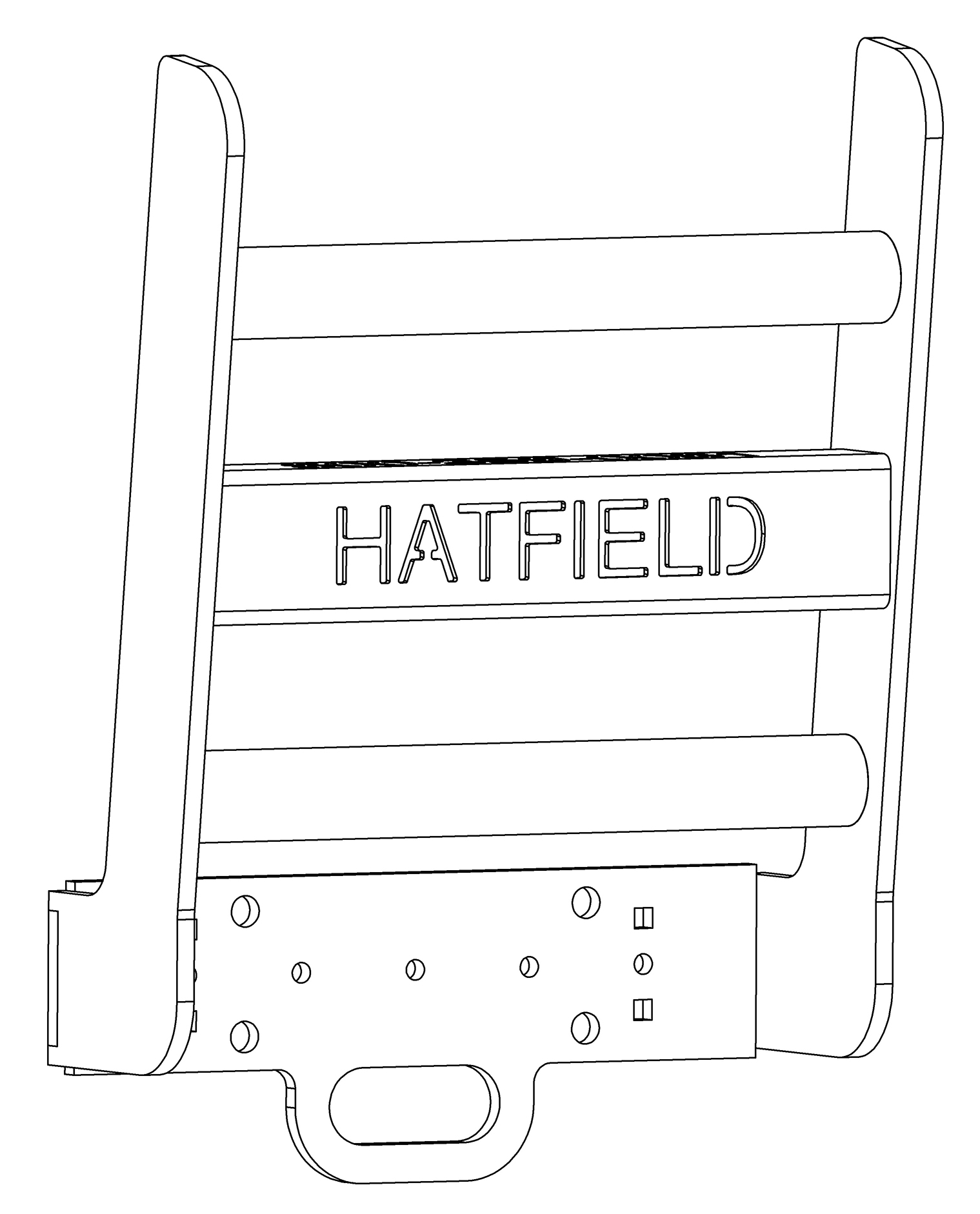
530-2047 - FRONT GRILL GUARD ASSEMBLY
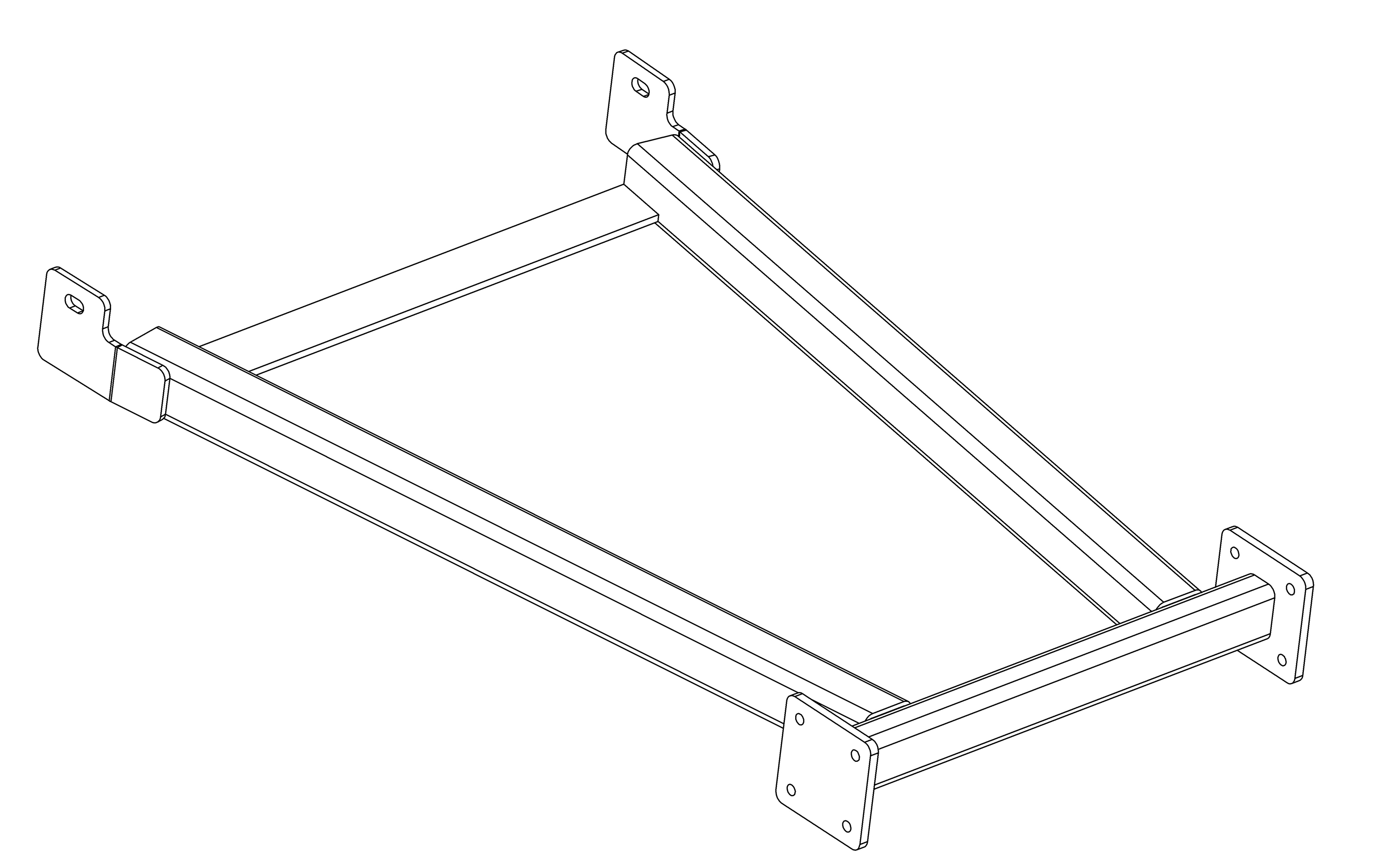
530-2049 - LOWER A FRAME ASSEMBLY
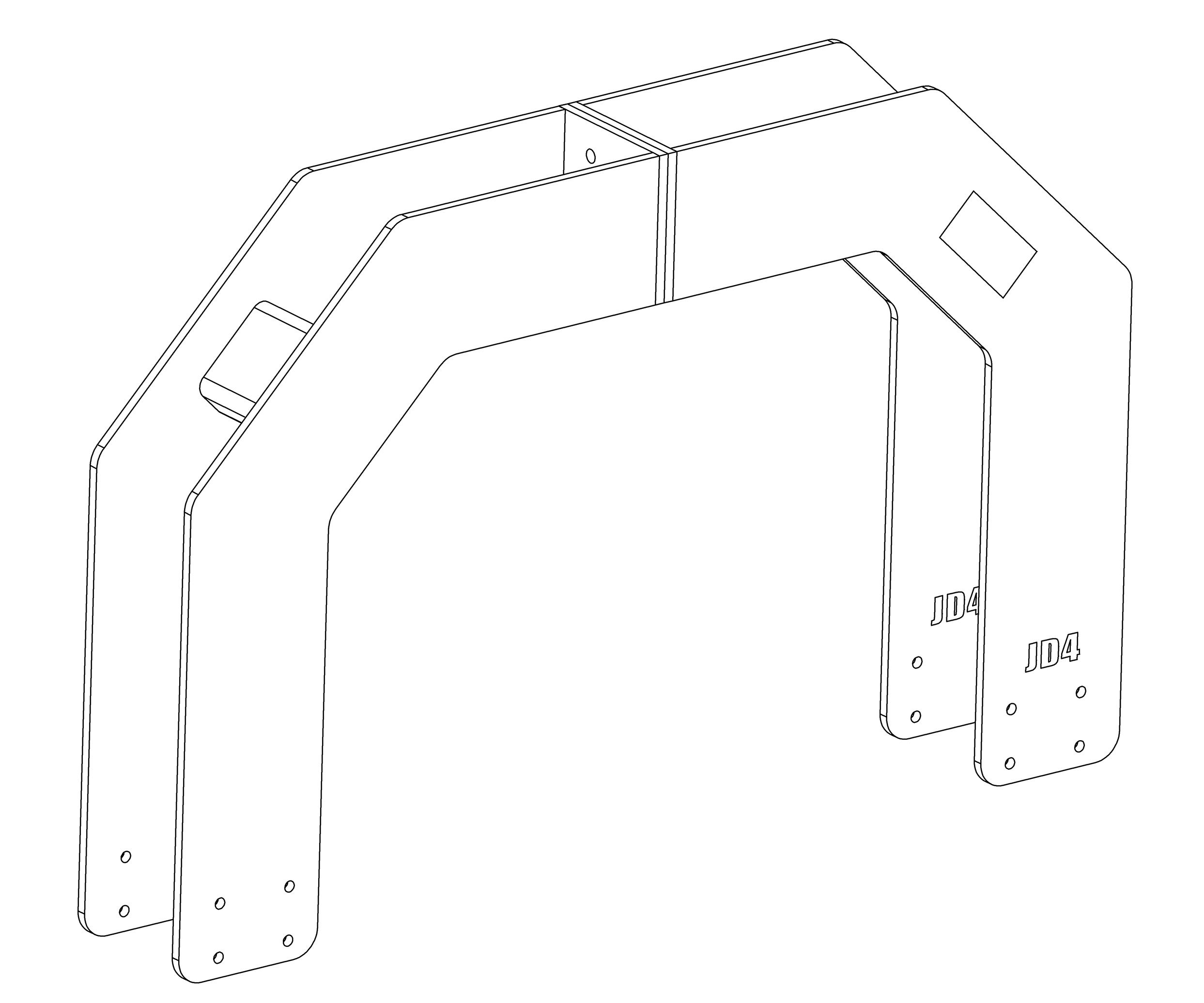
530-2101- OVER THE HOOD SUPPORT
Cab
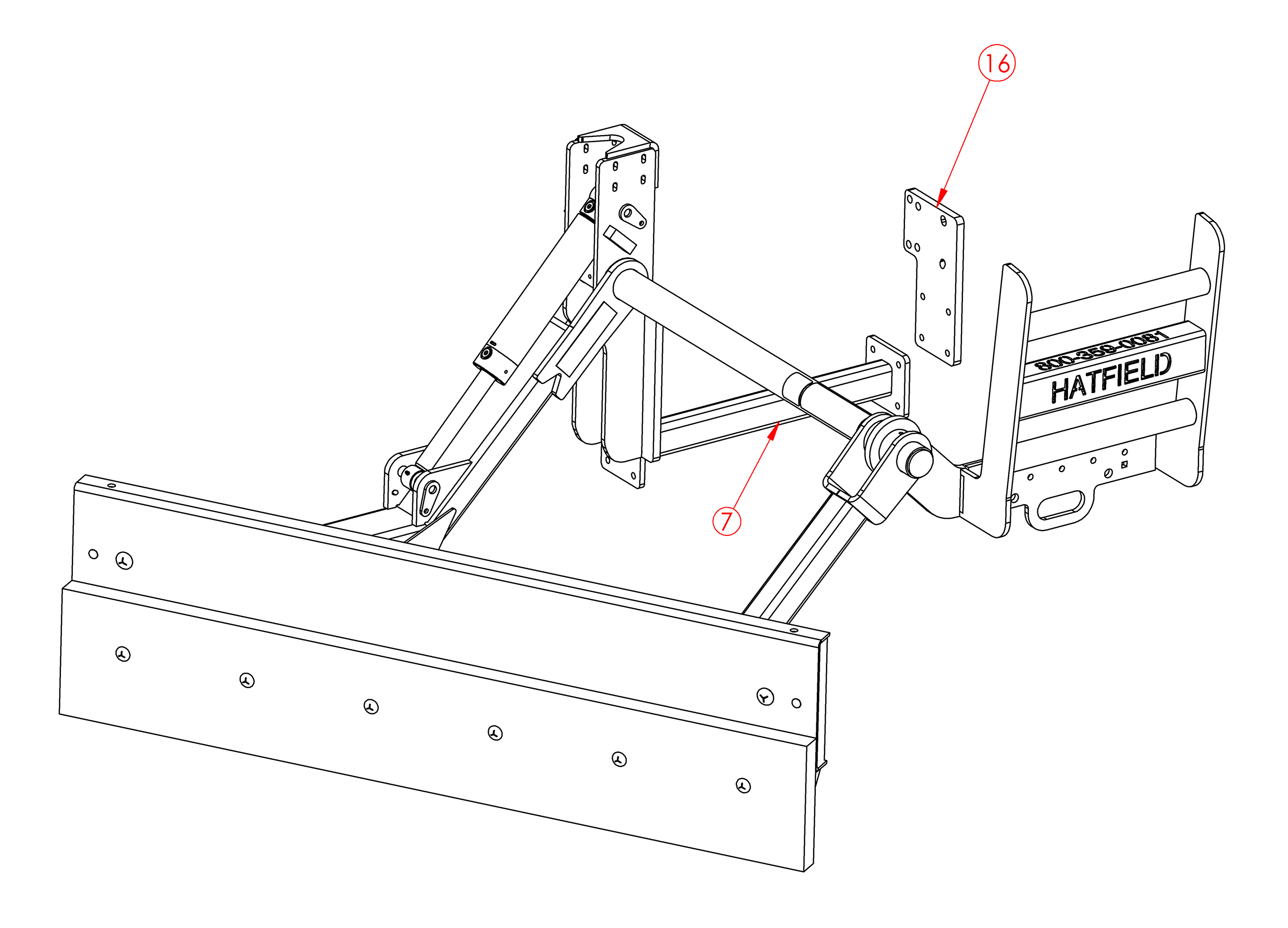
| Part | Quantity | Description | Part Number |
|---|---|---|---|
Accessories
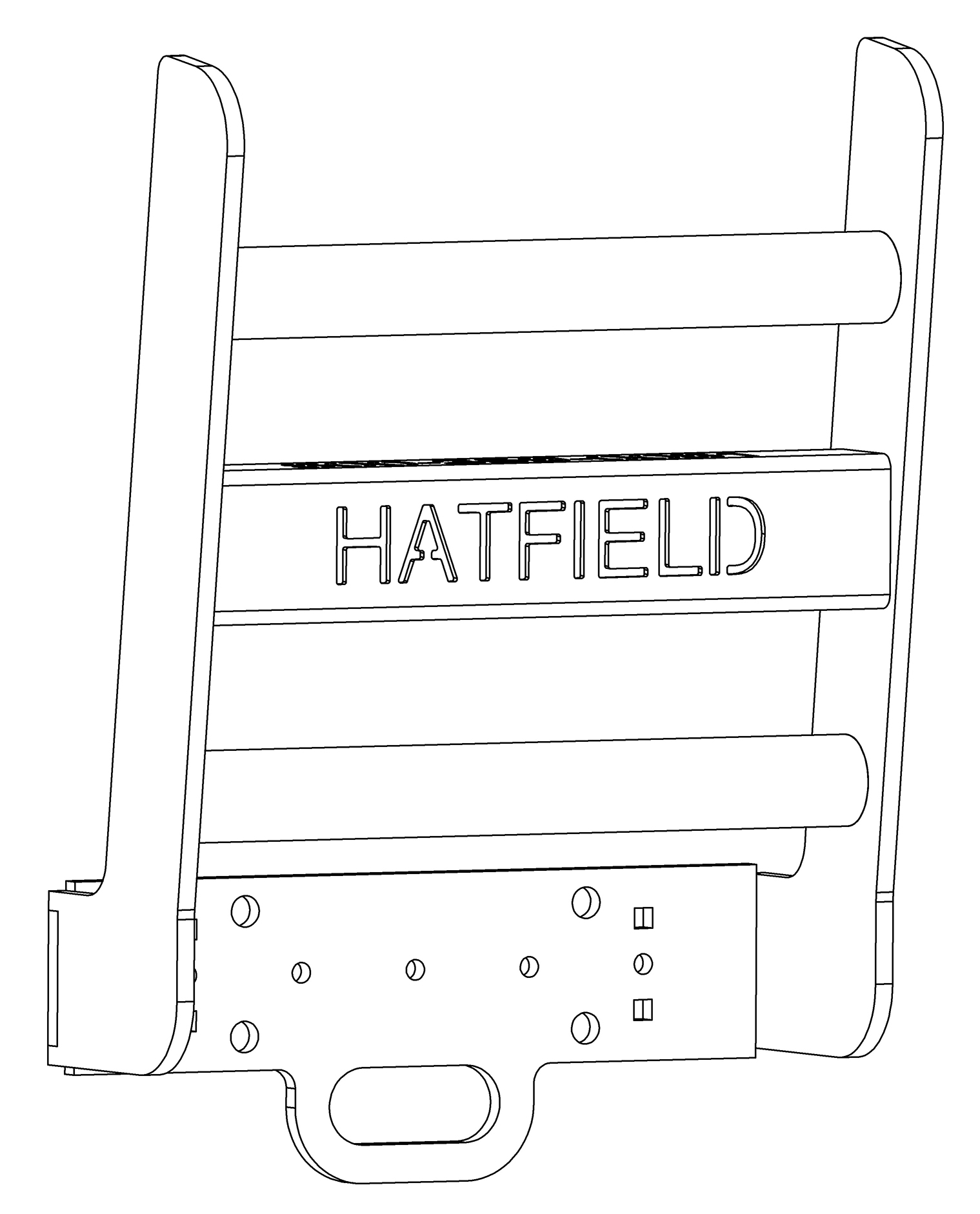
530-2047 - FRONT GRILL GUARD ASSEMBLY
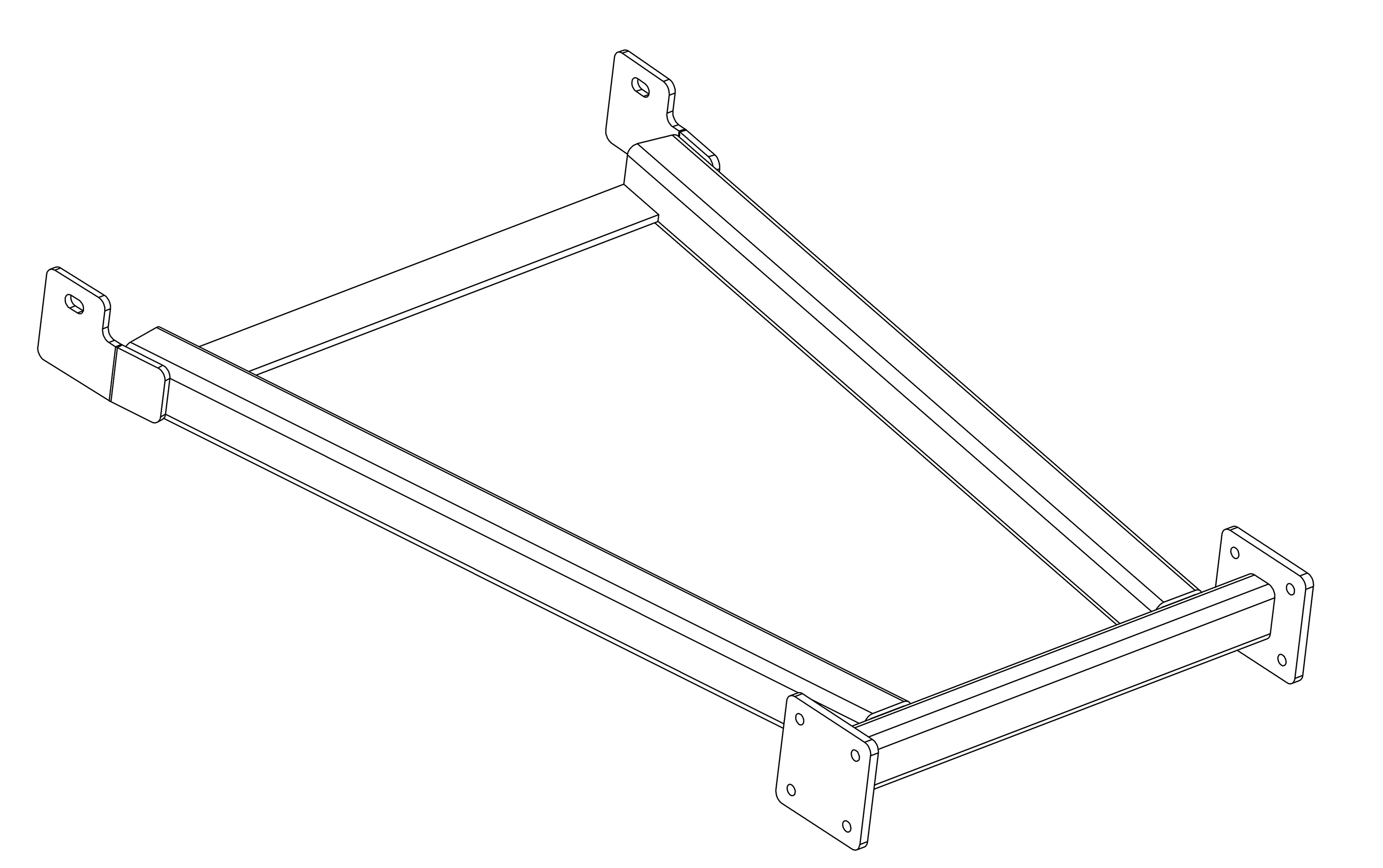
530-2049 - LOWER A FRAME ASSEMBLY
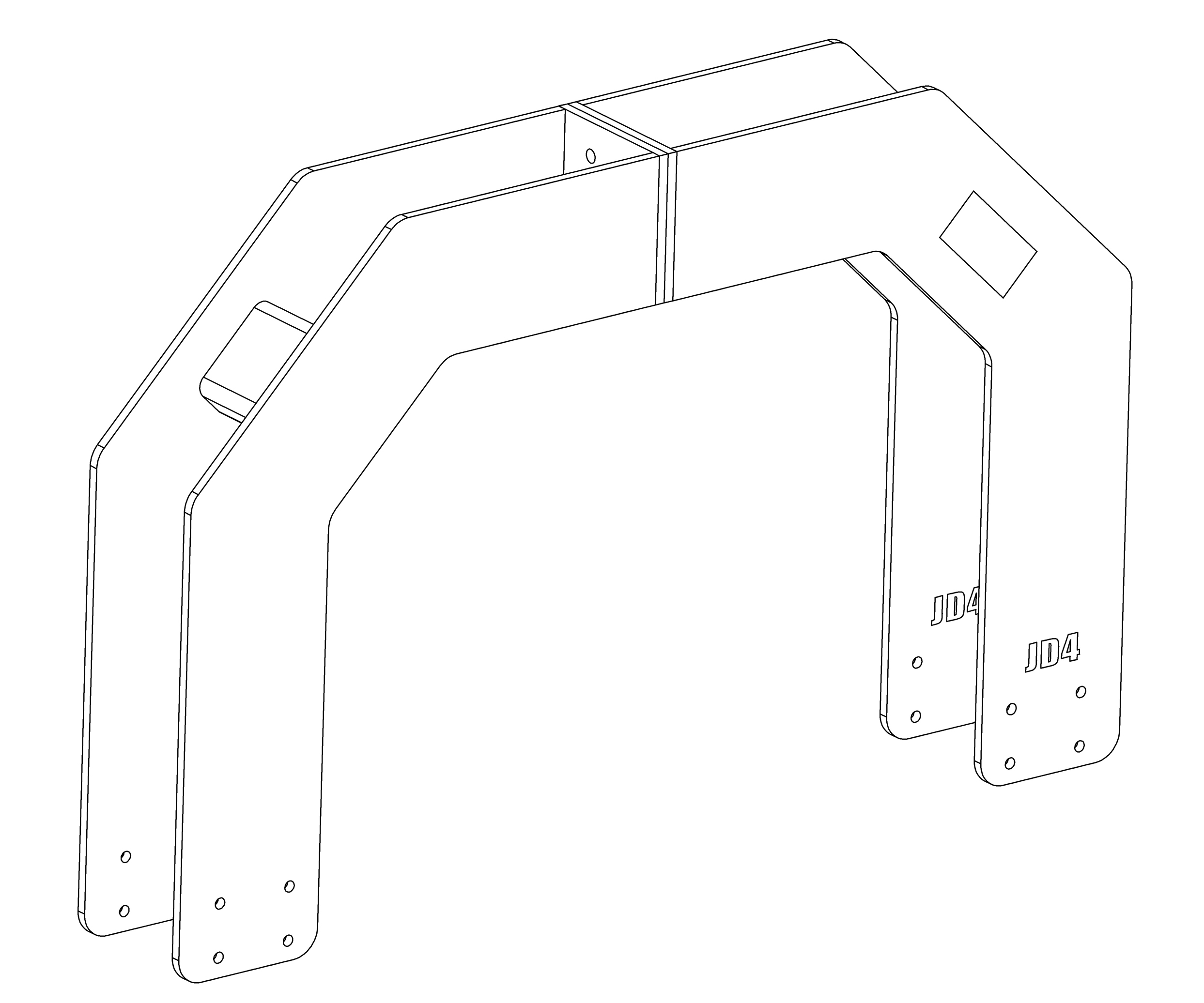
530-2101- OVER THE HOOD SUPPORT
John Deere 5 Series
5045E, 5055E, 5065E, 5075E, 5050E, 5060E, 5067E, 5075E
Open Station
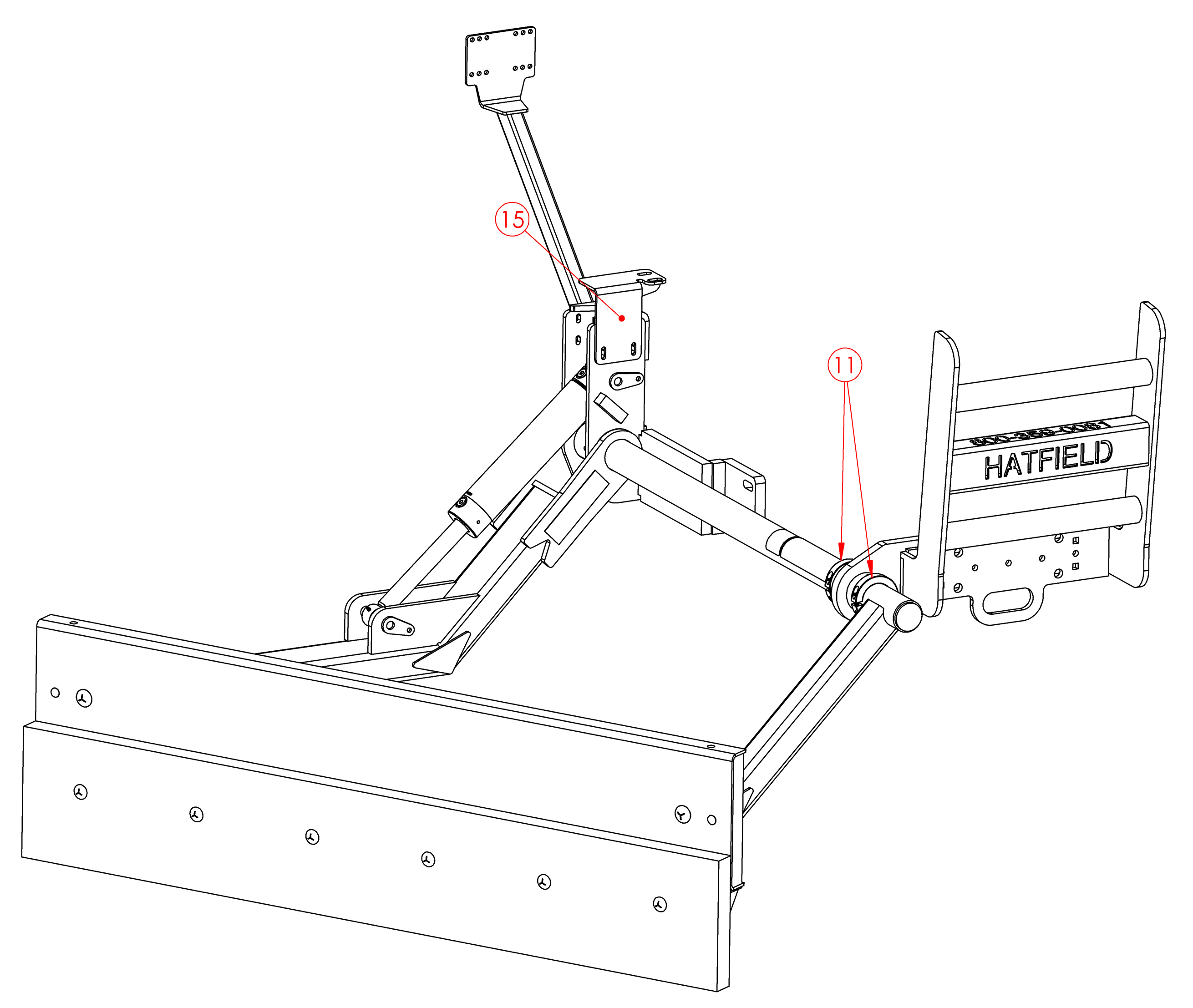
| Part | Quantity | Description | Part Number |
|---|---|---|---|
| 11 | 2 | Clamping Two-Piece Shaft Collar | 6436K87 |
| 15 | 1 | John Deere 5 Series, Exhaust Manifold | 530-2503 |
Accessories
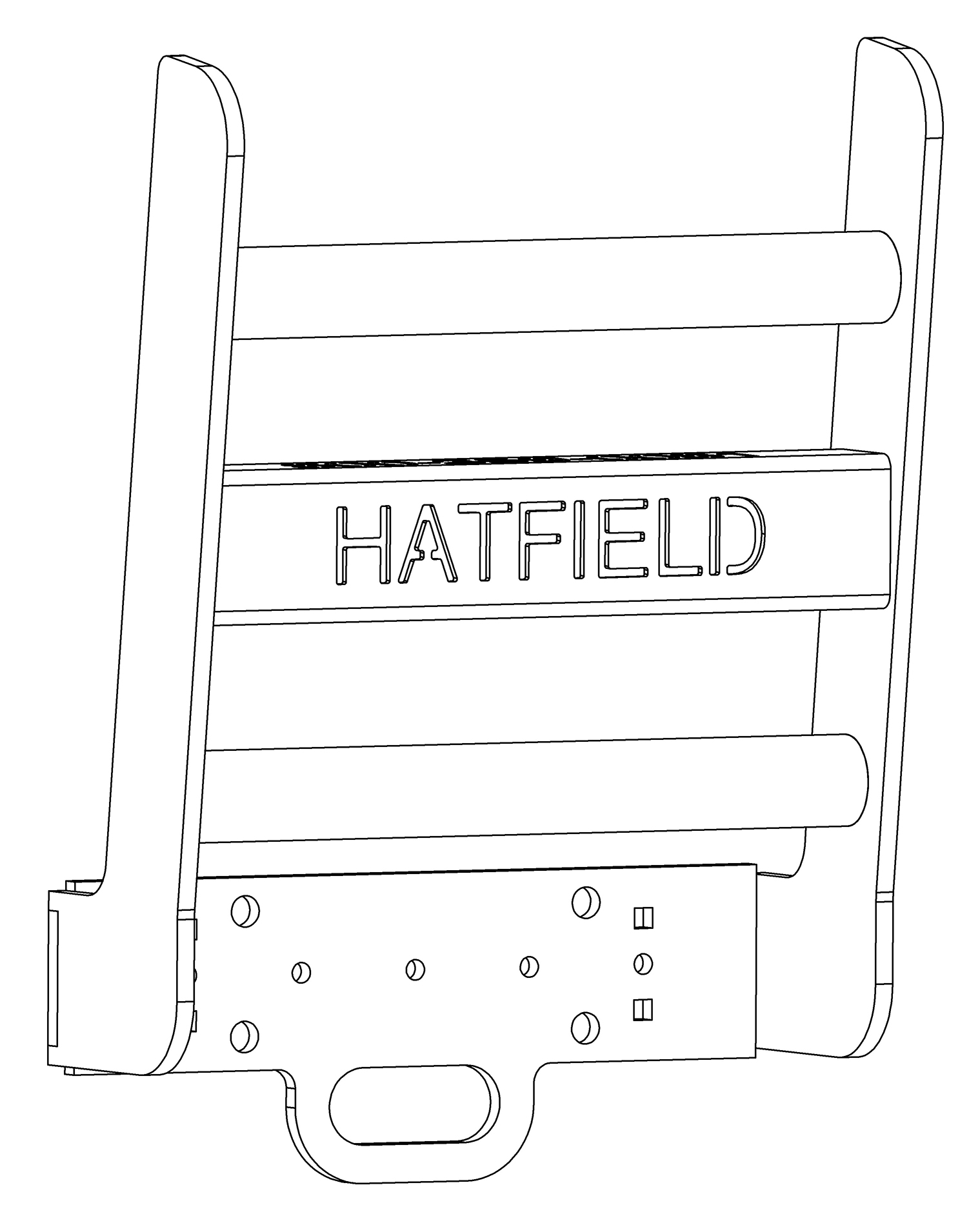
530-2047 - FRONT GRILL GUARD ASSEMBLY
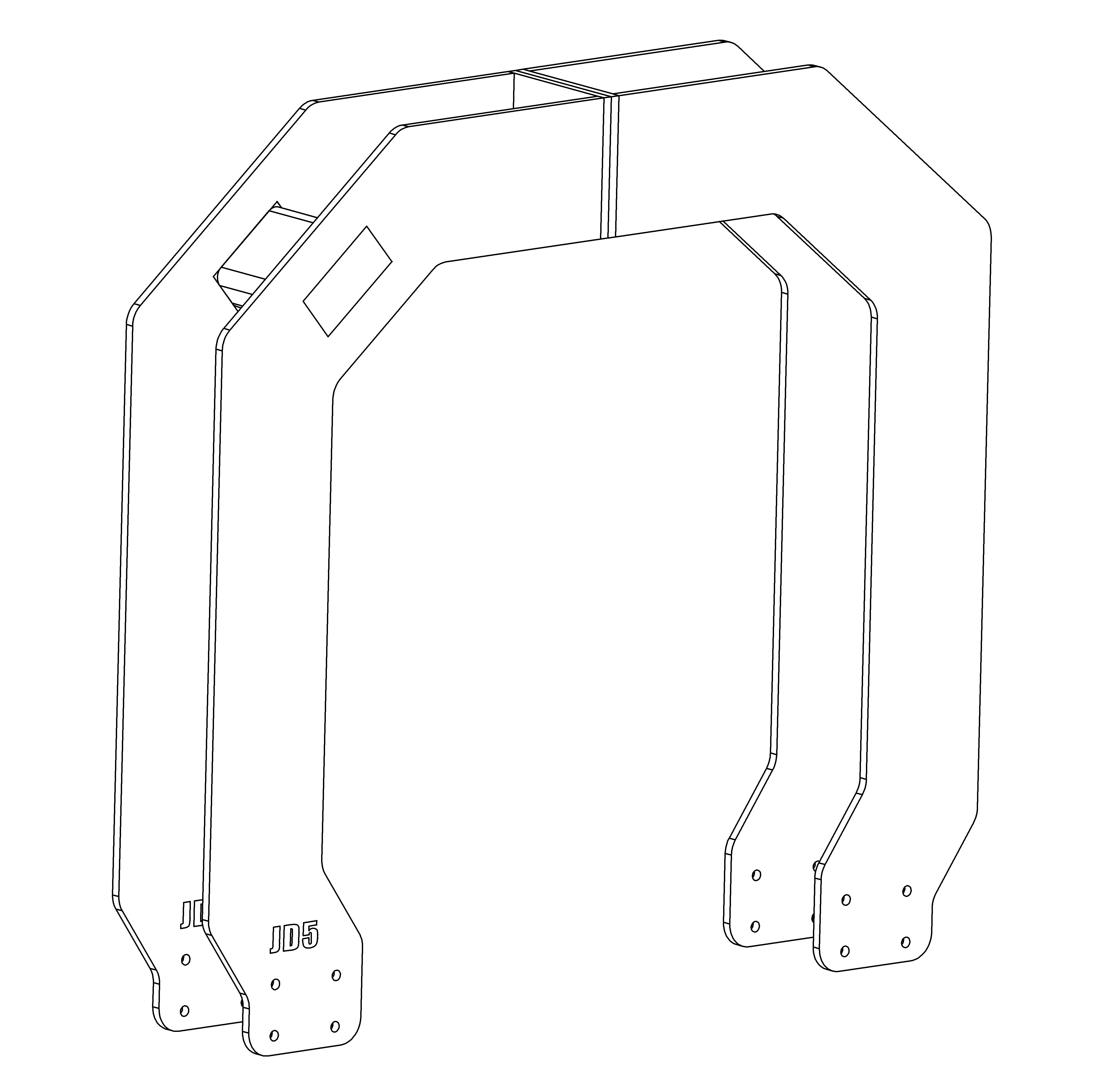
530-2102 - OVER THE HOOD SUPPORT
Cab
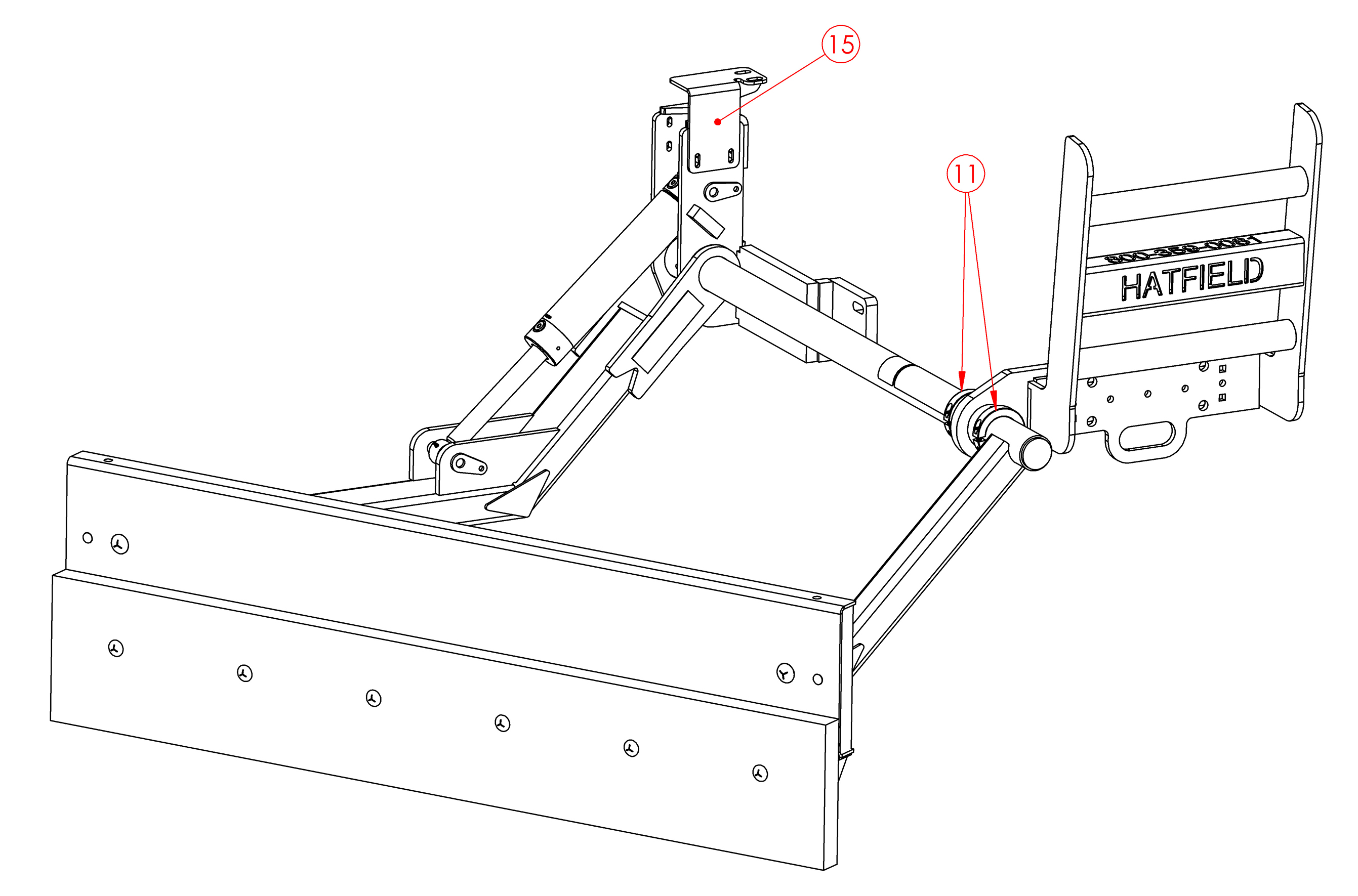
| Part | Quantity | Description | Part Number |
|---|---|---|---|
| 11 | 2 | Clamping Two-Piece Shaft Collar | 6436K87 |
| 15 | 1 | John Deere 5 Series, Exhaust Manifold | 530-2503 |
Accessories
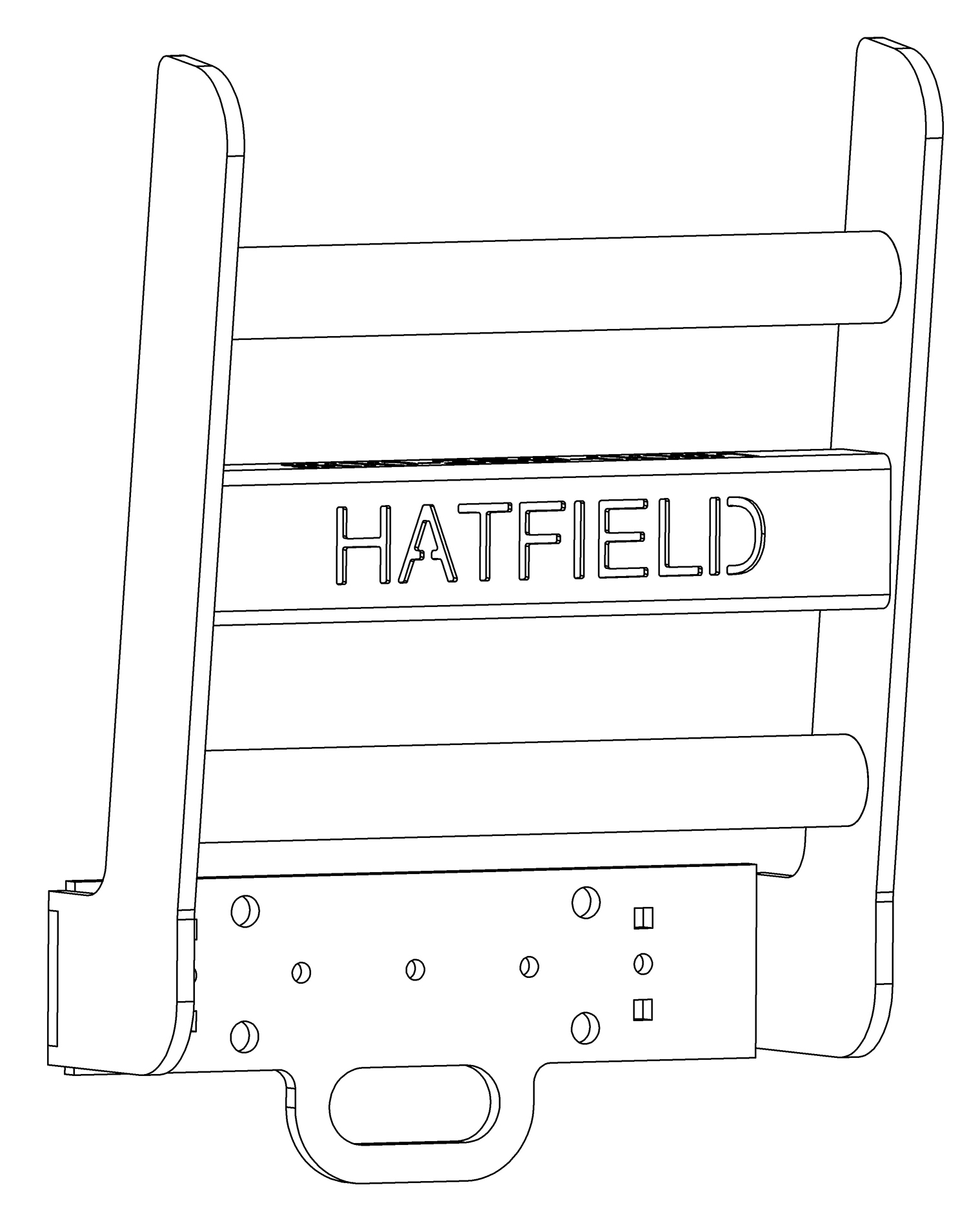
530-2047 - FRONT GRILL GUARD ASSEMBLY
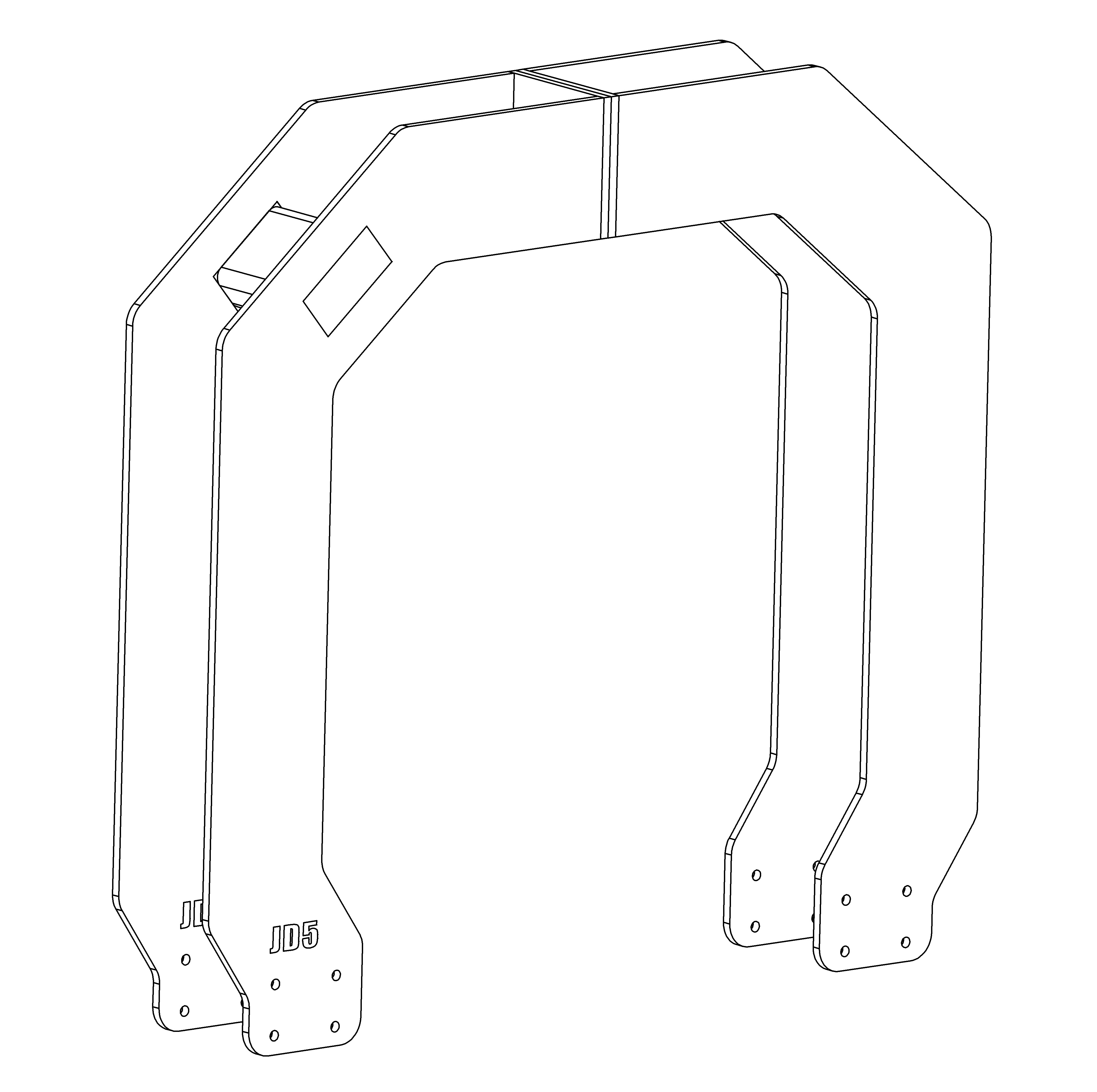
530-2102 - OVER THE HOOD SUPPORT
Kubota MX Series Tractors Parts
MX4800, MX5200, MX5800, MX4900, MX5400, MX6000
Open Station
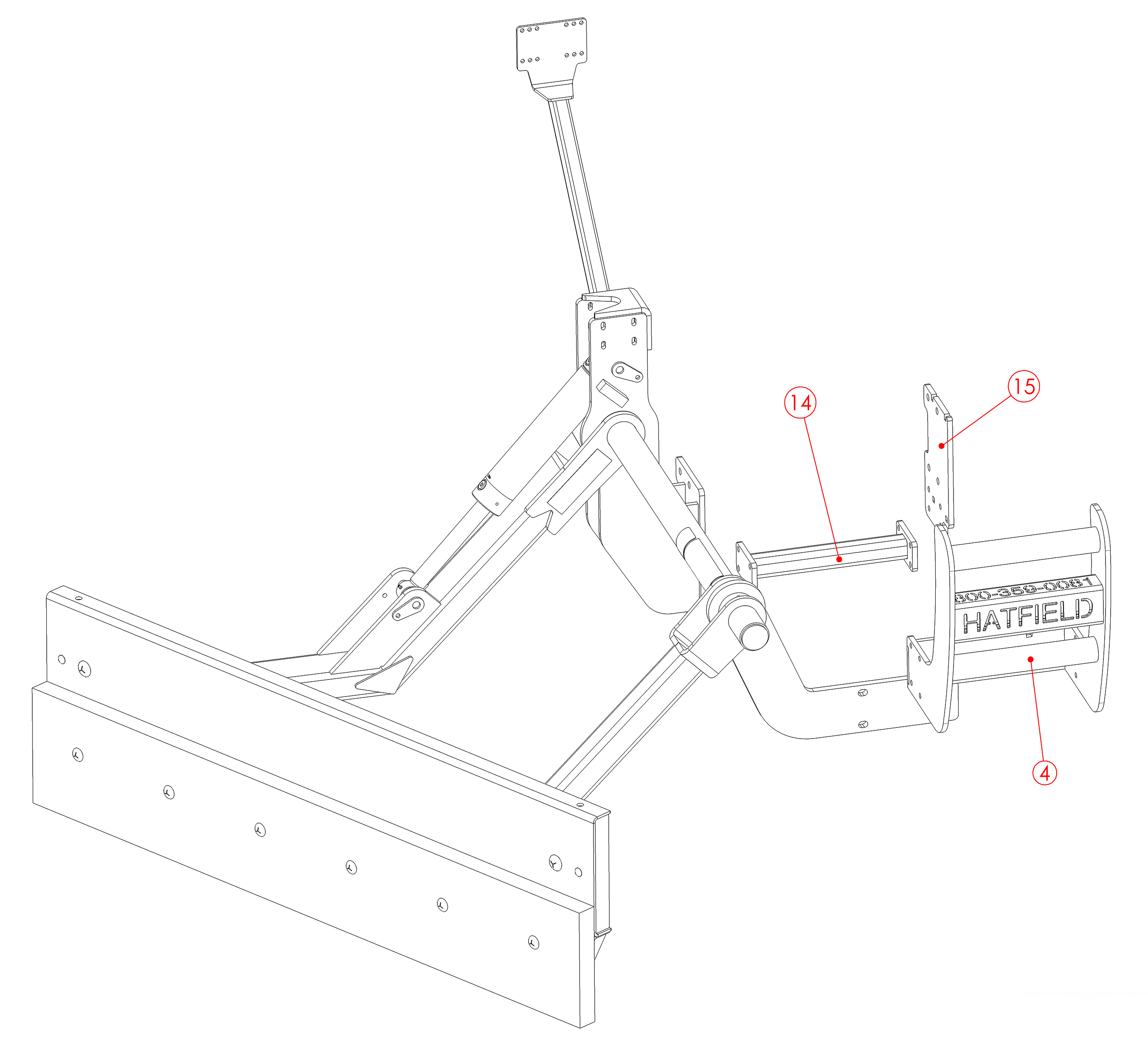
| Part | Quantity | Description | Part Number |
|---|---|---|---|
| 4 | 1 | Kubota MX5400, Grill Guard Assembly | 540-2052 |
| 14 | 1 | Kubota MX5400 Belly Support | 540-2041 |
| 15 | 1 | Kubota MX5400, Left Base Plate 5 Inch Tube | 540-5440 |
Accessories
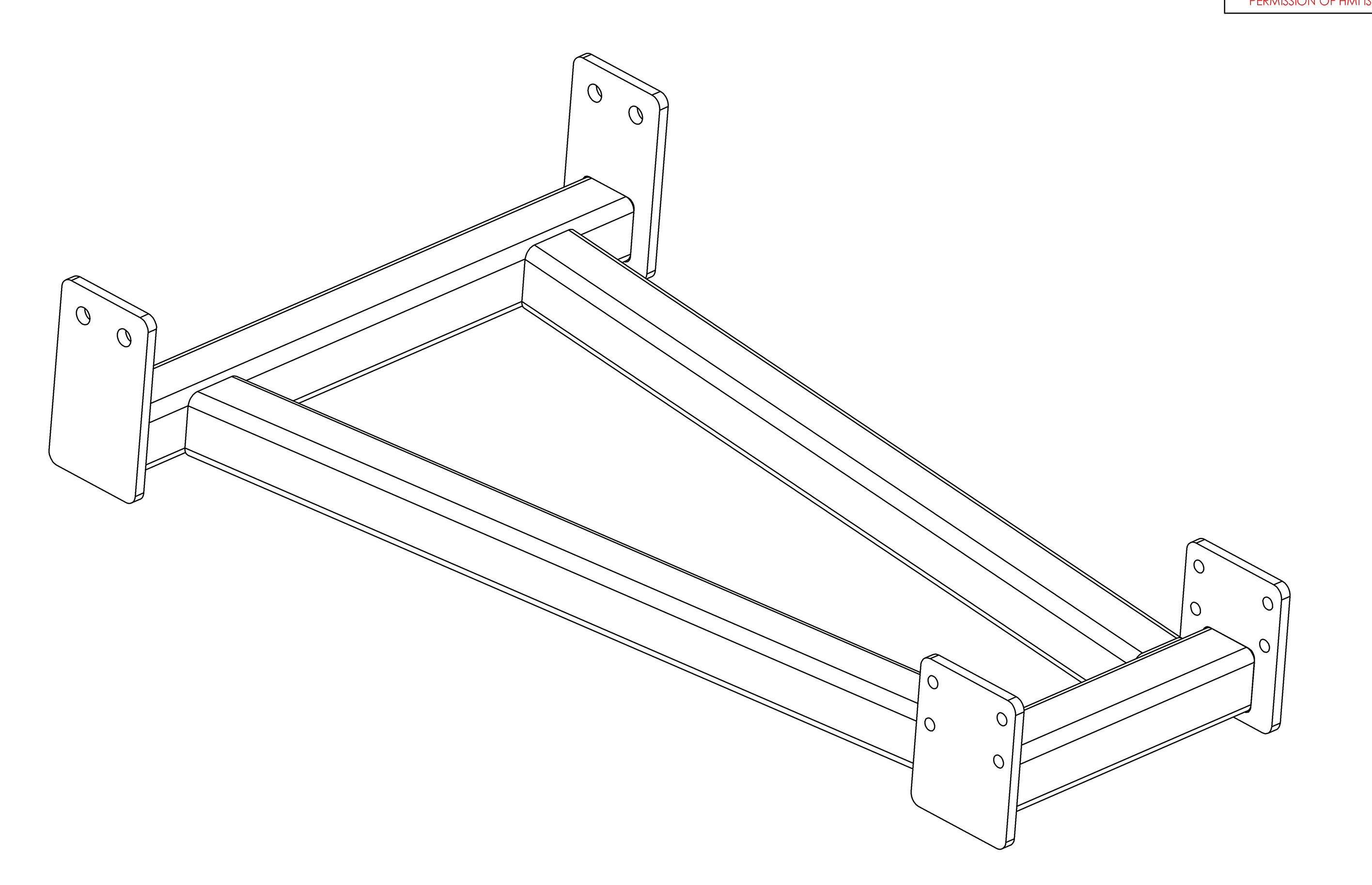
540-2040, KUBOTA MX5400, LOWER A FRAME ASSEMBLY
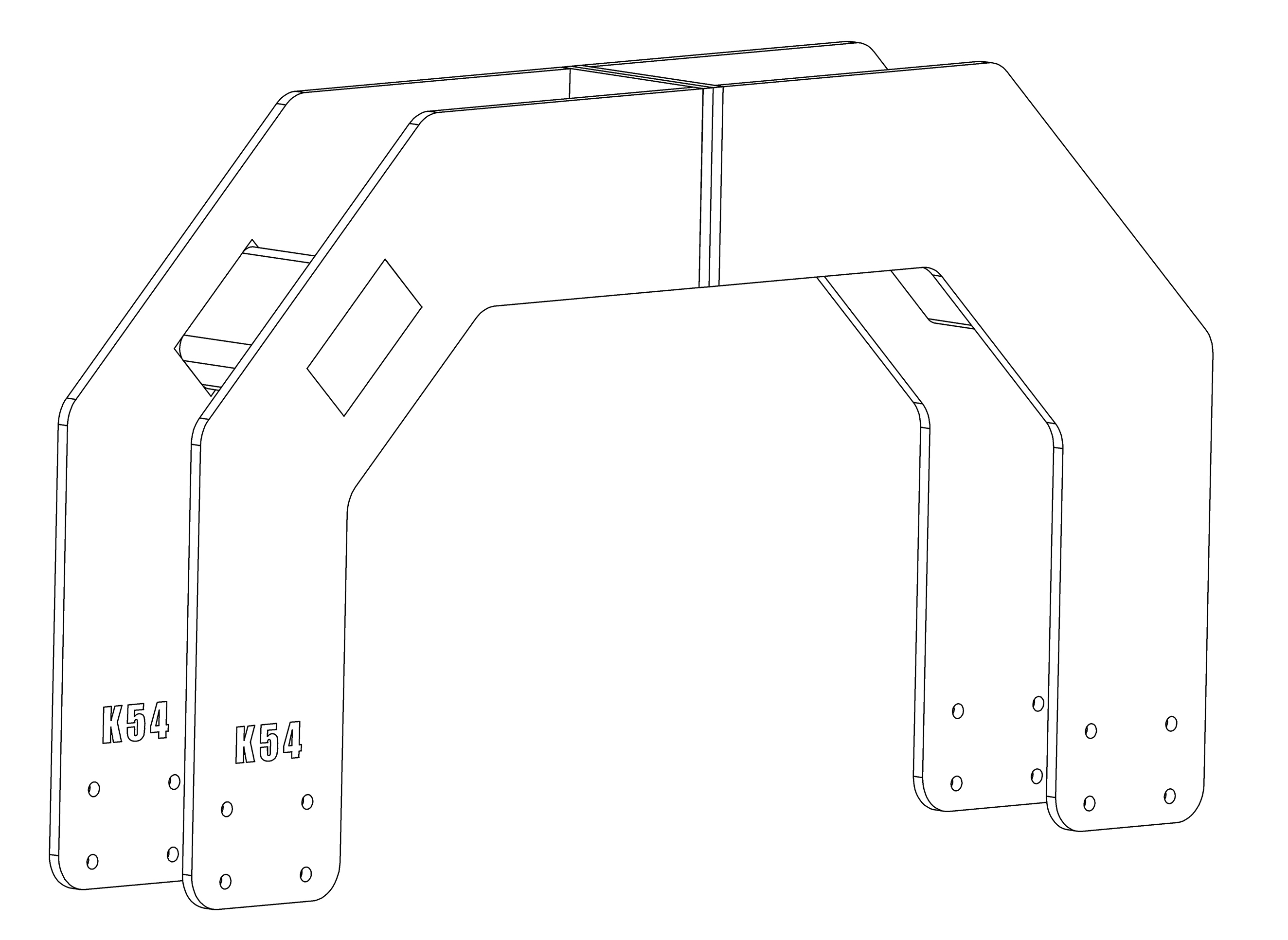
540-2053 KUBOTA MX5400, OVER THE HOOD SUPPORT
Cab
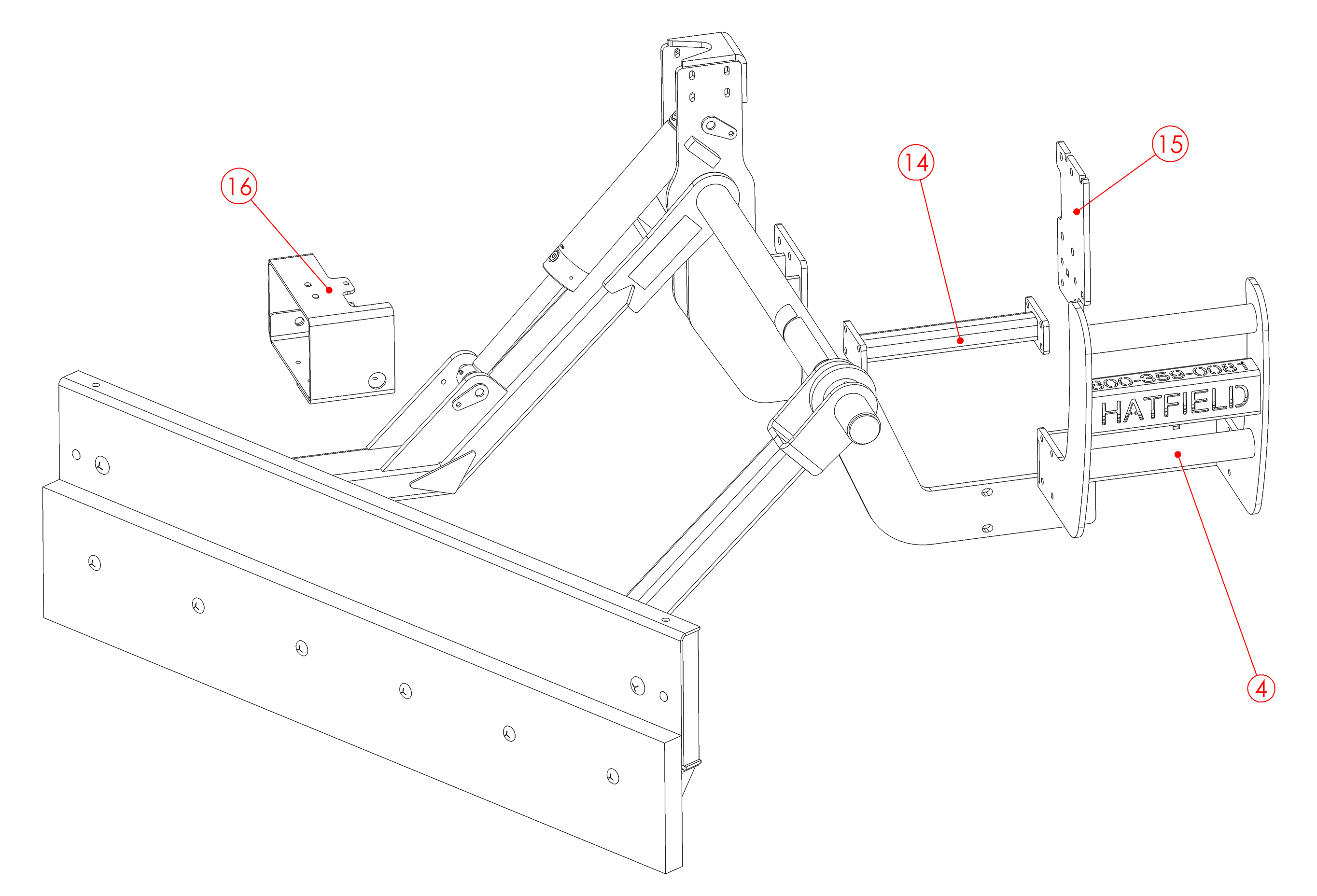
| Part | Quantity | Description | Part Number |
|---|---|---|---|
| 4 | 1 | Kubota MX5400, Grill Guard Assembly | 540-2052 |
| 14 | 1 | Kubota MX5400 Belly Support | 540-2041 |
| 15 | 1 | Kubota MX5400, Left Base Plate 5 Inch Tube | 540-5440 |
| 16 | 1 | Kubota MX5400, Valve Top Plate | 540-5415 |
Accessories
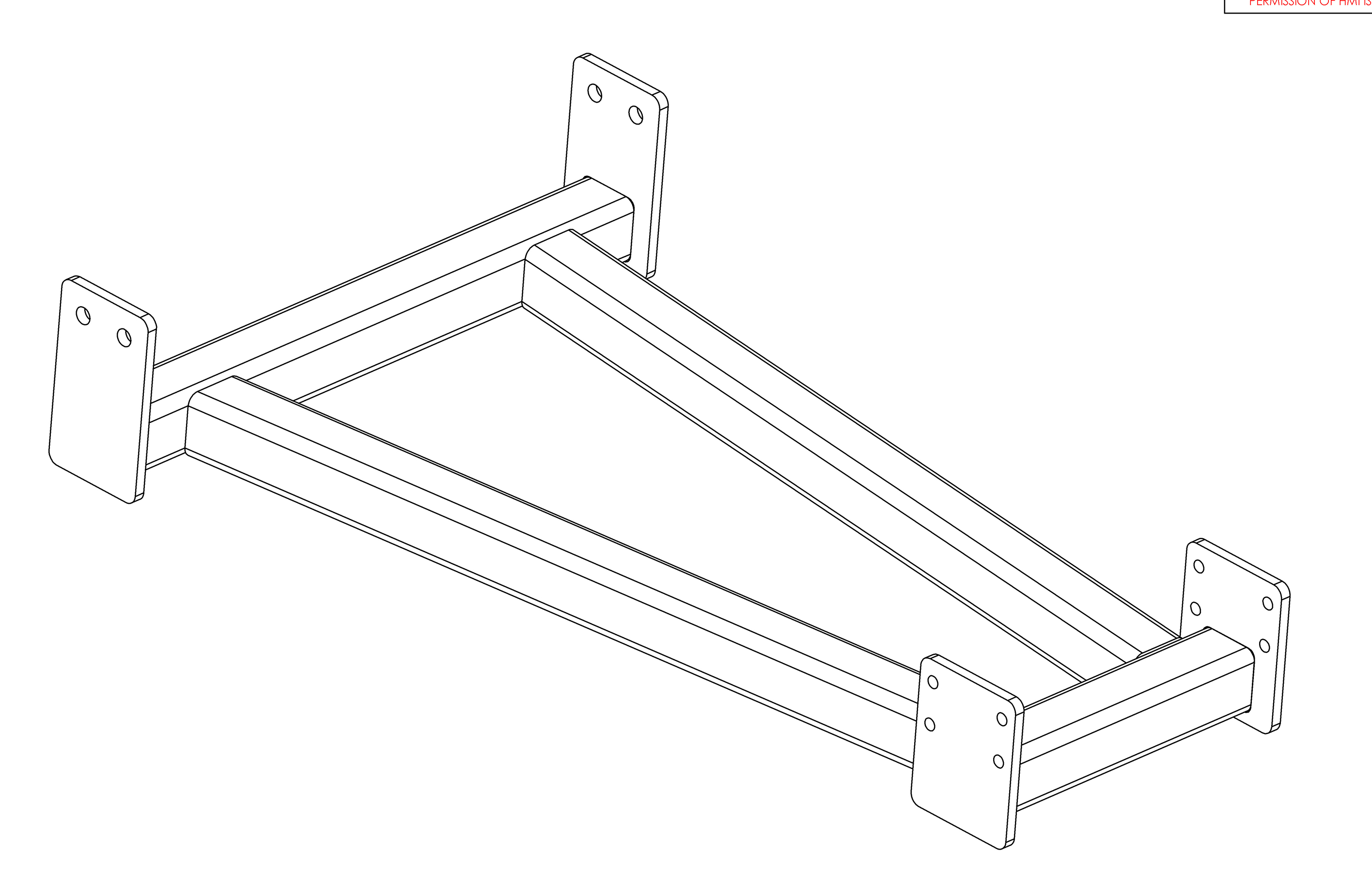
540-2040, KUBOTA MX5400, LOWER A FRAME ASSEMBLY
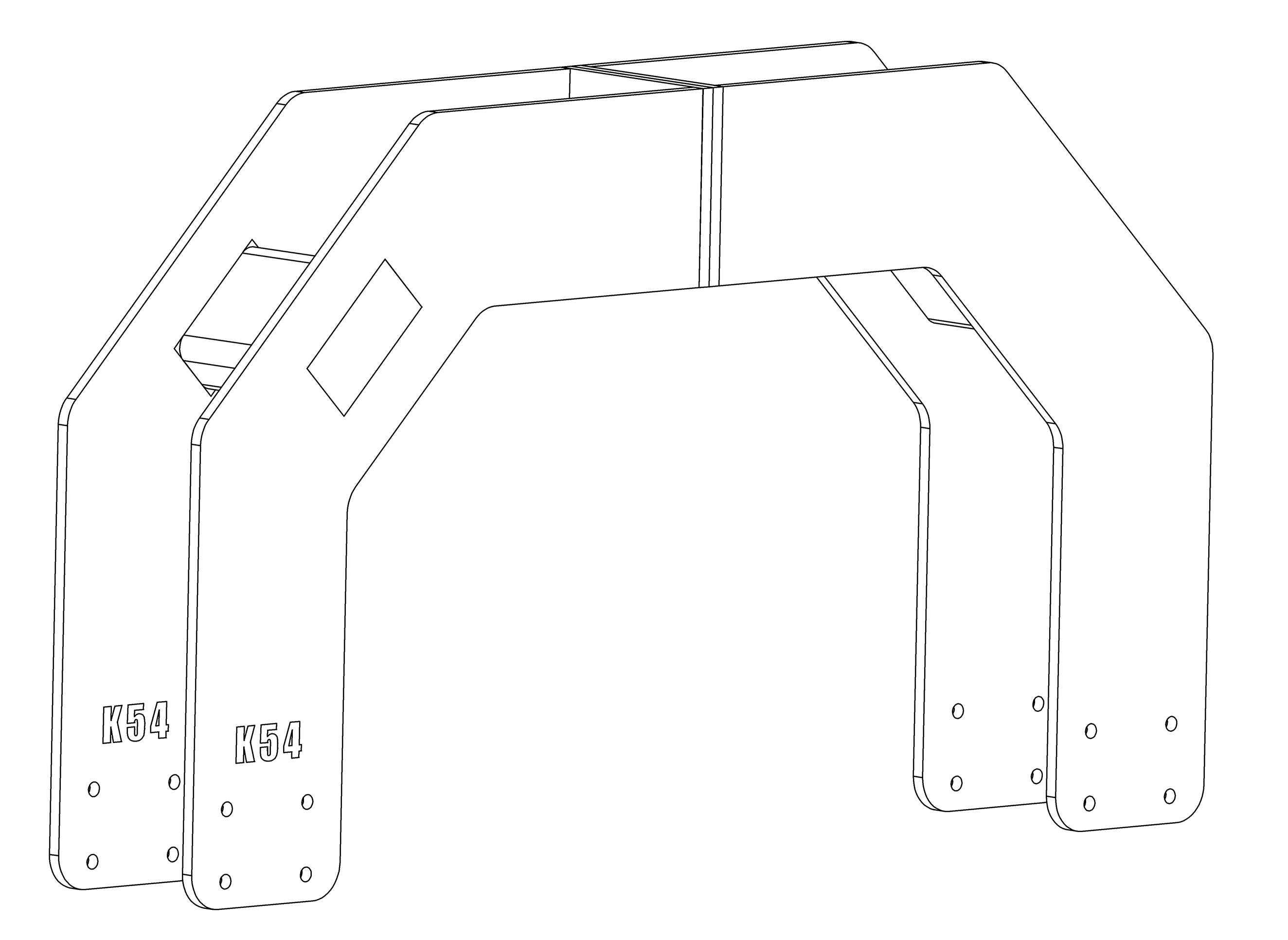
540-2053 KUBOTA MX5400, OVER THE HOOD SUPPORT
Kubota L Series Tractors Parts
L2501, L3301, L3901, L4701
Open Station
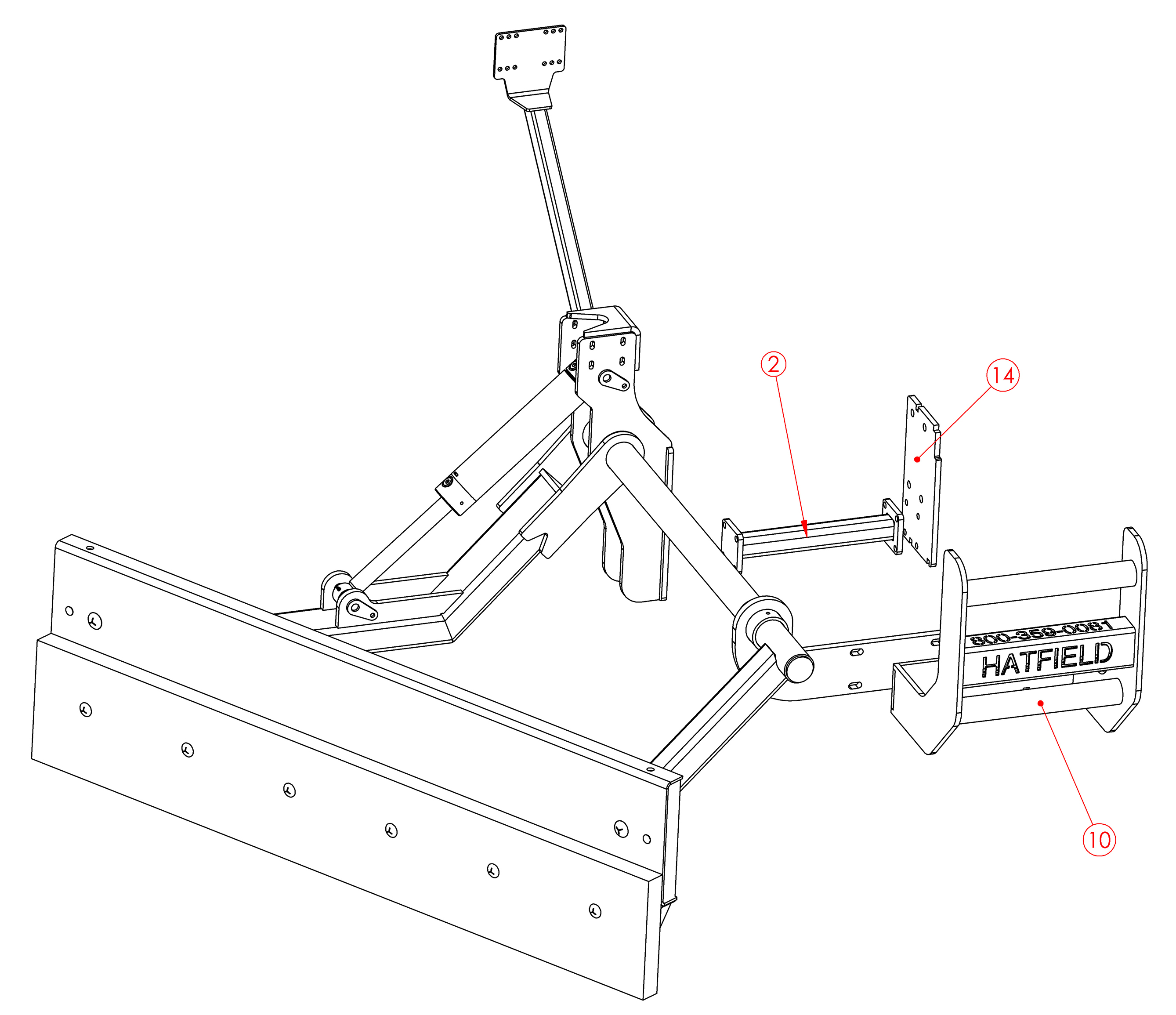
| Part | Quantity | Description | Part Number |
|---|---|---|---|
| 2 | 1 | Kubota L3301-L4701, Pushblade, Belly Cross Support Assembly | 540-2202 |
| 10 | 1 | Kubota L3301, Grill Guard Assembly | 540-2301 |
| 14 | 1 | Kubota L3301, Rear Left Frame Base Plate | 540-3302 |
L2502, L3302, L3902, L4802
Open Station
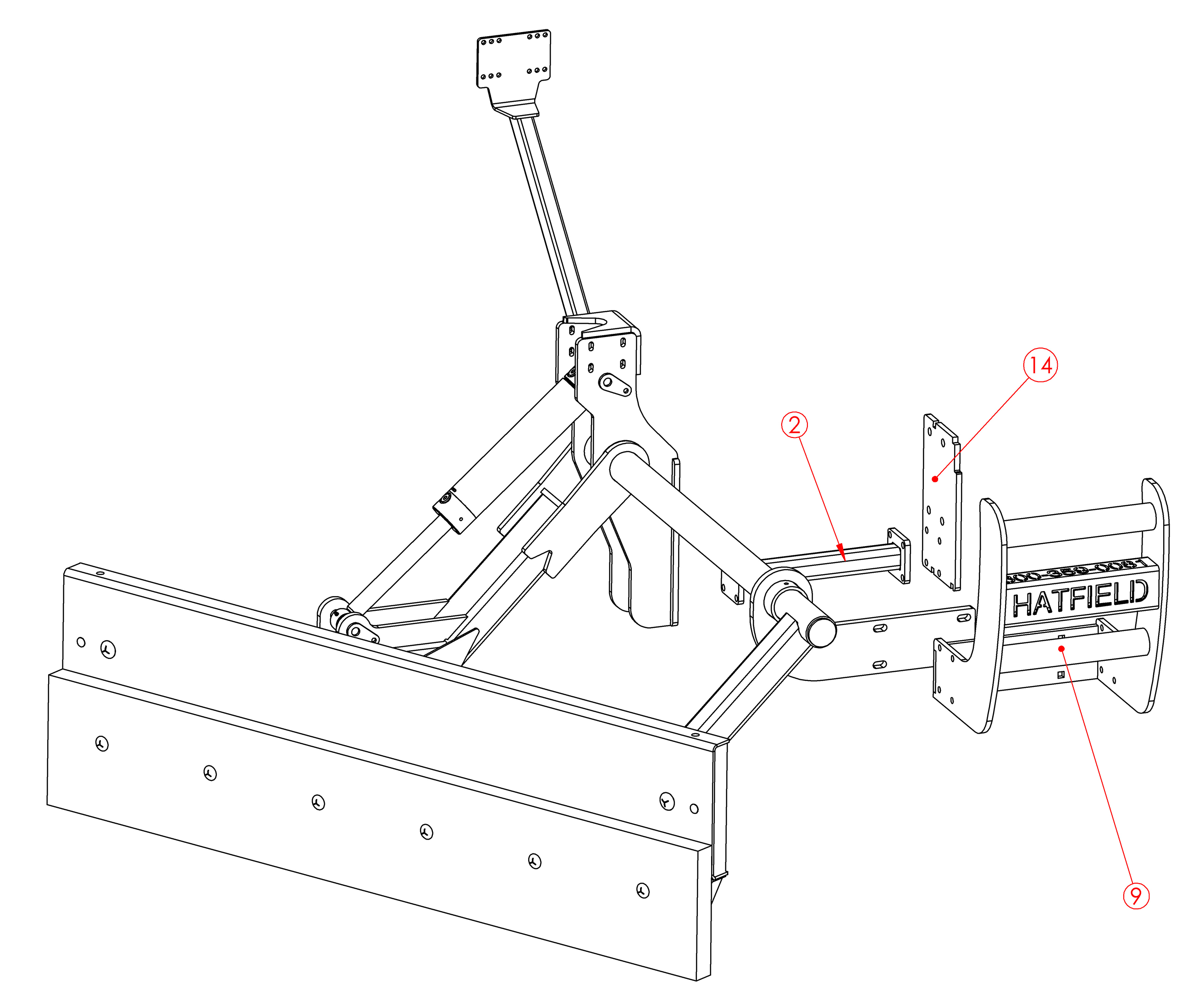
| Part | Quantity | Description | Part Number |
|---|---|---|---|
| 2 | 1 | Kubota L3301-L4701, Pushblade, Belly Cross Support Assembly | 540-2202 |
| 9 | 1 | Kubota Kubota MX5400, Grill Guard Assembly | 540-2502 |
| 14 | 1 | Kubota L3301, Rear Left Frame Base Plate | 540-3302 |
General Parts for John Deere Series 3,4 & 5 and Kubota Series MX & L Tractors
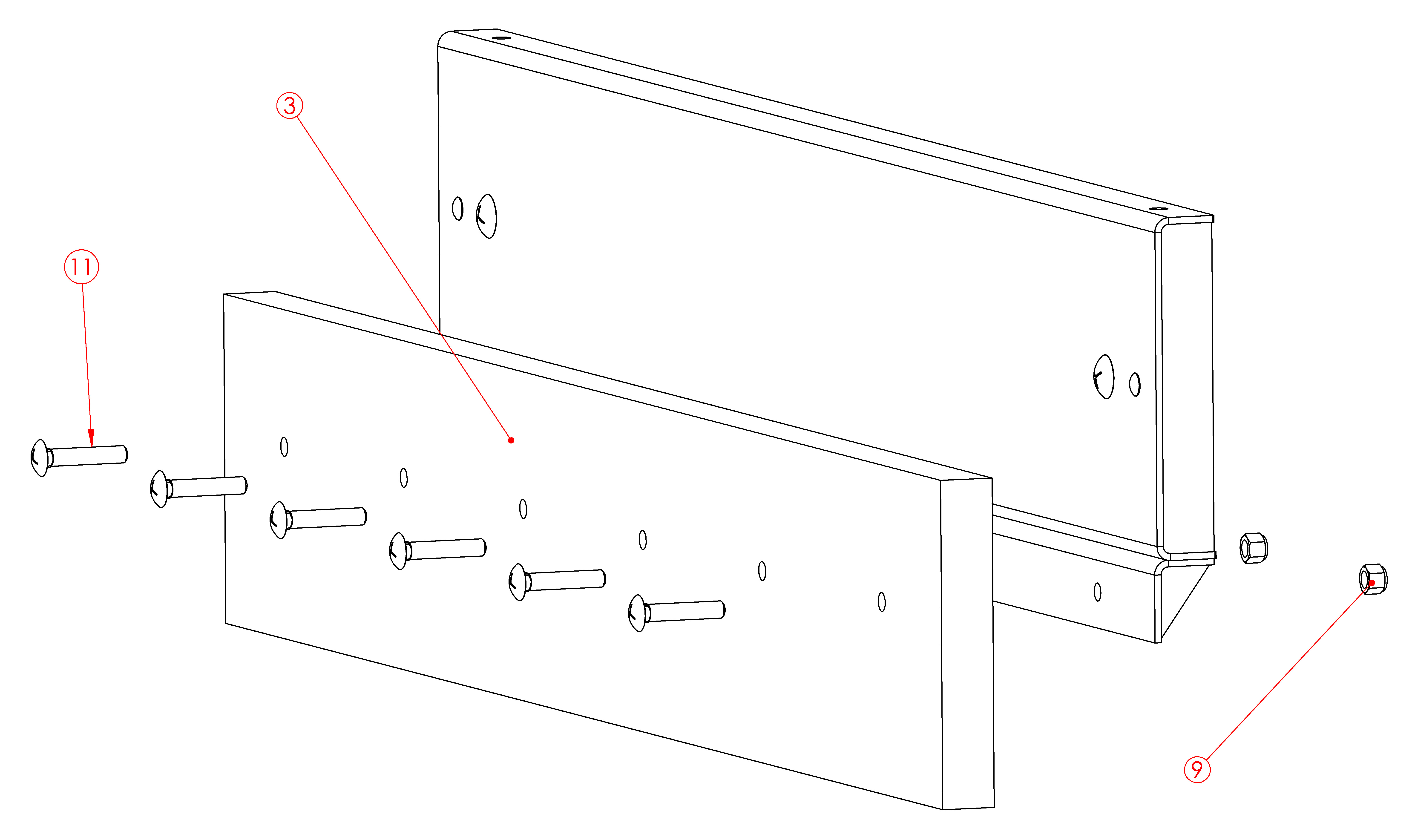
| Part | Quantity | Description | Part Number |
|---|---|---|---|
| 3 | 1 | Push Up Blade, UHMW, 72 x 12 x 2' | 400-5672 |
| 9 | 13 | Nylon Lock Nut 5/8" x 11, Grade 5 Zinc | NN58-11-G5ZN |
| 11 | 6 | Carriage Bolt, 5/8" x 11 x 3 1/4", Grade 5 Zinc | CB58-11-112-G5ZN |
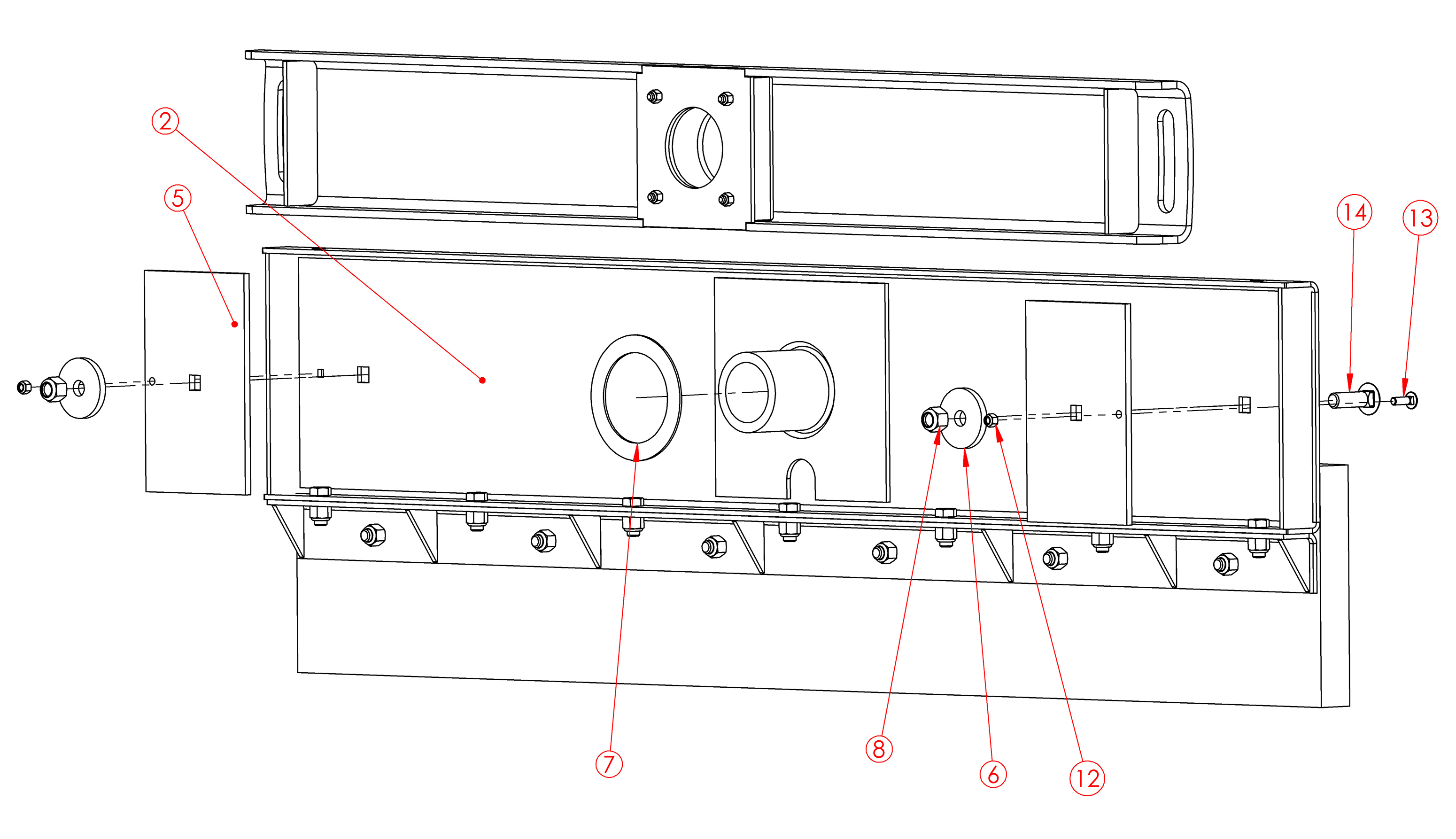
| Part | Quantity | Description | Part Number |
|---|---|---|---|
| 2 | 1 | Midmount Tractor, Pushblade, Outer Channel Assembly | 500-2001 |
| 5 | 2 | Midmount Tractor, Pushblade Outer Bearing Pad | 500-3421 |
| 6 | 2 | Midmount Tractor, Pushblade Pivot Bolt Washer | 500-3409 |
| 7 | 1 | Midmount Tractor, Pushblade Center Bearing Pad | 500-3422 |
| 8 | 2 | Nylon Lock Nut 3/4" -10, Grade 5 Zinc | NN34-10-G5ZN |
| 12 | 2 | Nylon Lock Nut 3/8" -16, Grade 5 Zinc | NN38-16-G5ZN |
| 13 | 2 | Carriage Bolt, 3/8"-16 X 1-1/4", Grade 5 Zinc | CB38-16-114-G5ZN |
| 14 | 2 | Carriage Bolt, 3/4"-10 X 2-1/2", Grade 5 Zinc | CB34-10-212-G5ZN |
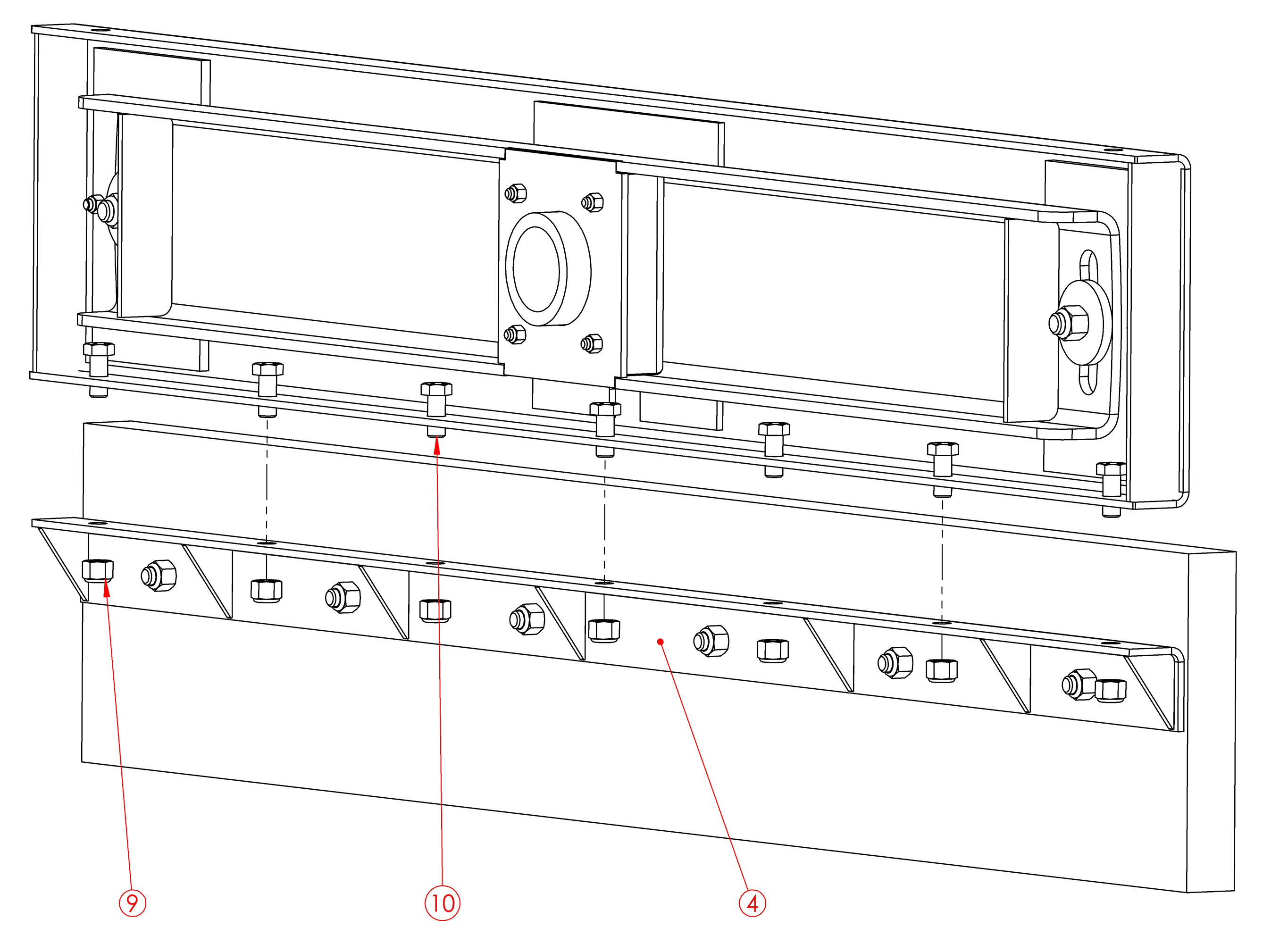
| Part | Quantity | Description | Part Number |
|---|---|---|---|
| 4 | 1 | Midmount Tractor, Pushblade, Lower Angle Assembly | 500-2002 |
| 9 | 13 | Nylon Lock Nut 5/8" x 11, Grade 5 Zinc | NN58-11-G5ZN |
| 10 | 7 | Hex Bolt 5/8"-11 X 1-1/2", Grade 5 Zinc | CB58-11-112-G5ZN |
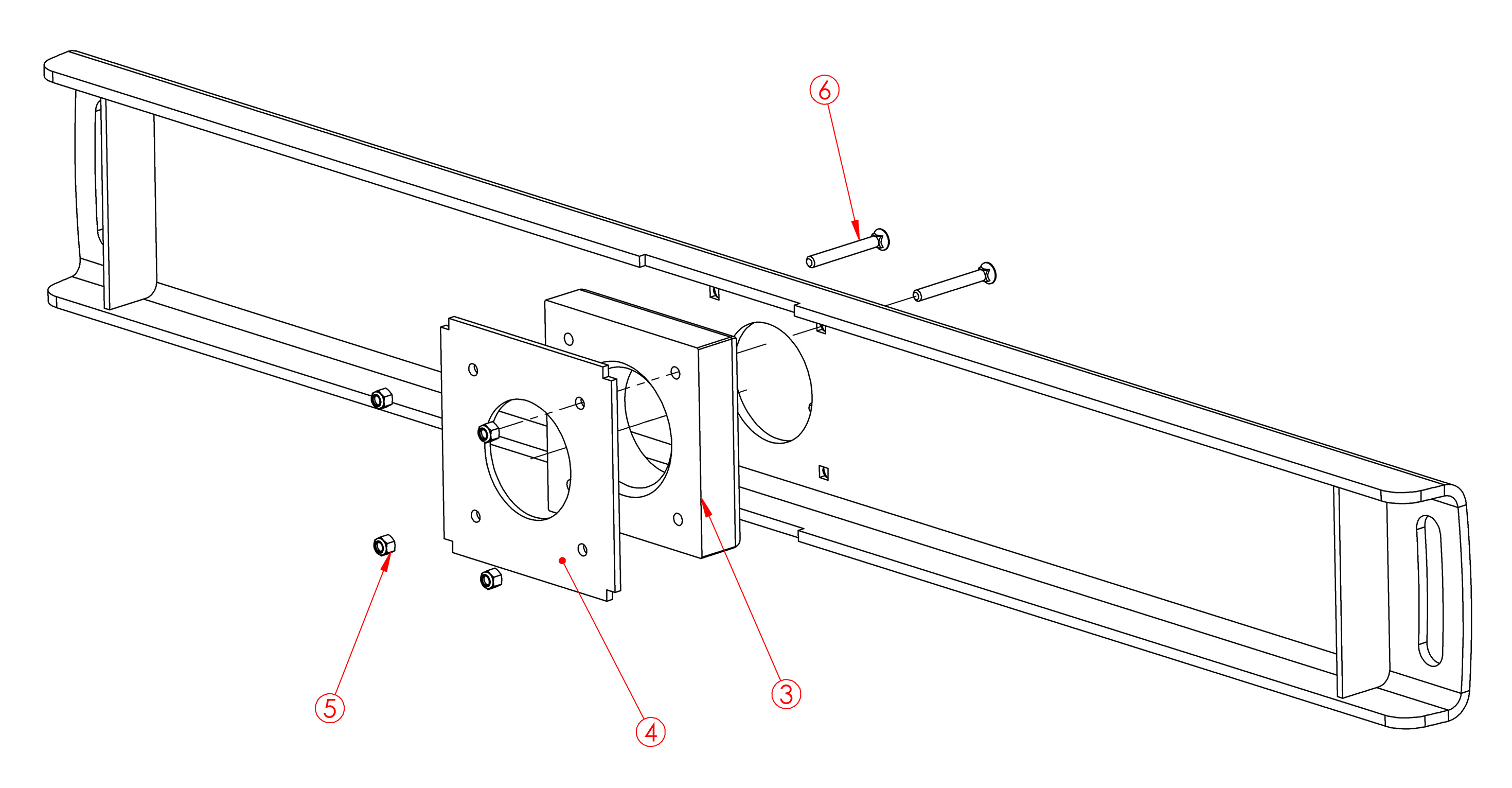
| Part | Quantity | Description | Part Number |
|---|---|---|---|
| 3 | 1 | Midmount Tractor, Push Blade, UHMW Swivel Block | 500-3420 |
| 4 | 1 | Midmount Tractor, Push Blade, Center Block Top Plate | 500-3402 |
| 5 | 4 | Nylon Lock Nut 3/8"-16, Grade 5 Zinc | NN38-16-G5ZN |
| 6 | 4 | Plow Bolt, 3/8"-16 X 3 1/4", Grade 5 Zinc | PB3816-314-G5ZN |
Accessories
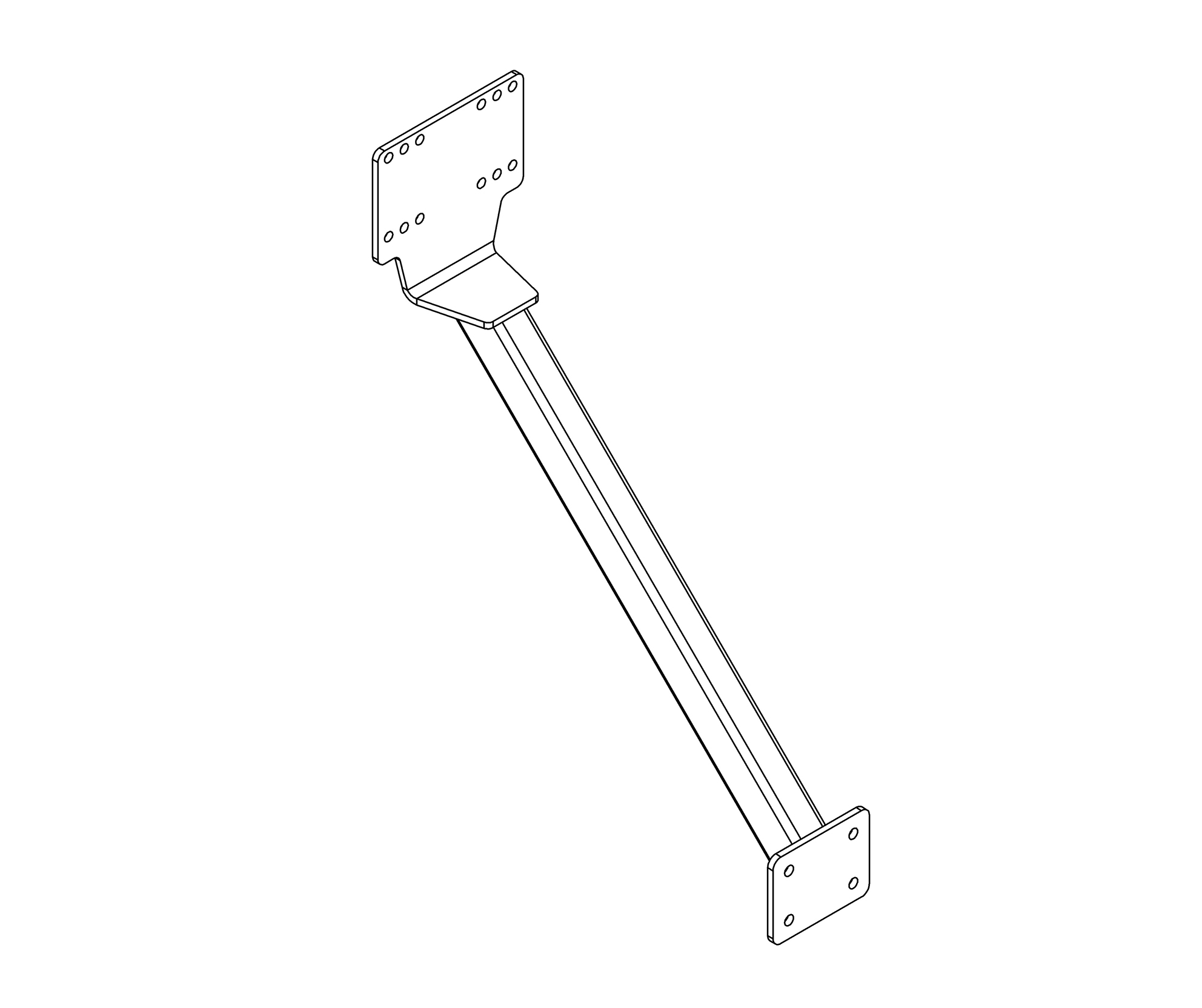
500-2046 - MIDMOUNT TRACTOR, VALVE STAND ASSEMBLY
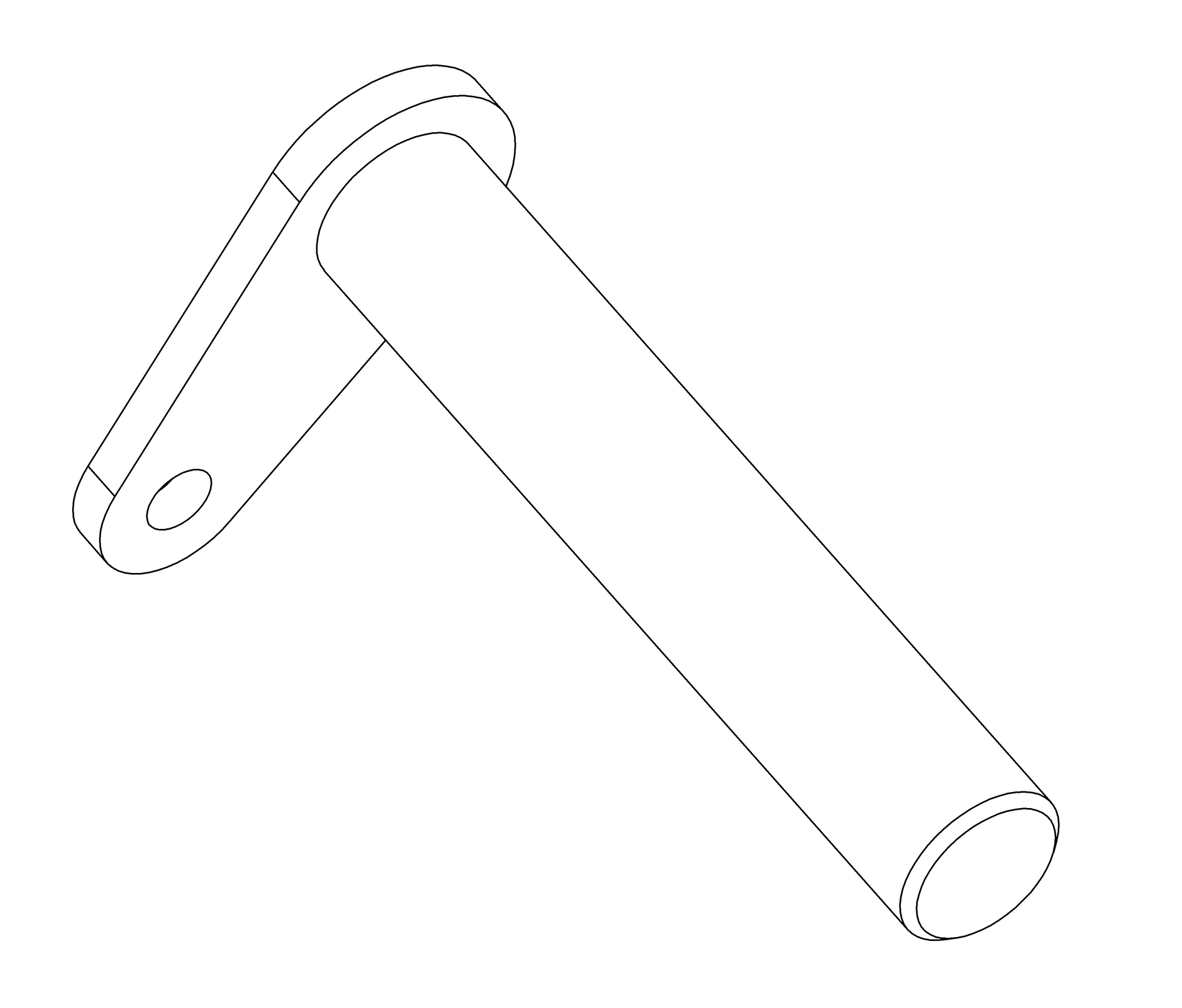
500-2100 - MIDMOUNT TRACTOR, 1.00 INCH PIN ASSEMBLY
Main Office & Manufacturing
1823 Shoestring Road | Gooding, Idaho 83330 | Toll Free: 800.359.8171 | 208.934.5182 | Fax: 208.934.8892
Sales | Parts | Manuals | Financing | Our Company | Contact Us
2025 Hatfield Manufacturing, Inc.
